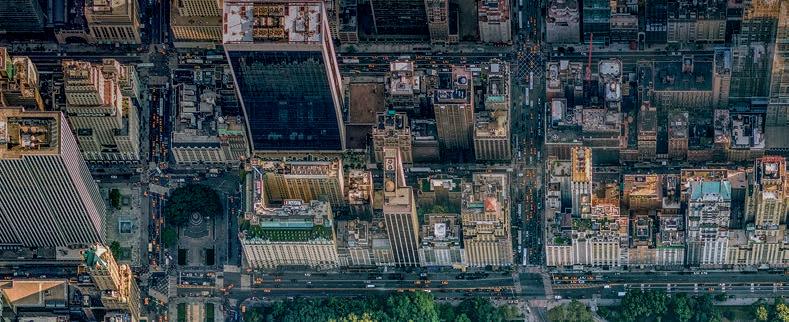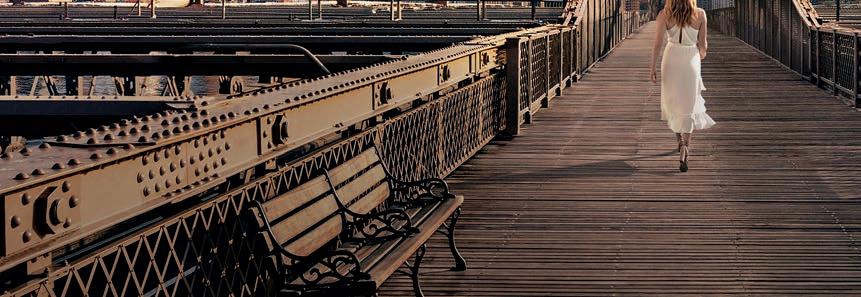

























The



















































The Lodge at Dairy Flat is for groups looking for a magical and memorable experience.

Serviced by your own private concierge; this is not a hotel but a very special destination country house on an organic farm; less than 10 minutes from Daylesford.

Immerse yourself in the beauty of the property; rolling hills, 5 acres of herb, vegetable and cutting gardens (supplying the awarded Lake House Restaurant), olive grove, vineyard, heirloom orchard, lagoon, ornamental gardens full of games, pretty sitting nooks and whimsical sculptures ... There is also electric bikes, a hot tub overlooking the vines and the now famous semi-underground bake house which produces a range of slow fermented sourdough, croissants, fruit danish, doughnuts and more each morning for Lodge guests.
And then there’s the Lodge itself; a sumptuous and carefully curated space rich in texture, colour, art and life. Take your time, connect and build those special memories that will last a lifetime.






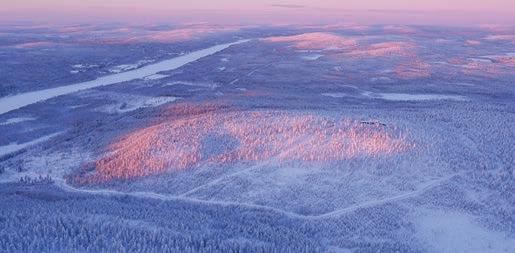


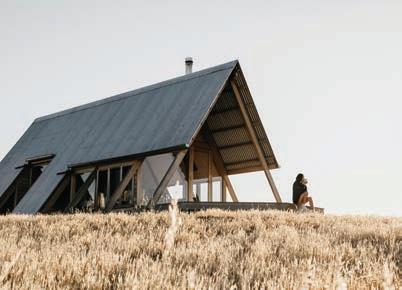






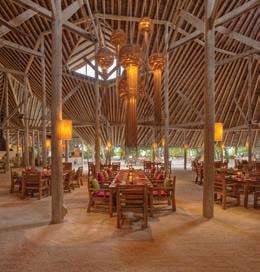
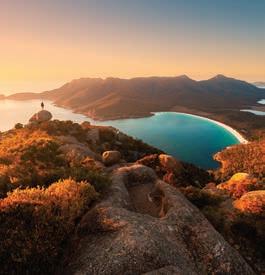
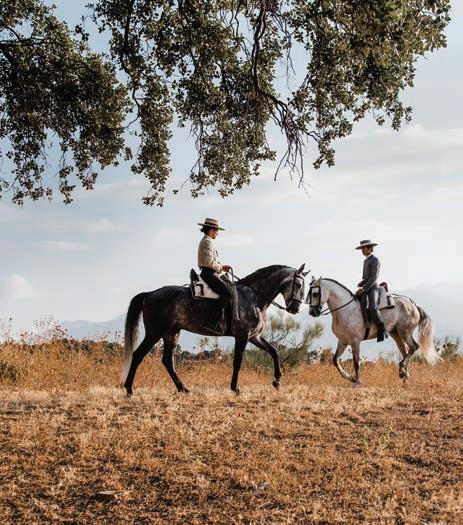

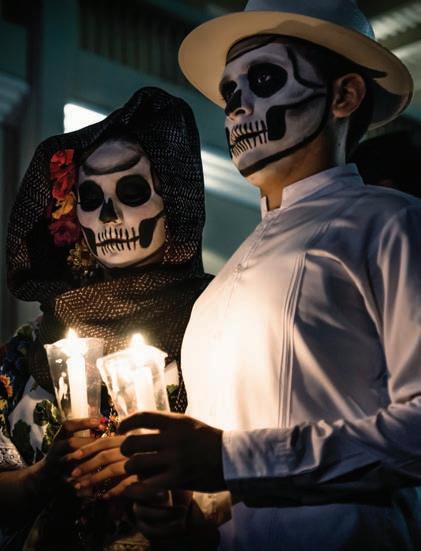

It was a tough start to the year in Australia. Like so many, I watched on in horror as huge swathes of the country came under attack by ferocious bushfires. Lives were lost and livelihoods destroyed, and the road to recovery has only just begun. Our hearts go out to all those affected, and our gratitude to the amazing firefighters.
As we watched the situation unfold, we were forced to reconsider our plans for a cover story focused on regional Australia. We were looking forward to celebrating the unique flavours and appeal of local communities in this issue, but made the difficult decision to postpone the story. At the time, the logistics of travelling in Australia were simply too ambiguous.
The message is no longer ambiguous and Tourism Australia’s ‘Holiday Here This Year’ campaign sums it up. We’re also launching our own support effort, which you can read about on Page 46. This spectacular country has always been worth exploring and now, more than ever, our tourism dollars can help support communities suffering the effects of not only the recent bushfires, but also the ongoing and devastating drought. Where will you go this year? For inspiration, our regional Australia cover story will take pride of place in the next issue.
This issue, we turn our attention to hotel design, with help from our feature writer Madelin Tomelty. By Design takes a look at the inventive ways design-led hotels are making their mark, and how such creativity is transforming the guest experience. As Madelin writes, “The humble hotel has become an experience in and of itself.” Read more on Page 52.
On Page 68, Kate Symons takes a look at women-only travel and its rise to prominence ( I Am Woman ). Believe it or not, I have some insight on the subject. My wife, our Health & Wellness Editor Kelly Allen, is an avid traveller and relishes a solo adventure (is it something I said?) and our four daughters are all globetrotters in their own right. It is a joy to see them embrace their own adventures and I am not surprised to see tour companies tap in to this market in increasing numbers.
Speaking of women with wanderlust, Kelly joined photographer Jacqueline Schofield in one of travel’s most sought-after destinations, the Galapagos Islands, to bring you Adventure Islands (Page 122); Marjorie Perry uncovers Mexico City on Page 114 ( Hot in the City ); and Kaitlin Jane checks in to Vietnam’s exclusive Amanoi ( The Right Direction , Page 78).
This issue also marks the launch of our new-look City Guide and Lisbon and Buenos Aires make for two fittingly cosmopolitan debuts. These guides will not only showcase city highlights, but also uncover hidden gems and local secrets, helping you get the most out of your travels.



I hope you enjoy our first issue of 2020. Thanks, as always, for flipping our pages.




Belinda began her career as a celebrity agent, but quickly found her forte in travel writing, specialising in luxury, adventure, food and wellness. She has travelled to all seven continents, and has been known to eat 10 meals in a day and ‘su er’ through as many massages to get a good story. She currently lives in Buenos Aires where she is writing a city guide book.

Marjorie is a freelance journalist and writer covering culture and society. She first became enamoured with Mexico City some 10 years ago and her fondness for the vivid destination has given her the fortitude needed to teach her husband Spanish.

After working on the first series of the British TV panel game QI, Adam began to investigate languages, which led to the creation of his first book, The Meaning of Tingo. He is now an international travel writer and luxury hotel reviewer, and his passion for languages continues, as is evident in his feature story, Spanish Steps.

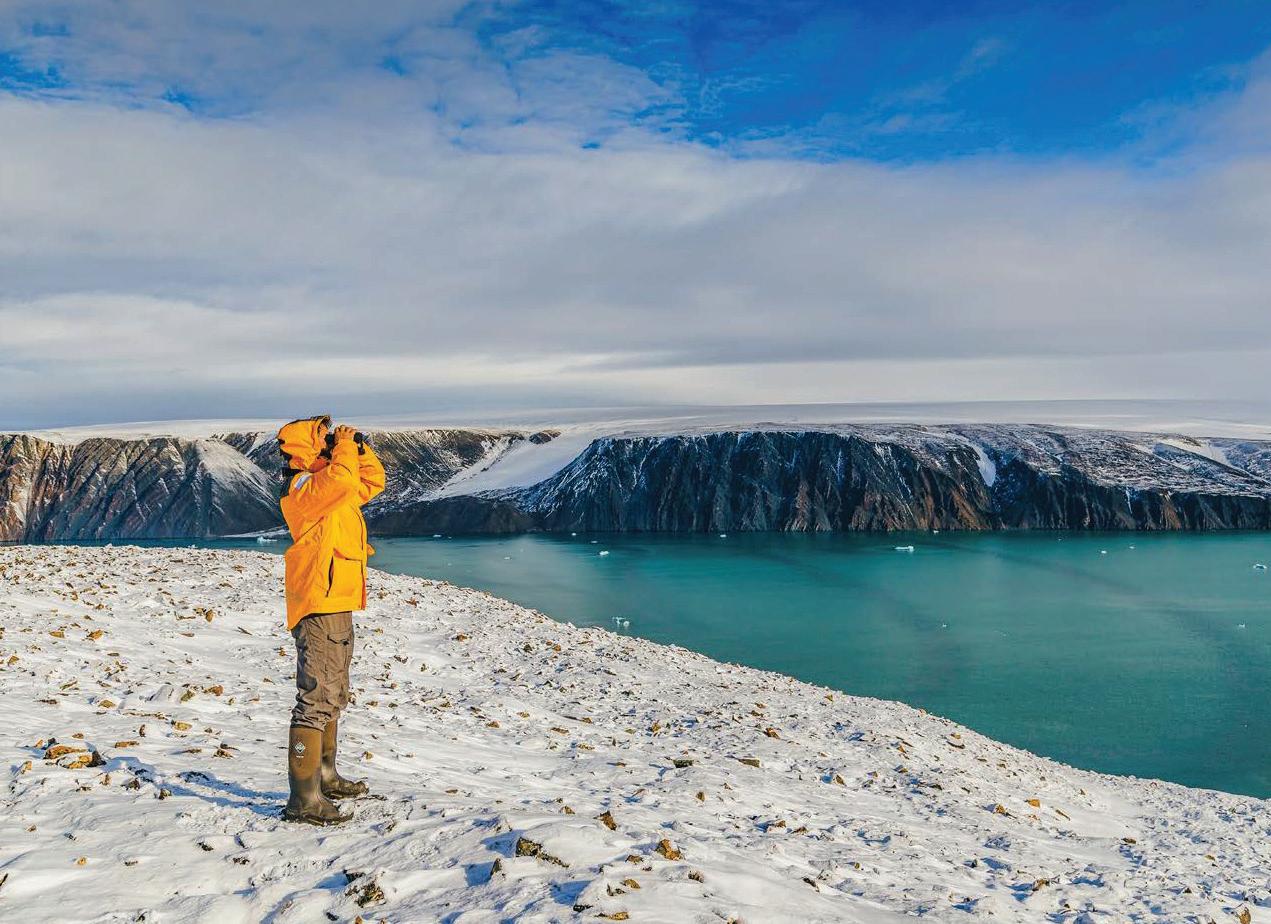
Quark Expeditions has been taking travellers beyond the polar seas for three decades—to places no human has ever set foot. Our experienced expedition team and our eet of small polar vessels enable us to take you places no one else can. And we’ve just added two new ships to our eet: the 5-star luxury ship World Explorer and the purpose-built Ultramarine. IS
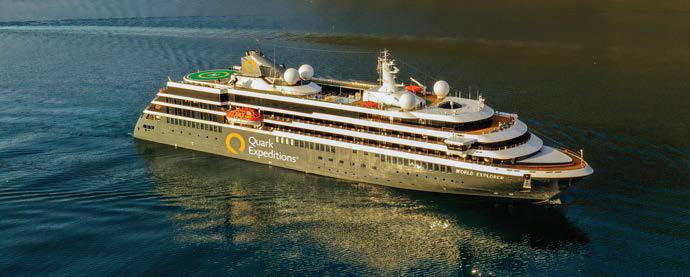

GENERAL MANAGER & MANAGING EDITOR
Richard Bunting
EXECUTIVE EDITOR & PUBLISHER
t: +61 424 138 806 rbunting@luxurytravelmedia.com.au
Gary Allen gary@luxurytravelmedia.com.au
DIGITAL EDITOR & FEATURE WRITER
Madelin Tomelty mtomelty@luxurytravelmedia.com.au
GENERAL MANAGER & MANAGING EDITOR
Richard Bunting
t: +61 424 138 806 rbunting@luxurytravelmedia.com.au
ART DIRECTOR
Kyle Sansbury design@luxurytravelmedia.com.au
DIGITAL EDITOR & FEATURE WRITER
Madelin Tomelty mtomelty@luxurytravelmedia.com.au
CONTRIBUTING EDITOR & COPY EDITOR
Kate Symons ksymons@luxurytravelmedia.com.au
ART DIRECTOR
Kyle Sansbury design@luxurytravelmedia.com.au
HEALTH & WELLNESS EDITOR
Kelly Allen kallen@luxurytravelmedia.com.au
CONTRIBUTING EDITOR & COPY EDITOR
Kate Symons ksymons@luxurytravelmedia.com.au
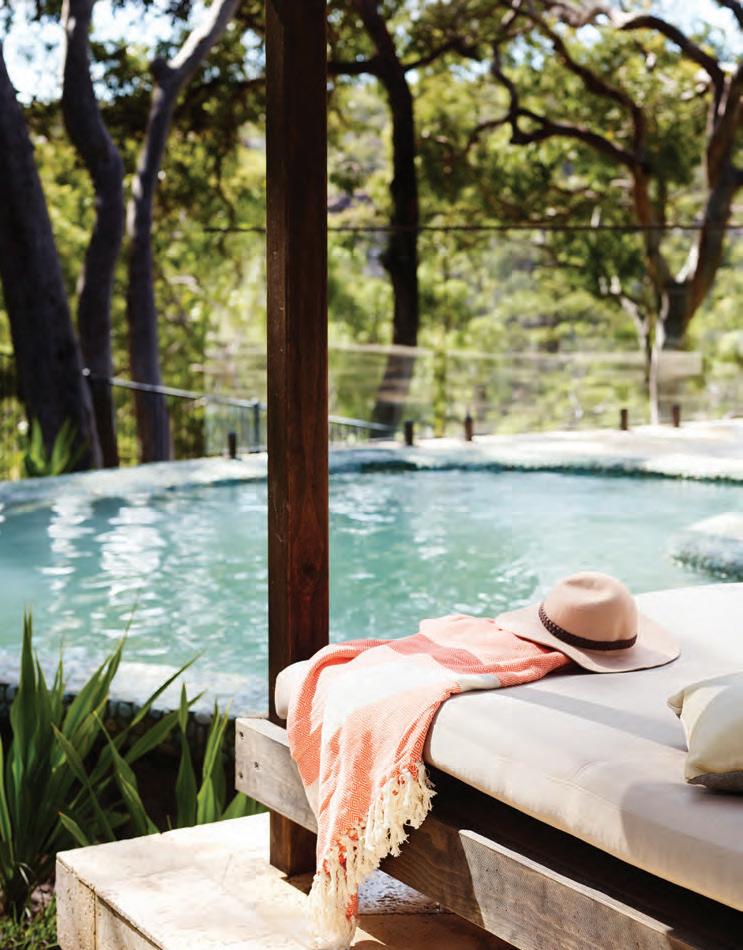
CRUISE CONTRIBUTING EDITOR
Sally Macmillan sallymacmillan@bigpond.com
HEALTH & WELLNESS EDITOR
Kelly Allen kallen@luxurytravelmedia.com.au
U.S CONTRIBUTOR
Jennifer Maeder jbmaeder@gmail.com
US CONTRIBUTOR
CREATIVE ASSISTANT
Jennifer Maeder jbmaeder@gmail.com
DIRECTORS
Sara Hood DIRECTORS
Scott & Robin Venturelli
Scott Venturelli
Robin Venturelli
ON THE COVER Thabametsi Treehouse at Marataba Safari Lodge, South Africa
ON THE COVER Alpe di Siusi, Dolomites, Italy. © Photograph by Denis Belitsky
Published by: Luxury Travel Media ABN 86 066 598 427 PO Box 239 Artarmon NSW 1570
PRINTED BY SPOTPRESS
Distribution and Subscription Enquiries: AUSTRALIA and NEW ZEALAND
T: +61 424 138 806 | E: subscriptions@luxurytravelmedia.com.au

W: luxurytravelmag.com.au/subscribe
W: luxurytravelmedia.com.au/subscribe
| LUXURYTRAVELMAG.COM.AU
Australia’s most exclusive luxury lodge with just four pavilions and all-inclusive rates making your stay effortless

Your digital destination for the latest luxury travel news and features on your desktop, tablet and mobile

The American West is having a moment. As travellers swap tried-andtested places for travel treasures hiding in plain sight, it’s no wonder that tourism figures for the Wild West are galloping along, with Utah and Montana leading the race. Discover dude ranches, millions of hectares of wilderness and a destination that has more wildlife than people (including those iconic, all-American grizzly bears) in our interactive story on this ‘Big Sky Country’.

Our media-rich, immersive digital articles will transport you to the world’s most beautiful – and luxurious – destinations. Feed your wanderlust with stories such as...
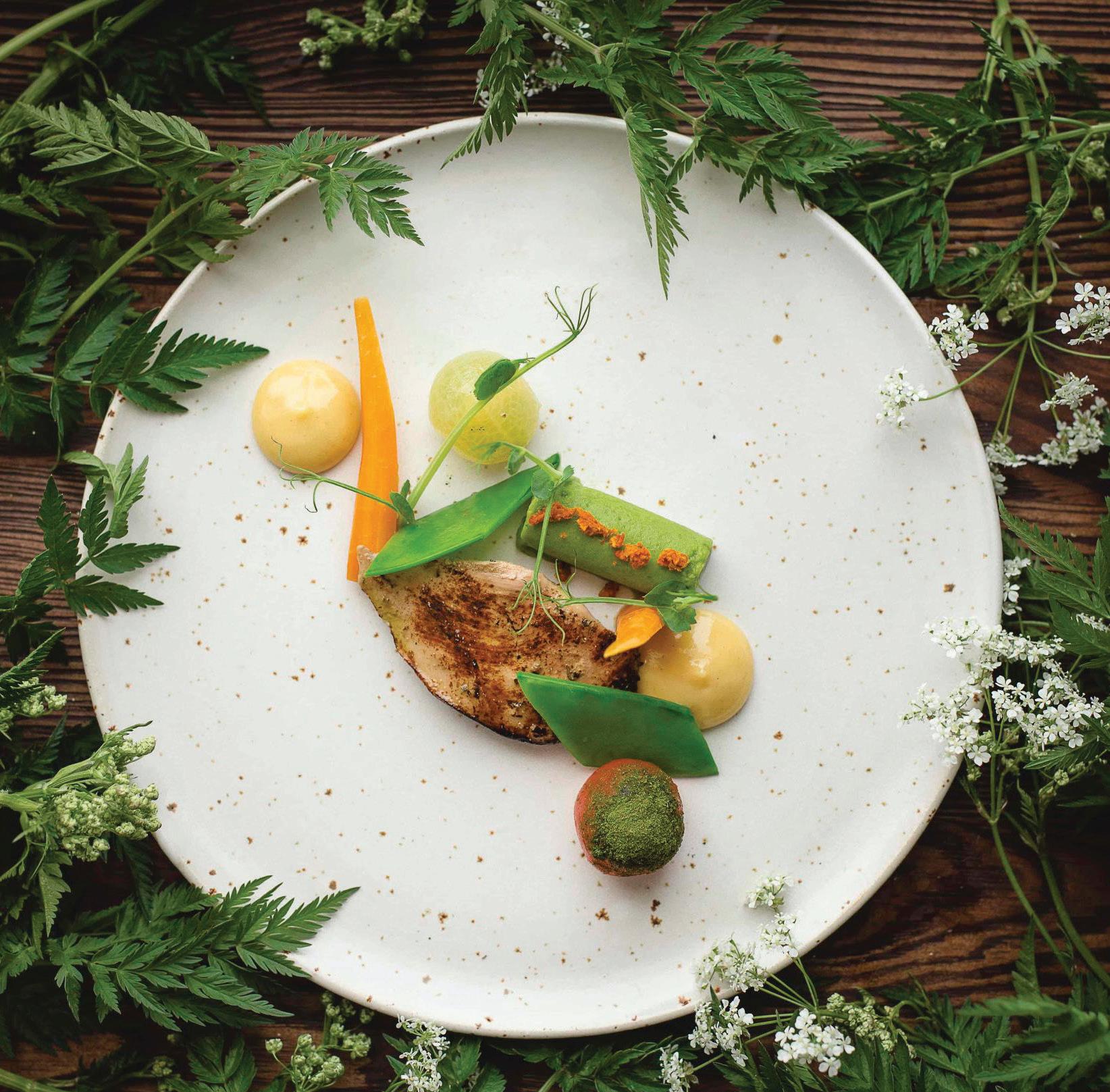
Thirty years after the collapse of the Soviet Union, the once culturally isolated Baltic nations are wakening, and in the Lithuanian capital of Vilnius, the locals are well and truly ‘woke’. Revered traditions of the past now peacefully meet with a bold, artistic counterculture, and chefs are whipping up modern interpretations of traditional Lithuanian cuisine along with creative farm-to-table dishes made with seasonal produce. Multicultural culinary influences flavour every meal, and all the while a rapidly rising hipster food and craft beverage scene is contributing to a city that seems to get cooler – and tastier – by the day. Dig in to our interactive story on this blossoming foodie destination.

Striking good looks, top-notch dining and a stand-out spa mean even the skeptics will be wooed by Hotel Chadstone, whether they like shopping or not

“I only drink champagne on two occasions. When I am in love, and when I am not.” These words from Coco Chanel certainly ring true when you’re a guest of the new Hotel Chadstone Melbourne. The quote is printed on a coaster on the bedside table in my Deluxe Suite, and by the time I spot it, I’m already two glasses of bubbles in. How did they know? Clearly, I’ve been set up – lured into a state of uninhibited self-indulgence by the room’s luxurious ambience. Or, it could just be that as a female in my early 30s, I am the ideal clientele for Hotel Chadstone – a property that has been entirely designed with women in mind.
The bathroom is the size of a studio apartment and contains double basins, a freestanding tub, a dressing table with a velvet stool and makeup mirror, as well as designer Balmain amenities that most women would swoon over. The palette, too, is unashamedly feminine with a soothing wash of soft pink, grey, gold and white, but it’s not all marshmallows and musk sticks at Hotel Chadstone. The interior throughout the hotel sidesteps saccharine style with all the class you’d expect from a design-focused brand like MGallery by Sofitel (part of Accor Hotels). The emphasis, instead, is elegantly Art Deco, and it’s not hard to see where the $130 million build budget went.
Sexy, dark wood panelling, wallpapered walls, textured glass, tonnes of granite and marble of every colour imaginable, curated artworks and just the
right amount of glamorous gold detailing; there are so many tactile qualities to the hotel I want to get all touchy-feely with everything I see. And the curves – oh, the curves! Who needs right angles? Not Hotel Chadstone. Arched doorways, globe lamps, round tables, circular sofas… even my suite’s floor-toceiling windows are impressively convex, so that the outside of the building slightly resembles a woman’s figure.
As the name suggests, Hotel Chadstone has been built next door to Chadstone – The Fashion Capital, which is located 17 kilometres from Melbourne’s CBD. When I first heard about the hotel I was skeptical about the suburban location and its possibly polarising female-skewed design. But, I guess there’s a reason Accor is in the business of hotels, and I just humbly write about them, because the hotel is, at is turns out, rather fabulous. Male guests – of which there are plenty – seem to be as content as the female, and underneath the gleaming first impressions is an experience that exceeds that of the often outdated five-star hotels currently found in Melbourne’s CBD… Read the full story online.
Promising “relaxed European elegance with true gracious Texas hospitality”, Commodore Perry Estate by Auberge Resorts Collection will be the first urban retreat in Austin, Texas when it opens on 1 May 2020. Built during the Jazz Age in 1928, Commodore Perry Estate is located on a secluded four-hectare estate on Waller Creek and boasts a chapel and English garden enclosed within a walled compound in the style of a historic country estate. This glamorous social hub and exquisite architectural jewel is listed on the National Register of Historic Places and o ers 42 rooms and 12 suites, an organic urban farm, a signature garden restaurant, a members’ club and a serene outdoor swimming pool. aubergeresorts.com/commodoreperry

In their first foray into wine-country accommodation, Four Seasons Napa Valley was originally planned to open in mid-2019, then late-2019, and now 1 August 2020. When it does open, amid more than a hectare of grapevines, guests can expect a farmhouse-inspired design with 85 highend rooms as well as 20 residences, which will be two- to four-bedroom properties ideal for longer-term stays. And of course, it wouldn’t be a winery hotel without its own on-site winery and cellar door – helmed by award-winning winemaker Thomas Rivers Brown. fourseasons.com/napavalley

Opening December 2020, Ambient Sedona’s 40 cubed-shaped guest ‘Atriums’ will be elevated above the ground and constructed using floor-toceiling, bronze-tinted glass, matte charcoal and rusted metal that blends in with the red rocks of Sedona. Designed by award-winning, Scottsdalebased ASUL Architects, each guest Atrium will be rotated and individually placed at specific angles to blend seamlessly with the surrounding landscape, and maximise views for guests. The hotel is also being built with a focus on sustainable methods and organic, modern architecture that minimise the impact on the land. ambientesedona.com


Slated to open in late 2020, Aman New York will o er 83 rooms and suites in the Crown Building on the corner of Manhattan’s famous Fifth Avenue and 57th Street. The Aman Spa will hold a 20-metre indoor swimming pool, a double treatment room, sauna and steam rooms, and an outdoor terrace with cabana, daybed and fireplace. Dining options will be just as decadent, with the subterranean Jazz Bar, wraparound Garden Terrace overlooking Central Park, Italian cuisine at Area, and Aman’s interpretation of Japan’s washoku dining tradition at Nama, not to mention the extensive Wine Library. The 26-storey building will also be the first to o er urban Aman Residences. aman.com

Founded by chef Nobu Matsuhisa, and actors Robert De Niro and Meir Teper, Nobu Hotels seem to have come out of nowhere and yet already span five continents. The company’s next project will open in Chicago on 1 May 2020 in the vibrant West Loop neighbourhood with a style that blends Nobu’s design footprint with the Windy City’s dynamism. The 115 rooms and suites will showcase old-world Japanese influences and ultra-modern design, while facilities will include a state-of-the-art fitness centre and an indoor pool. The Rooftop at Nobu Hotel Chicago will grant guests views of the city skyline from an indoor lounge and outdoor terrace, and all the Japanese/Peruvian delights of lauded Nobu restaurant await back down on Earth, on the ground floor. chicago.nobuhotels.com


where time stands still
lancemore.com.au/alamanda
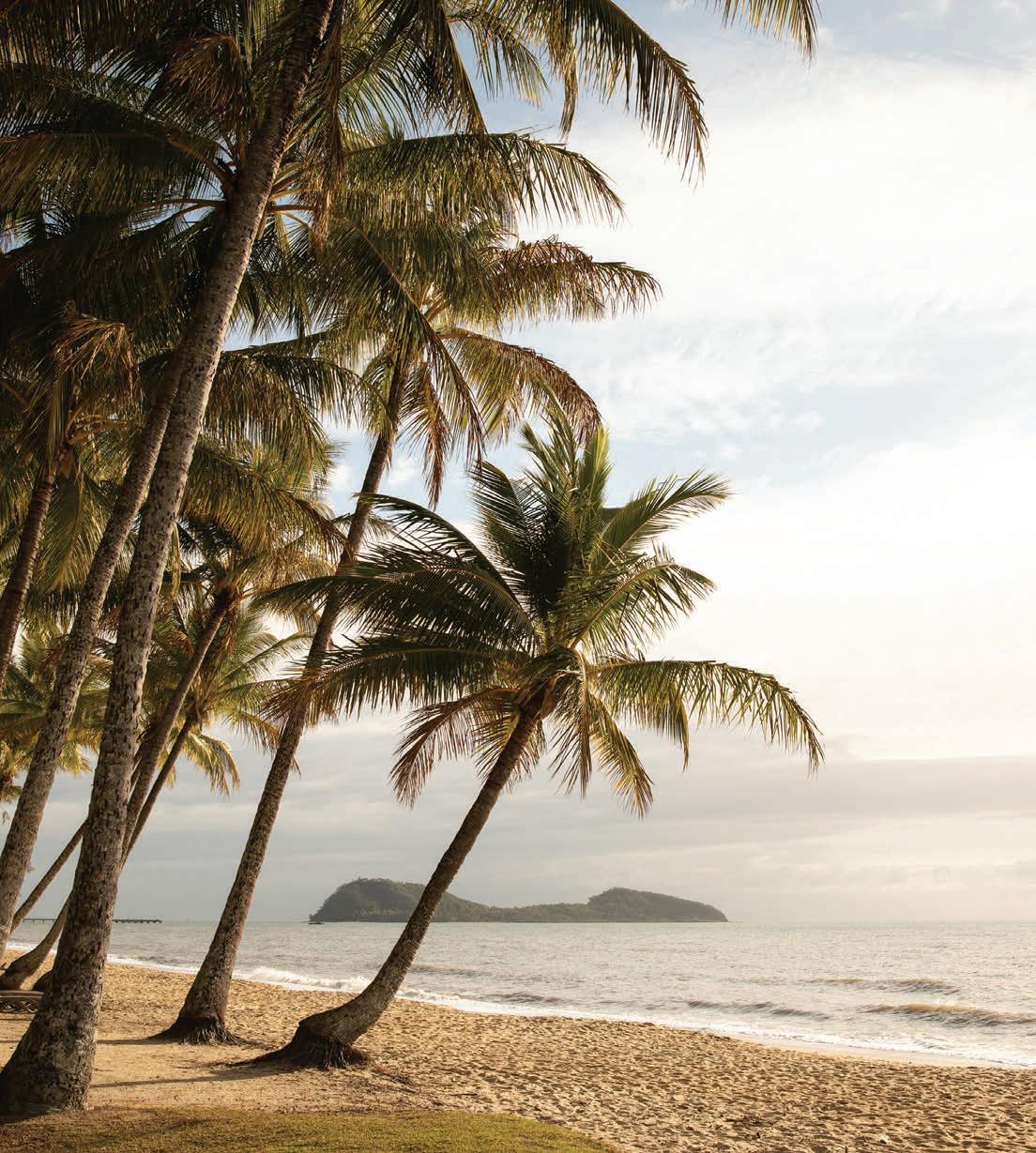
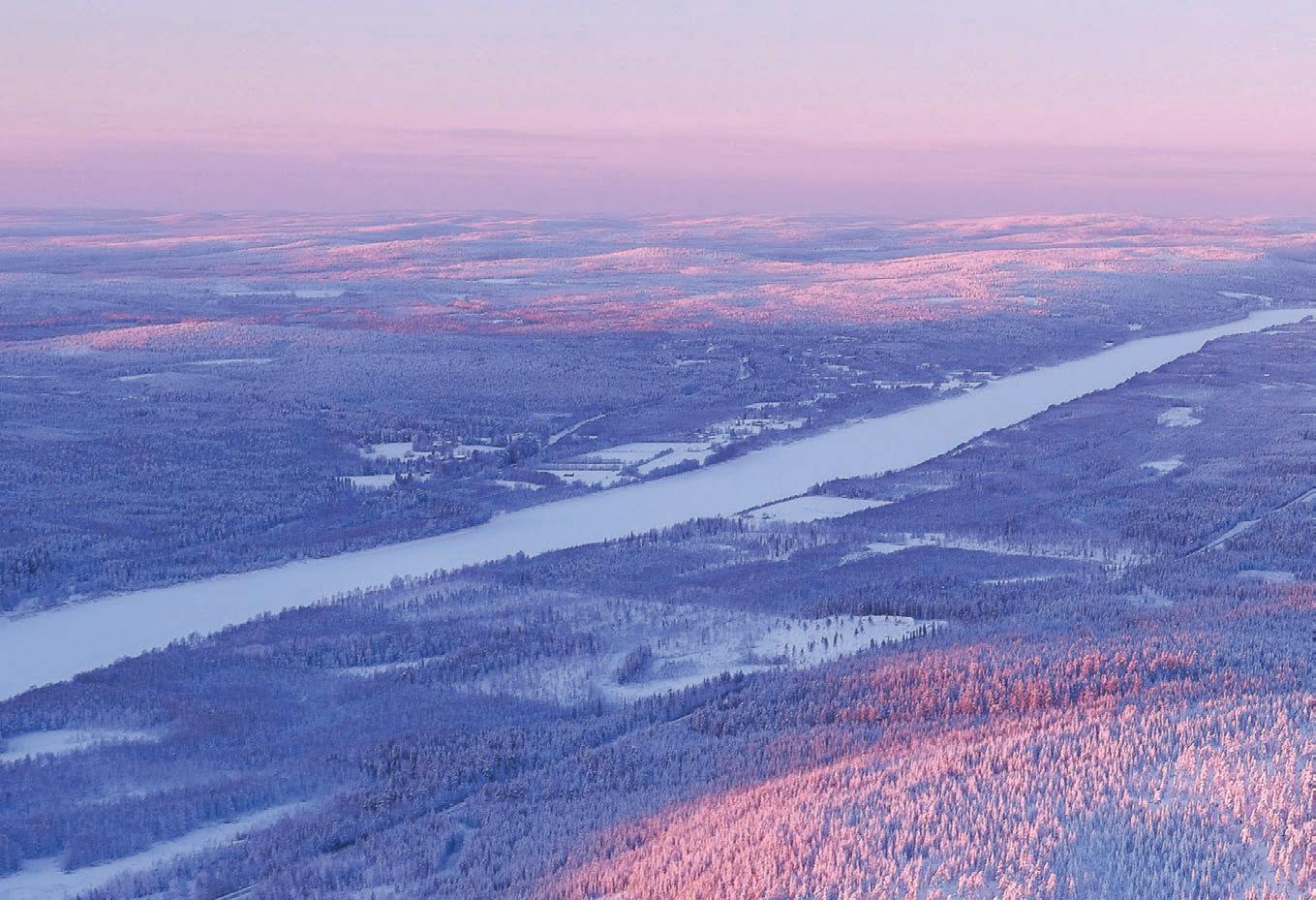
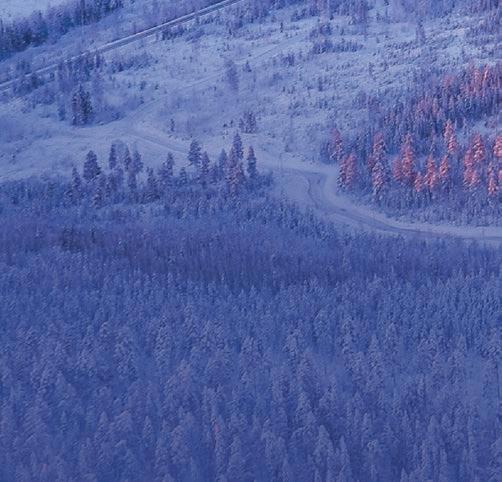











IT DOESN’T GET MORE REMOTE – OR UNFORGETTABLE – THAN THIS: A luxury chaletso embedded in nature it appears to have grown out of the ground with the dense, white forest that envelops it. At 66-degrees north in the Arctic Circle in Finnish Lapland, OCTOLA Private Wilderness is a solitary gem of manmade architecture amid 300 hectares of wilderness. Conceived by the team behind Luxury Action, which launched igloo accommodation in the Arctic last year, OCTOLA’s magnetic natural environment invites guests to reignite the spirit and reconnect with nature. The chalet architecture nods to the traditional Lapp ‘laavu’ buildings of the native nomadic people, while the level of detail and comfort is a lesson in luxurious modern design. Every centimetre of OCTOLA was designed for the global traveller accustomed to five-star experiences, and its exclusive 10 rooms range from 22 to 48 square metres each. Modern yet comfortable designer furnishings invite cosy couch sessions, alone or with loved ones, with floorto-ceiling windows removing any barrier to the serene snowy scenery beyond. Wilderness guides, a chef and a butler are all on hand to tend to guests’ every wish, and the chalet can be partly or fully privatised, making it a must-experience for those seeking absolute solitude. Turns out it’s possible to find luxurious accommodation just about anywhere, even at the ends of the Earth. octola.com



36 YEARS AFTER LAKE HOUSE DAYLESFORD opened its doors, the award-winning hotel has welcomed a sibling, and she’s an ‘Earth Child’ if ever we’ve seen one. Set on a 15-hectare regenerative farm surrounded by rolling hills, seven kilometres from Daylesford, Dairy Flat by Lake House offers the kind of idyllic country life many of us dream about – especially when we’re stuck in traffic on the morning commute. The European-style lodge offers just six luxurious suites but all the charm of its sister property, plus an extensive and productive kitchen garden, a vineyard, its own bakehouse, an
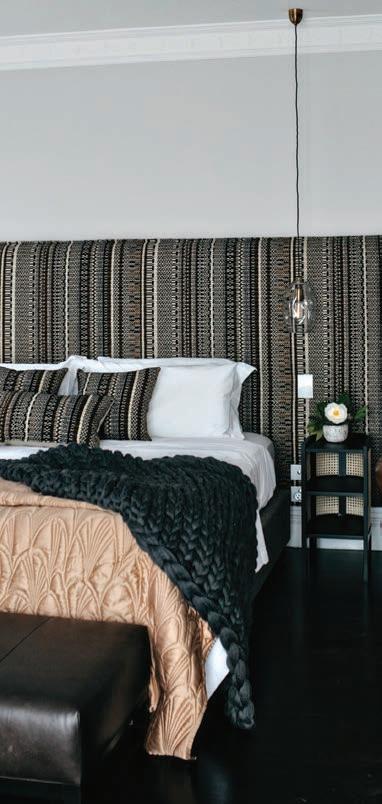

established olive grove and an orchard of 350 heritage fruit trees. Like Lake House, Dairy Flat Lodge champions sustainable and local produce, with the farm meaning the vast majority of food served at both Lake House properties now comes entirely from the local area. Inside, it’s a country estate of utmost elegance, with custom-made furniture, cabinetry and upholstery, original artworks by Allan WolfTasker, botanical paintings by Alesandro Ljubicic, sculpture by bronze-worker Anthony Vanderzweep and woodwork from craftsman Greg Stirling.
Lodge guests can roam the pastures on a farm tour or book into scheduled workshops on gardening, baking and beekeeping, or immerse themselves in the day-to-day activities of the farm – in the vegetable garden, orchard, vineyard, olive grove, ornamental gardens and bee hives . It’s ‘mi casa es su casa’ at Dairy Flat Farm, with that fresh country air and expansive green space all ripe for exploration and immersion. You might not be able to escape the rat race just yet, but in the meantime there’s always weekends at Dairy Flat by Lake House. dairyflatfarmdaylesford.com.au



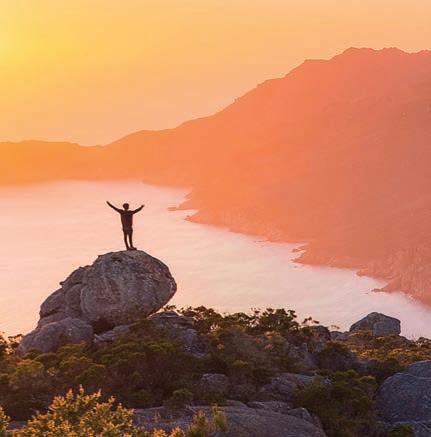



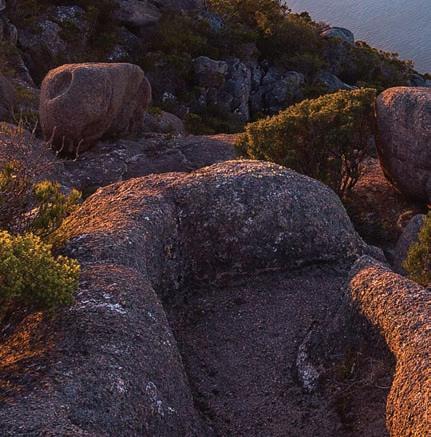

024 026 028
Take a peek at

Crown has released a series of never-before-seen renders of Crown Towers Sydney, set to open at waterside precinct Barangaroo in December, three months ahead of schedule. Standing at 275-metres, the hotel will be the tallest in Sydney and promises an ultra-luxurious hospitality experience unrivalled in Australia, with nearly every element of the fit-out custom designed. Featuring 349 guest rooms, including 20 villas and two premium villas, Crown Towers’ top villa will span an extraordinary 820 metres across two levels and will be the highest habitable space in any hotel in Sydney.
An internationally renowned team of the world’s best designers has come together to create
an architectural masterpiece both inside and out, with award-winning architect WilkinsonEyre behind the spectacular building. Overlaid with a facade comprising over 8000 glass panels, all individually cut and unique in size, Crown Sydney’s distinctive structure sees it twist as it rises in a petal-like formation, creating unique floors at each level and framing the views of Sydney’s most iconic harbourside landmarks. The concentric nature of the building means each room has a unique configuration.
The interiors showcase refined luxury with coastal hues inspired by the hotel’s waterfront location, with 50 custom-made crystal light pieces along with a chandelier that is close
to eight metres long on display. The guest bathrooms feature Ella Blue Marble walls, Nero Marquina floors and custom-made baths, there are Jacuzzis in the villas and bespoke fittings by Apaiser and Hansgrohe, while Balinese-inspired landscaping is seen throughout the hotel.
“Crown Towers Sydney will stand amongst the finest hotels in world... international in feel, but celebrating the beauty of Sydney and its surrounds in its execution,” said Crown Sydney Chief Operating O cer, Peter Crinis.
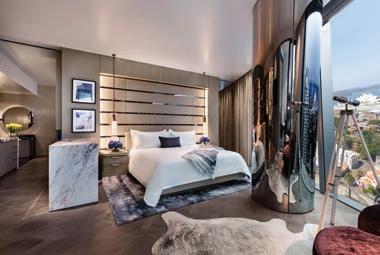


Crown Sydney is predicted to contribute almost half a billion dollar to the economy when it opens. Bookings will go live before July.
crownhotels.com.au


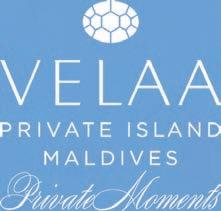
Accor is the latest global hotel company to commit to the elimination of single-use plastics in guest experience, having joined the Global Tourism Plastics Initiative and vowing to remove the environmentally detrimental items by 2022. “We are aware of the significant impact we have on our planet and our responsibility to create tangible benefits for our employees, guests, suppliers, partners and host communities,” said Sébastien Bazin, Chairman & CEO, Accor. “It’s about being aware, socially conscious and consistent.”
The new commitment is in addition to the hotel chain’s previous commitment to eliminate all plastic straws, stirrers and cotton buds, and includes the removal of individual plastic toiletry amenities and cups by the end of 2020. All remaining single-use plastic items in guestrooms, meeting areas, restaurants and all leisure activities areas will be eliminated by the end of 2022.

Several Accor hotels within the group’s portfolio – including Novotel Yangon Max, Myanmar, Sofitel Bogota, many hotels in Bali and Lombok, Indonesia, and Ibis Styles São Paulo Anhembi – have also already taken steps individually to be plastic-free and are advancing towards a 100 per cent single-useplastic free objective.
River and ocean cruise line Viking has announced it is expanding into expedition cruising with new ship Viking Octantis floating out from January 2022. The ship will voyage to Antarctica and North America’s Great Lakes, while a second expedition vessel, Viking Polaris, will sail to Antarctica and the Arctic beginning in August 2022.

The new Polar Class 6 Viking Octantis and Viking Polaris will each host 378 guests in 189 staterooms and o er the same amenities as Viking’s ocean and river ships, with modern Scandinavian design throughout, intimate spaces and panoramic views from every location on the ship.
Highlights include The Hangar, an enclosed in-ship marina, two six-guest submarines, a fleet of two-seater Arctic-tested kayaks, an enclosed stern terrace with 270-degree views, and a ‘market’ concept cafe o ering live cooking, an open kitchen, bakery, grill and premium seafood and sushi choices. Guests will be able to visit the Laboratory
7 guests check in to a home, apartment or unique rental property per second
Source : Booking.com
The Hoxton is rolling out flexible check-in and check-out times across its nine properties in the UK, Europe and the USA. When booking direct on thehoxton.com at least 72 hours before their stay, guests can select check-in and check-out times from 24-hour options on a drop-down menu, allowing them to tailor their arrival and departure.

under supervised access to learn more about the experiments conducted by researchers from Viking’s partner institutes, and three temperaturecontrolled pools will be available aboard each ship as well as a Nordic Spa and fitness centre.
The on-board expedition program is designed to prepare guests for their onshore experiences, with more than 25 experts accompanying each journey and facilitating daily briefings and lectures about their destination. On shore, guests can assist in fieldwork or interact through experiential activities during landings. Viking’s expedition ships minimise environmental impact through features such as the straight bow that reduces fuel consumption and a positioning system that enables the ship to hover over the seabed without anchoring. Early bird savings are available for 2022 and 2023 Viking Expedition itineraries for those who book before 31 March 2020.
vikingcruises.com.au/expeditions
Bringing you closer than ever to the majesty of the Arctic and Antarctica, your life-changing G Expedition cruise gets you on a first-name basis with the most fragile ecosystems on our planet.
Our small-ship tours use environmentally-safe practices both onboard and everywhere we go — working closely with conservation partners to ensure we are being as responsible and sustainable as possible on-tour. (Think: no plastics onboard, beach cleanups!) Plus, with the ship’s 10:1 passenger-expert ratio, your tour is more than a cruise — it’s floating classroom loaded with the hands-on attention you can’t get out of a guidebook.
Book your life-changing polar cruise today. gadventures.com.au/destinations/polar

Pet-friendly hotels are becoming more popular, but for those furry friends who prefer a room of their own, recently opened cat hotel, Furbaby Retreat, in North Perth has just the thing. O ering felines the full five-star treatment, 27 luxury suites are available for the classy cat clientele, with the over-the-top penthouse suite coming with a human-sized bed, an extra-large room and a window for soaking up the sun.

The cat hotel was designed by animal architects in consultation with cat behaviour specialists, and all suites come standard with luxury beds, temperature control, vet-approved meals and individual ventilation for optimal hygiene. The cat hotel also boasts a Fun Room for private daily play time, with a window for sunning, cat wheel, secret nooks for hiding, climbing and jumping, scratching options, and lots of toys and games. For cats that love human contact, cuddle time is also o ered to ensure guests get all the scratches, cuddles and brushing they desire, so owners can head o on holiday knowing their furbaby is living in the lap of luxury. Sounds purrrfect. furbabyretreat.com.au
The amount train travel across Europe generates, with that figure expected to grow to €1.5bn by 2028.
Source : Rail Europe
Australian boutique hotel collection Lancemore has announced the addition of a Melbourne hotel to its stable of properties, with the opening of Lancemore Crossley St. set for 27 March 2020. Working with award-winning design firm Carr (featured in our cover story on page 42) on the $10 million transformation, the property will be the seventh in the company’s portfolio, which includes Lancemore Lindenderry Red Hill and Potts Point property, Larmont Sydney by Lancemore.
Situated in a laneway location, the hotel on Crossley Street, previously named Romeo Lane, is ideally located at a crossroads of Melburnian culture between the ‘Paris end’ of Bourke Street, the Theatre District and Chinatown.
The hotel will feature five room types for guests to choose from, its walls hung with commissions from emerging artists and a rooftop terrace boasting city skyline views. Guests can choose whether to retreat to the calm o ered by the 113 private rooms or experience the programs of the public spaces.

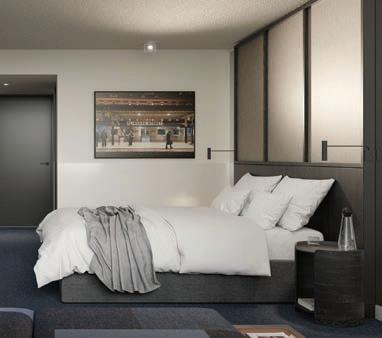
Lancemore Group is currently undergoing a rebrand, with creative agency Projects of Imagination (Chin Chin, Rare Hare at Jackalope, United Places) overseeing the transition and all the brand touchpoints for Crossley St. lancemore.com.au/crossley-st










With regional eastern Australia in recovery mode and tourism boards eagerly urging domestic and international travellers to ‘keep calm and carry on’ visiting, there’s no better time to venture beyond the city to some of the country’s o -grid hideouts. Australian travel startup Riparide encourages city dwellers to unplug from the daily grind and head into nature to recharge their souls, by pioneering the concept of turning shared travel photos into bookable experiences. Currently, more than 300 adventure stories are available to book across regional Victoria and New South Wales in the form of tiny houses, floating luxury villas, yachts and llama treks, as well as good old-fashioned homesteads.
“Our social media feeds are brimming with photos that inspire us to travel and we often rely on our friends for recommendations on where to go, so it’s no surprise that so many people have embraced booking escapes through ‘stories’,” says Riparide Founder, Marlon Law. Put those hard-earned tourist dollars to good use in your own backyard, and to the communities that need them. Riparide certainly has, having raised nearly $25,000 for bushfire relief through bookings in January alone. riparide.com
Is it just us, or is Belize suddenly on travellers’ lips? In fact, the whole of the Caribbean seems to be making a comeback following the devastation of Hurricanes Irma and Maria in 2017, but Belize is among its fastest-growing destinations of the past decade. Latest statistics from the nation’s tourism board show that Belize surpassed the half-million mark in 2019, welcoming a total of 503,177 overnight visitors – more than double the 241,119 arrivals in 2010 – and cruise arrivals surpassed the one-million mark for the fourth consecutive year. Tour operators such as World Expeditions have also launched itineraries in Belize for the first time, while new flight routes from Texas and Canada have contributed to an influx of tourists from these two destinations. But there has also been a steady increase in visitors from our very own Oceania region in the past five years, according to the Belize Tourism Board. “It is unclear what contributed
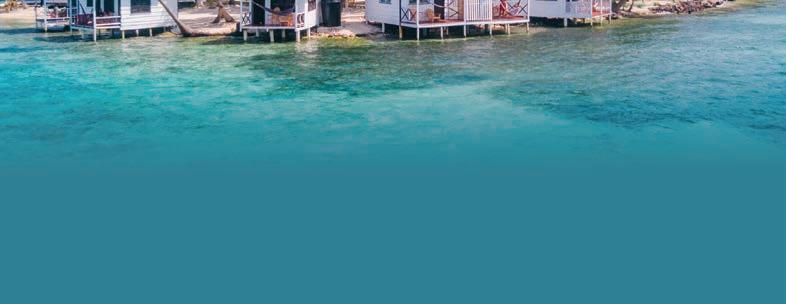

to the uptick in visitors from the Oceania region,” the report says, but we can think of a few reasons: white sand beaches, clear aquamarine lagoons, a Barrier Reef swarming with marine life and dense rainforest covering half of the country, where you’ll also find Mayan ruins such as Caracol with its looming pyramid, for a start. Not to mention, o the coast are hundreds of low-lying islands called ‘cayes’, where luxurious eco-resorts are beginning to sprout up. Four Seasons Resort and Residences is slated to open on Caye Chapel in 2021; an Autograph Collection hotel by Marriott is debuting on Belize’s largest island, Ambergris Caye, late this year; while Hollywood star and environmentalist Leonardo DiCaprio’s private island eco-resort on Blackadore Caye is rumoured to be opening next year, too. It’s only a matter of time before the word gets out on Belize and it becomes a well-trodden island escape, so get to it.
% 10
38 39 %
use ear plugs or noise cancelling headsets to help them sleep on longhaul flights
use sleeping tablets drink alcohol to aid their sky slumber choose healthy food when they arrive at their destination to help with recovery
Source : Qantas

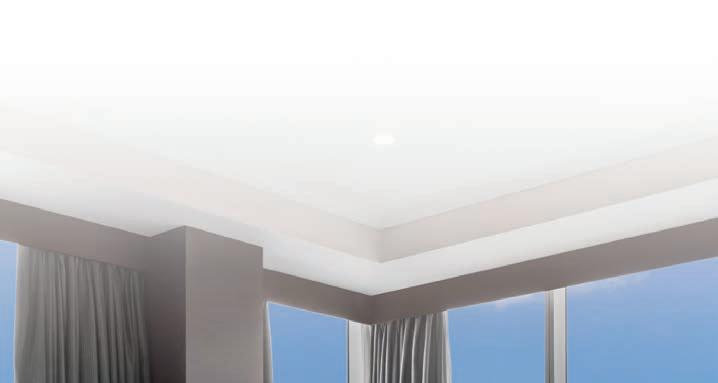
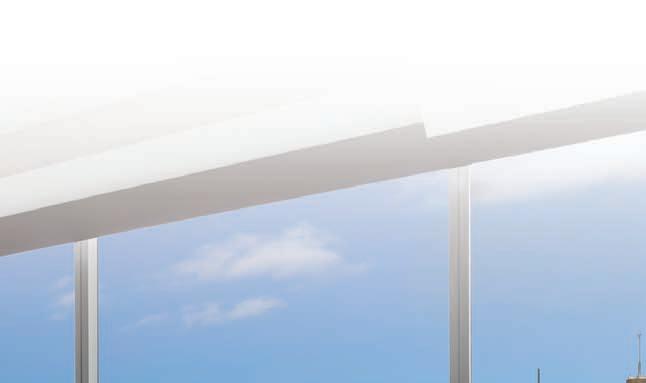
UK publication and trend forecasting company
Globetrender has reported that just over one fifth (21 per cent) of UK drinkers don’t feel comfortable ordering cocktails that they perceive to be more skewed to the opposite sex. The findings came from a survey of 2000 British people by restaurant and bar chain Burger & Lobster, and also revealed 13 per cent have been teased for drinking things that are too feminine, like a Cosmopolitan or Bellini, or too masculine such as an Old Fashioned or Negroni, Globetrender stated. The colour of the drink, garnishes used and dominant flavours deemed to be ‘girly’ or ‘manly’ were all factors the respondents said influenced their cocktail choice, with sweet, fruity cocktails typically seen as being for women and potent, spirit-heavy drinks for men. The answer? Gender-neutral cocktails, of course. Burger & Lobster launched five transparent and nameless cocktails in response to the survey, meaning the future of first dates in London is looking a lot less awkward. Maybe it’s a Brit thing.

Travellers visiting Swedish Lapland in the hope of seeing the Northern Lights can now take the viewing experience up a notch, with a new hot air balloon concept by the founders of the Aurora Safari Camp. Jonas Gejke and Fredrik Broman are starting hot air balloon operations in Swedish Lapland along with ballooning expert Andrew Peart, who has been flying hot air balloons for more than 25 years over the African savannahs.
Lapland Ballooning team will also be running daytime expedition flights from its home base in Gunnarsbyn, Råneå River Valley over the Arctic wilderness.
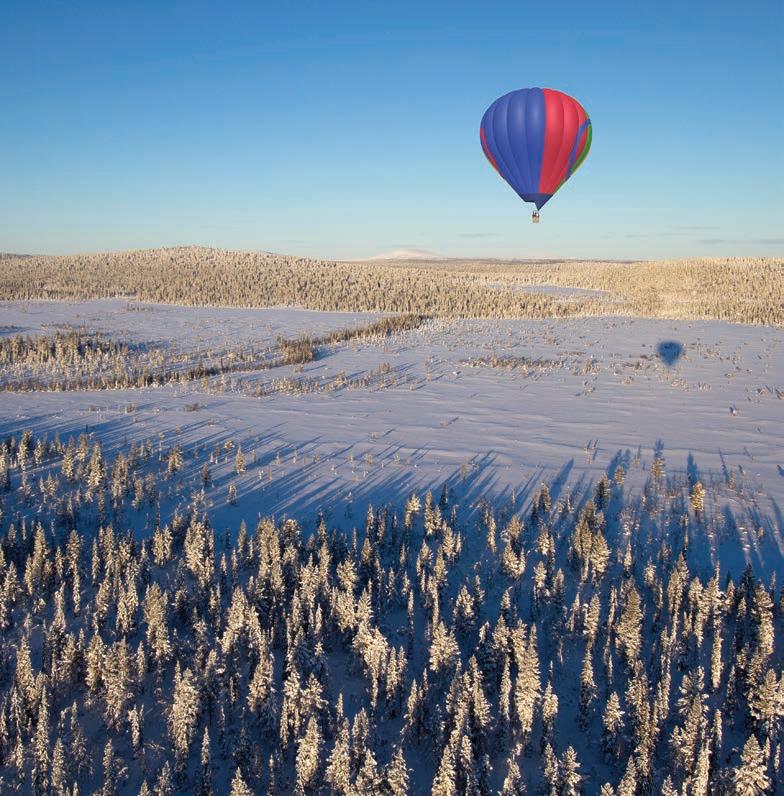
“To experience the Northern Lights from the tranquility of the balloon in a remote wilderness region of Northern Sweden is a very special experience and one that will serve as a highlight for any luxury Arctic adventure,” Cooper said.
$18 ,000
0
How much you’ll need to invest in property in Fiji to qualify for permanent residency. Five years of living in the tropical country will get you full citizenship.
Source : Lovemoney
“This is a first,” says Jonathan Cooper, founder of Off the Map Travel and an Arctic travel expert.
“We’ve never heard of anything like this before and everything is pointing to this being the region’s next big highlight Aurora experience.”
The first aurora flight will take off in December and will be available through to April 2021 –with bookings opening in May. The experience will see the balloon take off and ascend to 40 metres, where it will hover while remaining anchored to the arctic ice below. For those more interested in the Arctic landscapes, the
“Although the Aurora is never guaranteed, what better place to hunt for it than by ascending into the stars yourself.”
The full-board 4-day/3-night Aurora in the Sky itinerary costs from £2275 per person (about A$4395), not including flights. The cost includes meals, private transfers, accommodation at the Outpost and Aurora Safari Camp, as well as a snowmobile adventure with lunch on the Arctic circle, the Aurora Hot Air Balloon experience, and a snowmobile adventure to the ‘meet the locals’ experience. o themap.travel

So tel Melbourne On Collins, 25 Collins Street, Melbourne, Victoria. Book your stay at so tel-melbourne.com.au
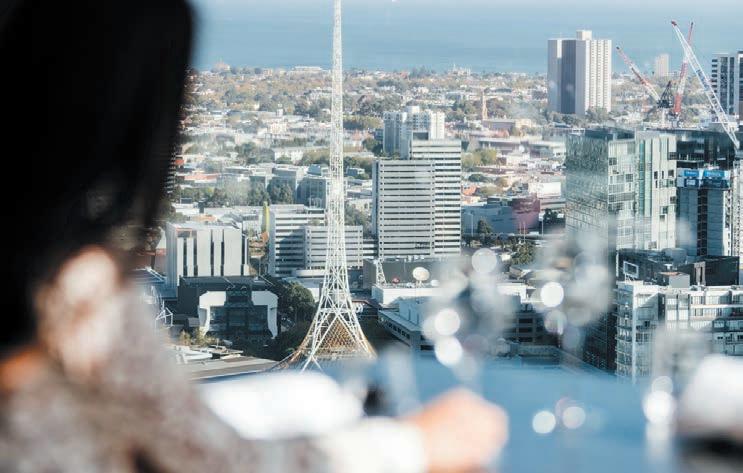

WHAT’S BETTER THAN FLYING FLAT? FLYING FLAT WITHOUT SPENDING A CENT. WELL, MAYBE JUST A FEW CENTS.
STEVE HUI , CEO AND FOUNDER OF IFLYFLAT , TELLS YOU HOW



NINE IN 10 AUSTRALIANS BELONG TO A loyalty program, according to research by Mastercard. And it won’t surprise readers of this magazine to learn the main motivation behind joining such programs is travel. Almost 80 per cent of Australians nominated frequent yer points as their preferred reward and I can’t say I blame them. Who needs another frying pan anyway?
I am an advocate of points because, to me, they o er the freedom to travel the world for less than half the price of buying a ticket. And my favourite part is that ying Business Class is one of the best-value ways of cashing in your


frequent yer points. When spending cash, a Business Class fare costs around four times the price of an Economy seat while a coveted spot in First Class will set you back around six times as much as so-called cattle class. But when you use points, a Business Class seat drops to double the Economy outlay. First Class, meanwhile, is pegged back to three times the Economy spend. Despite these favourable conversions, it’s a perk many people never take advantage of. Why? Because it’s complicated. Depending on who you are, where you’re going, when you’re going there and which airline you’re going with, points can have vastly
di erent values. But I love equations – I am a former accountant, after all – and I am happy to share my knowledge with you. In fact, iFLY at was created with this very premise in mind. In this issue, you’ll nd inspiring tales on destinations such as Mexico City, the Galapagos Islands, Andalucia, Singapore, the Maldives and Lisbon. Using these amazing locations, I have shown you above just how a ordable it can be to use points to score your next adventure... lying at, of course. You can save thousands, which is money better spent at Michelin-starred restaurants and penthouse suites, don’t you agree?
If you never go, you’ll never know.
CONTACT OUR EXPERT TRAVEL ADVISORS TO PLAN YOUR UNFORGETTABLE HOLIDAY

www.fbitravel.com.au

Ph: +61 3 8573 0900
E: enquiries@fbitravel.com.au
80 Kooyong Road, Caulfield North, Victoria 3161
PASSENGER NAME
AIRCRAFT
Richard Bunting Boeing 777-200 FROM FLIGHT
Singapore Changi Airport BA15 TO SEAT Sydney Airport

12G
DURATION
7 Hours 45 Mins
Arriving at Singapore Changi Airport on a typically humid afternoon, I am eager to move through check in and into the lounge. On this occasion, it’s a win. Check in is a breeze – completed within minutes with no wait time –and then I pass through customs in the blink of an eye. The directions to British Airways’ Club World lounge are easily spotted. The lounge itself is long with two distinct food service areas, and the fridge is stocked with a wide variety of libations. It’s not busy and I happily plonk myself down for a final Tiger Beer before my flight.
Cabin
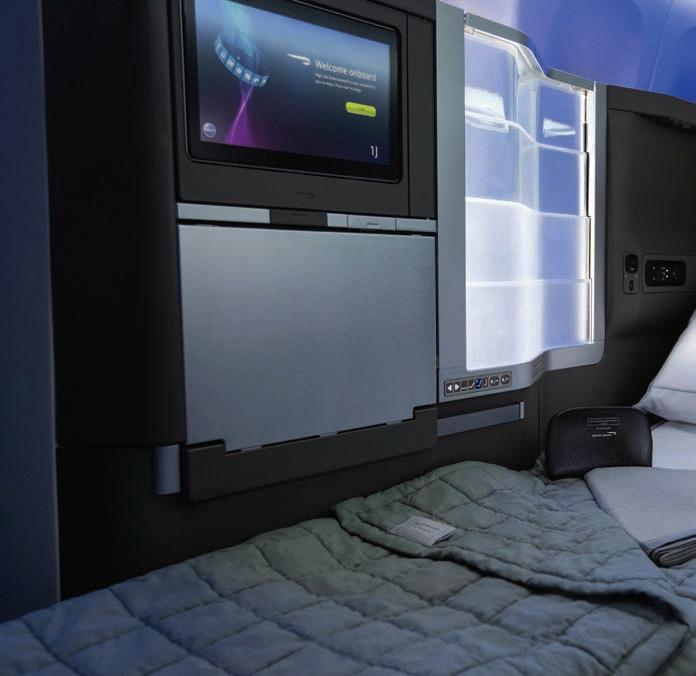
e British Airways Business Class cabin has a 2-4-2 con guration with passengers sitting head to toe. Aisle passengers (B, D, G and J) face forward; window and centre passengers (A, E, F and K) face the rear


Seat
BA15 is an overnight flight and my bed is seat 12G, on the centre aisle. The seat is comfortable, with an easy-to-use control pad allowing me to set the seat position at the preferred point between upright and flat. The major weakness of the seat is the lack of storage space. Each seat has a draw; however, it is low to the floor and an effort to use unless you are in the upright position.
No matter the airline, Business Class service should always be of a high standard, and this flight meets expectations. The attendant looking after me is polite and unobtrusive, and the cabin crew’s polished English accents give an added feel of sophistication.
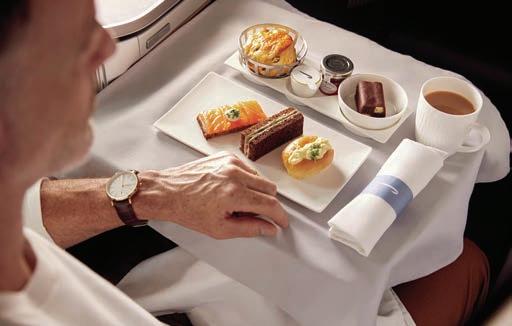
On this flight, dinner and breakfast are offered. After a few big days in Singapore, I still manage to relax with a couple of BrewDog Speedbird 100s, a beer specially brewed for British Airways’ 100th anniversary celebrations last year. The dinner menu caters for a variety of tastes. My entree of green pea panna cotta followed by a satisfying potato gnocchi main doesn’t leave me wanting for much more; however, I do find room for the cheeseboard. The selection included Shropshire Blue, Comté, Pont-l’Evêque (similar to Brie), grapes and peach chutney. As far as airline cheeseboards
go, this is very much a winner. Breakfast is served about 90 minutes before we land and is enough to sustain me before our arrival at Kingsford Smith Airport.
The in-seat entertainment is easy to use and the screen size is ample, although the variety of shows is limited. That said, for an overnight trip lasting just under eight hours, there is more than enough to watch or listen to before you settle down a few hours’ shut-eye.

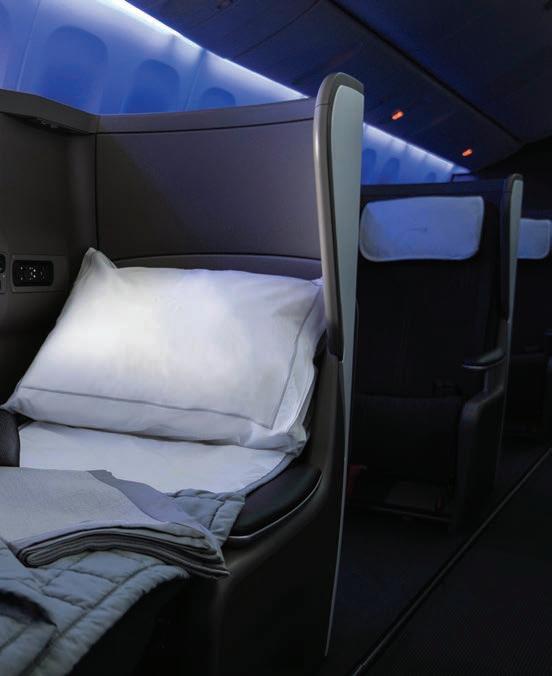
The cheese board is a stand-out. The cheeses are well selected and plentiful.
The lack of storage.
Our Rating *****
THE
Two bags, maximum 32kg per bag.
LOYALTY PROGRAM
The Executive Club.
WIFI
On selected flights, WiFi is available to purchase. Luxury lifestyle brand
The White Company supply a small toiletries pouch with eye-mask, toothbrush and toothpaste, earplugs and socks.

The Details
britishairways.com









The hashtag changing our community. Australia is facing one of the worst droughts on record. The impacts are being felt well beyond the farm gate in all parts of the regional economy, including retail trade and small businesses.


Buyfromthebush #stayinthebush
buyfromthebush.com.au

FOUR SEASONS BALI AT JIMBARAN BAY

ONE OF INDONESIA’S MOST CELEBRATED RESORTS, FOUR SEASONS BALI AT JIMBARAN BAY REMAINS A BENCHMARK OF BEACHSIDE LUXURY, WRITES RICHARD BUNTING
EVERY HOLIDAY IS DIFFERENT, EVERY HOTEL OR RESORT offers something special in its own right and our four-night stay at the Four Seasons Bali at Jimbaran Bay was certainly different and special. Arriving at midday on a sweltering spring day we are met with smiles, Indonesian charm and a delightful welcoming drink. Once checked in, we are whisked away in one of the many golf carts to our Premier Ocean Villa.
Bali does villas like no other destination and we are not disappointed as we are led into our home for the next four days. The main pavilion includes a huge and luxurious king-size bed and a comfortable lounge area in which to relax. From the ample walkthrough wardrobe, we enter the kind of bathroom architectural dreams are made of: two sinks, an indoor and outdoor shower, and a stylish retro tub complete the picture. Now the inspection is over, it’s time to relax.
There are many luxuries of staying in a villa, especially in the tropical Balinese climate. For me, however, the highlight is the access to your own plunge pool. At the Four Seasons, you can while the day away, taking in the vista of blue waters lapping the sands of Jimbaran Beach. >>

You are only ever metres from a fully stocked mini-bar or a snack or cocktail, which can be ordered via the remarkably quick and easy-to-use Four Seasons app. e villas are spacious and beautifully appointed with everything you could want from a modern-day resort of this calibre.
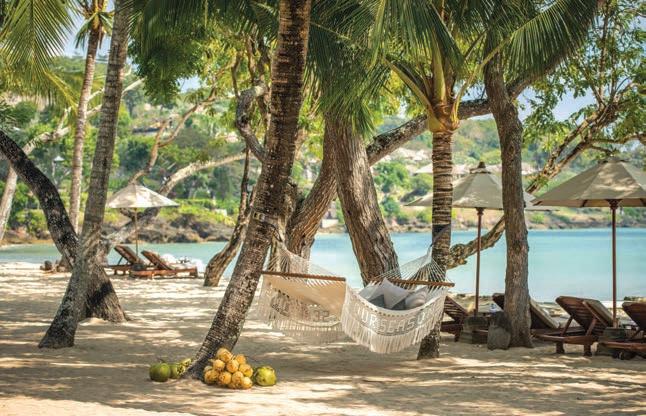

While we are very happy relaxing in our villa, it would be criminal not to explore the resort. is time we opt to walk instead of requesting a golf cart, meandering down to Sundara Beach Club via beautifully kept, ower- lled gardens, swimming pools, the Ganesha Cultural Centre, and many of the 500-plus shrines scattered throughout the 14-hectare property.
e beach club is home to: Sundara, a modern Asian restaurant and bar; ne-dining restaurant Taman Wantilan; and the pool terrace cafe, Alu. Together, these eateries have you covered from breakfast through to dinner. We enjoy hours at Sundara, meeting others in the in nity pool, or savouring a relaxing G&T, wine or Bintang. Jimba Kids’ Club is also located at the Sundara Beach
Club. We leave our daughter with a nanny on a few occasions, which enables us to enjoy some downtime in the resort while she runs riot under the watch of trained and lovely sta .
For a special dinner with a twist, we dine at Jala, a cooking school by day and restaurant by night. Guests are welcome to re ne their Indonesian cooking skills in the fully equipped space and return in the evening to enjoy a sumptuous culinary experience of authentic local cuisine.


No Bali holiday is complete without an obligatory spa treatment and at this resort, we are blessed (literally) to enjoy the signature spa experience, Blessings of Bali. is two-and-a-half-hour treatment brings a sense of calm and tranquillity, starting with a simple yoga class to calm your breathing and followed by a gong sound bath. It is my rst sound bath and I am pleasantly surprised – the sounds of the gong mixed with the sea air reverberate around me to extend my yoga zen. After a sleep-inducing massage (the good kind!), the experience is capped o with a light lunch and a traditional blessing from a local priest, an interesting insight into the religious culture of the Balinese people. e end of our stay comes around too fast; however, we couldn’t have hoped for a better family getaway. is resort has left a special mark on our family. We plan to come back to rejuvenate once again.

Package | Stay four nights, pay for three. Rates for a Premiere Ocean Villa start from IDR20,182,500++ (about A$2195) per night. For more information, visit: fourseasons.com/jimbaranbay
IN THE SLEEPY ITALIAN COMMUNE OF CASALBORGONE, A RECENT CASTLE RESTORATION HAS INJECTED A QUIET SPLENDOUR, WRITES KATE SYMONS
THERE ARE MILLIONS OF DOLLARS’ WORTH of antiques inside Castello di Casalborgone, a lavishly restored 18th-century castle in the rolling countryside of Italy’s Piedmont region. Yet its owners believe the item of most value is the quiet.
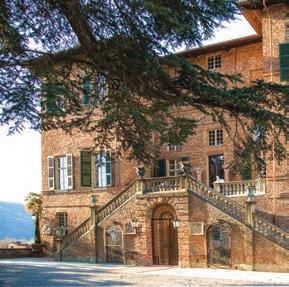

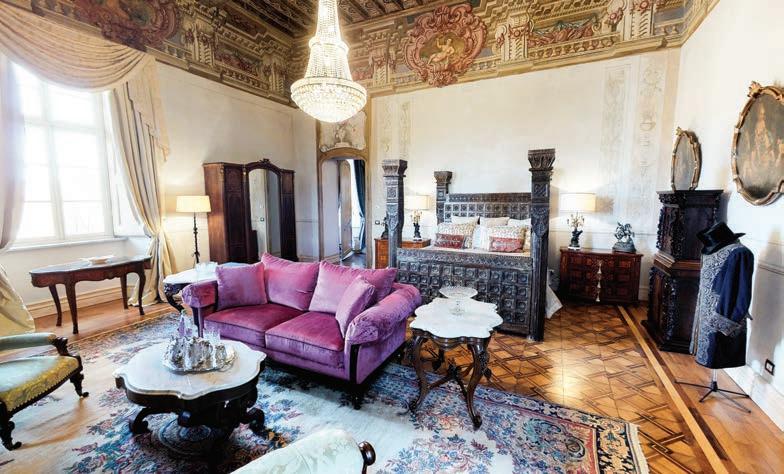
It is hard to argue against this notion as I open an oversized casement window, inviting the crisp morning air into my opulent Broglia Suite. I take a moment to admire the charming Italian landscape, one of my favourite things to do, which here comes complete with the snowcapped Swiss Alps in the background.
“ e thing that this place has that doesn’t exist any place else is this incredible peace and silence,” says Gary Douglas, American businessman, antiques a cionado and, as of 2016, Italian castle owner. “You sit at the castle and you hear the birds, the wind and the leaves. You don’t hear cars, planes, trains and buses. at’s very unusual.”
ere is quite a lot about this experience that is unusual. First of all, I am in a castle. Luxury I may be acquainted with, but this is next-level extravagance. My suite, the most decadent of the castle’s 12 boutique rooms, is a veritable museum, meticulously restored and adorned with antiques and artworks that ooze intrigue. e bedspread alone cost US$12,000. It was hand-crafted in Jaipur using gold thread and, for that reason, I am politely asked to refrain from having sex on it during my stay, although under is okay. I am a married woman travelling alone so I am not sure what to make of the request, but I kindly (and easily) oblige.
Also unusual, during lunch one afternoon – a formal a air held in the dining room – we take an unscheduled break to accept a fresco delivery. I watch as four brawny Italian delivery
men manoeuvre the precious cargo up the castle’s front stairs and into the grand ballroom. Away comes the wooden housing, unveiling the beautifully muted tones of an 18th-century Tiepolo. Pinch me.
Chiara Dolza, Castello di Casalborgone’s gracious host, is the most starstruck among us. A graduate of art history, she tries to articulate the signi cance: “ at you can touch it…” she trails o in awe as she rests a hand on the frame. “I will never wash my hands again.” ere is something else unusual about my stay. Not long after meeting Douglas, I am introduced to a number of his colleagues. Warm and hospitable, they are fellow Castello di Casalborgone investors and happen to be in town – an apparent rarity – during my stay. ey are also Access Consciousness ‘facilitators’. Douglas founded Access Consciousness, >>
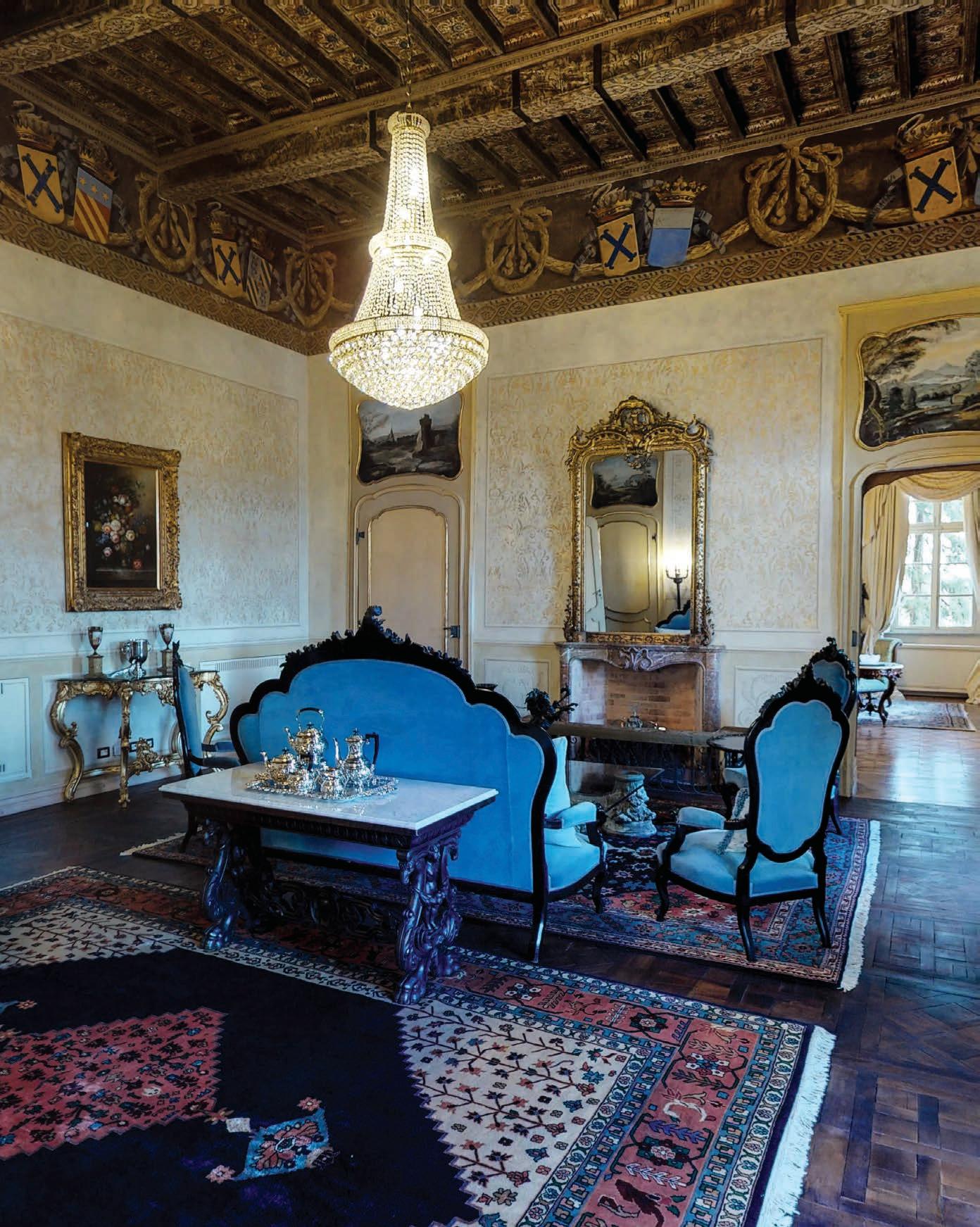
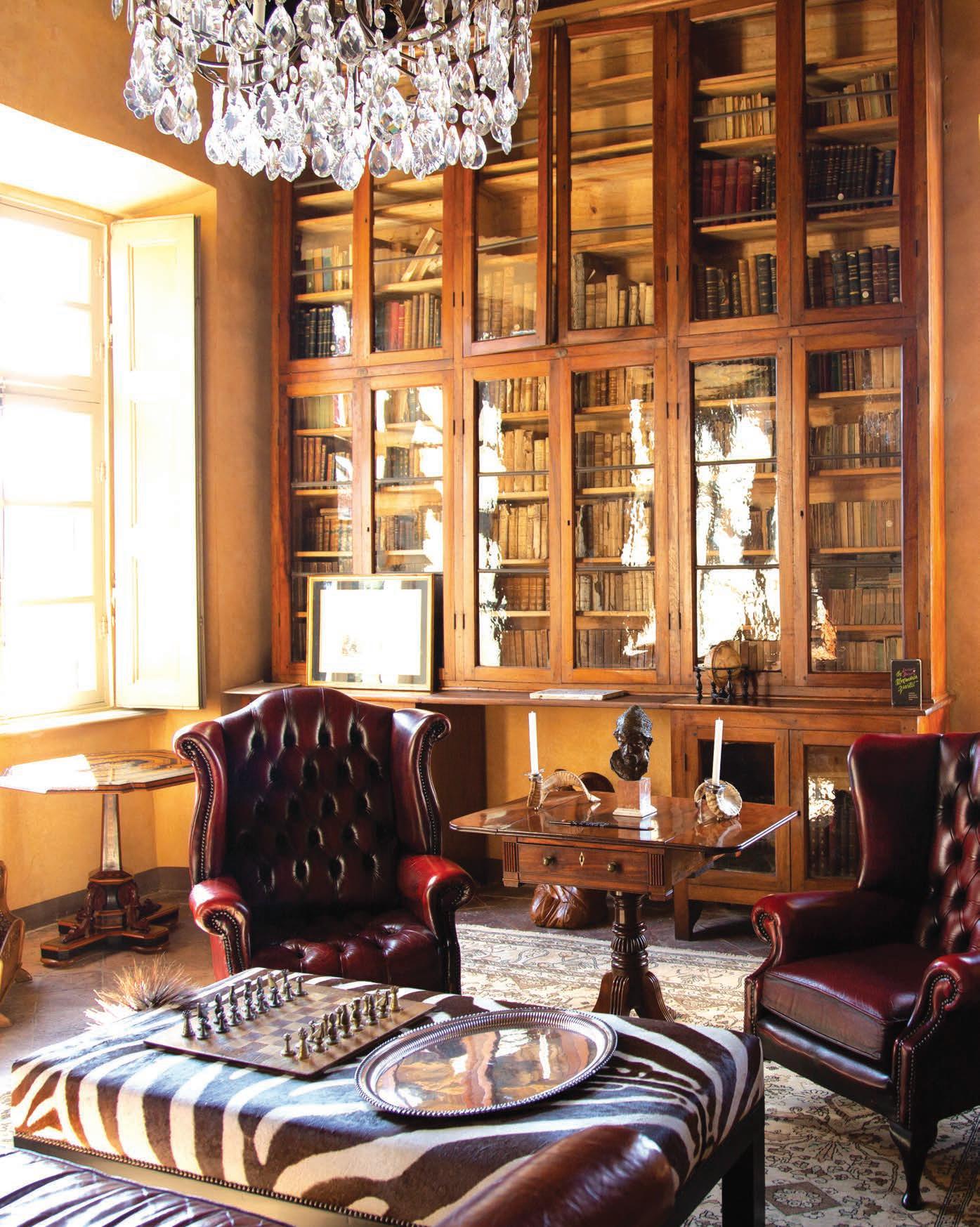
a movement based on the idea that consciousness can shift anything, in 1995. It is not a pyramid scheme, Douglas insists after I asked the question during our interview in the cigar room, and it is not a cult, I am told by another facilitator in passing, without asking.
I am unsure what to make of Access Consciousness, but I am certainly wary. Thankfully though, analysing Douglas’s career is not my assignment. Instead, I am charged with depicting Castello di Casalborgone and, on that, my mind is considerably clearer. This is a special place.
Douglas came across Castello di Casalborgone quite by accident. In fact, the septuagenarian believes the castle found him, rather than the other way around. He feels similarly about the interiors. Douglas handpicked every item in the restored property, aided by his knack for spotting treasures at flea markets, estate sales, garage sales and antique shops. Noteworthy pieces include a 300-year-old Aubusson tapestry, candlestick covers from the last Kings of Iran and Baccarat chandeliers from Persia. Another tapestry, now hanging Tiepoloadjacent, is believed to have once belonged to Hitler. The rumour alone demands attention.
Douglas developed his taste for the finer things in life at a young age, inspired by his aunt.
“She ate off of fine china, she drank out of crystal glasses and she had sterling flatware to eat on every day. I thought, ‘I want to live like this’,” he explains.
He has attempted to recreate this hedonism at Castello di Casalborgone, and has succeeded. When he purchased the property, it had been empty for 40 years. It took just one to reinstate the Renaissance-esque magnificence that now fills the centuries-old castle walls (although, when shopping, Douglas isn’t loyal to any one era).

There was local resistance to the sale, which continued through-out the restoration, but Douglas says Casalborgone residents have come to embrace the changes. After all, the castle is once again part of community events and the grounds are open to the public.


“I really wanted us to be a contribution to the community,” Douglas explains. “I didn’t want this to be somewhere we were taking away. That’s not really my perspective in life,” he says.
There are no TVs at Castello di Casalborgone. No sound system either. You are welcome to enjoy your own digital entertainment, but only with headphones. The library boasts more than 7000 books and is enveloped in the musty vanilla scent of their collective age. The gardens are expansive, tranquil and perfect for aimless wanders. Wander a little further and the commune of Casalborgone offers all the charming sights you’d expect from a small Italian village: a quaint and well-attended church; a fruit shop dominated, fittingly, by greens, reds and whites; a schoolyard bursting with young exuberance; an espresso bar... and another, and another; all peppered with the colour and delight of brimming window box planters.
One macchiato down, it takes double-shotsized strength to decline a second cup of rich Italian coffee, but I am not chasing a caffeine high. Quite the opposite. I am headed back up the hill to my castle. A place of calm. And of restoration in more ways than one.
Castello di Casalborgone is located in Piedmont, about 40 minutes’ drive from Turin and 90 minutes from Milan.
General rates start at €450 (about A$725) per night. Rates for the Broglia Suite start at €550 (about A$900) per night.
For more information, visit: castellodicasalborgone.com
It has been a harrowing summer in Australia. With much of the country already suffering under crippling drought, raging bushfires tore through community after community, leaving devastation in their wake. And then, as if to reiterate her power, Mother Nature brought flooding to the table.
As passionate travellers, we have gained so much from this country. We want to return the favour.
For every full price subscription of Luxury Travel Magazine purchased this year, we will be donating $10 to BlazeAid.
Plus, starting with our Winter 2020 cover story, Luxury Travel Magazine and luxurytravlmag.com.au are launching Holiday at Home , a new section dedicated to celebrating regional and rural Australia. The initiative is designed to complement Tourism Australia’s ‘ Holiday Here This Year ’ campaign, and we hope it will inspire readers to do just that.
After all, despite the heartache, we believe we are still the Lucky Country.
I love a sunburnt country, A land of sweeping plains, Of ragged mountain ranges, Of droughts and flooding rains. I love her far horizons, I love her jewel-sea, Her beauty and her terrorThe wide brown land for me!
- Dorothea Mackellar, My Country
TWO INCREDIBLE DESTINATIONS. TWO CELEBRATED PROPERTIES. AND TWO VERY DIFFERENT STORIES OF RESILIENCE. BY KATE SYMONS


IF YOU’VE BEEN TO PAPERBARK CAMP, YOU’LL KNOW the magic . Set among 40 hectares of otherwise untouched bushland, the tented camp is an icon of Australia’s luxury travel market. The site is surrounded by beautiful casuarinas, spotted gums and, of course, paperbarks. It is home to Eastern grey kangaroos, brushtail possums, king parrots, crimson rosellas and sugar gliders. It is a launchpad for the natural wonders of Jervis Bay. It is a genuine sanctuary and an incredible showcase of our Great Southern Land.

In early January, powerful and unrelenting fires tore through many parts of the Shoalhaven. Paperbark Camp was spared.
“We’ve had fires before, but we really felt this could be it this time,” recalls Director Camilla Hamilford, whose parents opened Paperbark in 1998. “We know Paperbark is not defensible… so we just made sure everyone was out.”
Although Paperbark survived physically unscathed, it did take a hit. January is “peak, peak” season for Paperbark yet occupancy for the month fell to 36 per cent, down from last year’s January figure of 98. But it was staff who suffered most, says Hamilford, with many going without shifts for weeks. Still, Hamilford says there is a genuine sense of survivor’s guilt knowing others, so many of them Shoalhaven neighbours,
have a much tougher recovery ahead. She has thrown her support behind initiatives such as Turia Pitt’s ‘Spend With Them’ and Tourism Australia’s ‘Holiday Here This Year’, and hopes others will do the same.
“[The situation is] making everybody much more cognisant of the impact of tourism and how it really is the lifeblood for so many of these communities that no longer have their old traditional industries,” says Hamilford. “Tourism is everything to them.
“It’s not just the Paperbarks or the more well-known places, [small businesses] bring people into the communities and draw a focus on these areas and then create so many jobs and opportunities. It’s vitally important [we support them].”
A significant groundswell of support has already been seen across the country, and from further afield, particularly by way of financial donations. The display of community spirit has been heartening, though perhaps not surprising. It bodes well for recovery.
“It’s been amazing watching [locals support each other and] even the whole of Australia,” says Hamilford. “It’s pretty incredible what we can do when the chips are really down.
“We’re stronger together.”
“We’ve had fires before, but we really felt this could be it this time. We know Paperbark is not defensible… so we just made sure everyone was out.”


IF YOU’VE BEEN TO SOUTHERN OCEAN LODGE, YOU’LL know the magic. Set next to the thundering Southern Ocean on Kangaroo Island, the wilderness lodge is an icon of Australia’s luxury travel market. The site is surrounded by expansive heathland and mallee scrub, and wonderfully fresh sea air. It is home to seals, dolphins, whales, koalas and, of course, kangaroos. It is a launchpad for the natural wonders of Kangaroo Island. It is a genuine sanctuary and an incredible showcase of our Great Southern Land.

In early January, powerful and unrelenting fires tore through the western end of Kangaroo Island. Southern Ocean Lodge was destroyed.
“When you put your heart and soul into the creation of something and then to see it just disintegrate… there’s just nothing. It is such a feeling of loss,” says Hayley Baillie who, together with her husband James, opened Southern Ocean Lodge under the renowned Baillie Lodges portfolio in 2008.
“[It was] only four weeks after the fire and there [were] already low-lying green and red succulent-type coastal plants,” says Baillie. “Some of them [were] just little buds coming out and others [were] a metre-by-metre square patches, already after just four weeks.
“You realise it’s nature’s way. The bush will all regenerate and within a couple of years it will all be green and bushy again.”
“We’ve been dealt a blow but we’ll get through. Tourism people are resilient. We just get on with it.”
It’s hard to ignore the metaphor. New life is already sprouting, just as new life will be injected into Southern Ocean Lodge. The Baillies have committed to rebuilding the property and clock the “best case scenario” at two and a half years. There are no plans for dramatic change. The Baillies remain fond of Max Pritchard’s timeless design and want returning guests to walk into a familiar, beloved space.
A visit to ground zero four weeks after the fire was a chance for the Baillies to assess the destruction and, although it was difficult to comprehend the blackened rubble, there were promising signs of life. Two wallabies grazing where the staff village once stood, currawongs sharing their distinguishable birdsong, and the resident echidna still meandering like a boss. Vegetation was also on the move.
Meanwhile, Kangaroo Island remains open for business. Although about 40 per cent of the island was reached by January’s bushfires, around 250,000 hectares in the east remain unaffected, including Seal Bay, Raptor Domain and the KI Wildlife Park. Like Paperbark’s Hamilford, the Baillies are throwing their weight behind the ‘Holiday Here This Year’ message. And while you’re busy exploring home turf, Southern Ocean Lodge will be reborn.
“We’ve been dealt a blow but we’ll get through,” says Baillie. “Tourism people are resilient. We just get on with it.”
Luxury Travel Magazine is pleased to present the 16th annual Gold List awards. The Gold List celebrates the best in luxury travel in Australia and around the globe, as voted by our readers.
Voting closes at 5pm on Friday 3 April 2020.
Winners will be announced online on Thursday 28 May 2020 and in the Winter issue of Luxury Travel Magazine.
Don’t miss your chance to vote at:
luxurytravelmag.com.au/goldlist
For Gold List enquiries, please contact Richard Bunting at rbunting@luxurytravelmedia.com.au
Answer the final question on the online voting form to go in the draw to win one of these extraordinary prizes:
A SOUTH AFRICAN ADVENTURE COURTESY OF KER & DOWNEY® AFRICA, INCLUDING 3 NIGHTS AT FAIRLAWNS BOUTIQUE HOTEL AND 2 NIGHTS AT TINTSWALO LAPALALA PLUS ONE OF FIVE 12-MONTH SUBSCRIPTIONS TO LUXURY TRAVEL MAGAZINE

 5 NIGHTS AT THE LUXURIOUS PULLMAN MALDIVES MAAMUTAA
5 NIGHTS AT THE LUXURIOUS PULLMAN MALDIVES MAAMUTAA
MODERN DESIGN-LED HOTELS DELIVER MORE THAN IMMACULATE FACADES. CREATIVE CONCEPTS AND INNOVATIVE PROGRAMMING MAKE FOR TRANSFORMATIVE GUEST EXPERIENCES
Words by MADELIN TOMELTY


Adated, printed bedspread; the token, geographically vague landscape painting on the wall; high-gloss wooden furniture; a bulky TV cabinet with a puzzling amount of storage; beige walls, beige carpet, a beige bathroom and a beige ambience. It wasn’t so long ago that hotel rooms looked like this. As recently as the 1990s, boutique hotels with design-led interiors were thin on the ground. e hospitality landscape was dominated by global hotel chains that had a uniform look, so that whether you were in Bangkok or Berlin, your experience would be largely the same.
Today, the very opposite is true: a boutique hotel revolution de ned by intelligent design, luxurious comforts and local avour is sweeping the globe. High-thread-count linens and expensive goose-down duvets top sumptuous beds; unique artworks by local artists that have been handpicked for just that room adorn the walls along with a mounted TV o ering complimentary Net ix; beautiful wooden oors are underfoot; designer ttings pepper the room; and the ambience is one of warmth and familiarity, the likes of which used to be found only in high-end residential apartments. Guests can even stay at the same hotel repeatedly and have a completely unique experience each time, thanks to the rise of individualised rooms.
e humble hotel has become an experience in and of itself, rather than playing a supporting role in a riveting holiday tale, and Design Hotels founder, Claus Sendlinger, saw it coming a mile away. He knew there was a need for a portfolio of curated boutique hotels, because that was the kind of hotel he and his friends wanted to stay in, and yet they were rarer than hens’ teeth. In 1993, Sendlinger launched Design Hotels, the rst hotel marketing consortium dedicated to design-led accommodation, with just 10 unique member properties that de ed the copy-andpaste ethos typical of previous decades. e company now has a portfolio of 350 hotels in more than 200 destinations around the globe, and of the 400 member applications Design Hotels receives each year, an average of just ve per cent are accepted, based on a rigorous selection criteria. Aesthetic is important, but even more


so is whether the project has an original, distinct and timeless concept underpinning it.
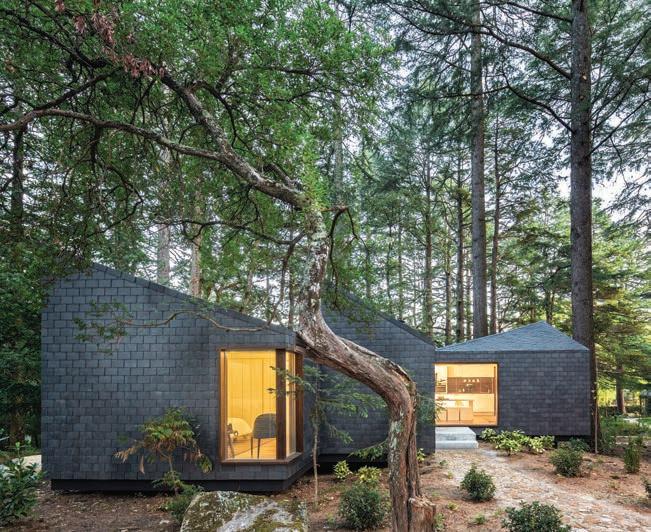
ese hotel concepts, conceived by visionary hoteliers Design Hotels call ‘Originals’, “can aim to uncover a destination or showcase an aspect of a place,” says Jinou Park, Vice President, Asia Paci c at Design Hotels. “ e concept can be applied in the architecture and interior design, programming at the hotel, food and beverage concepts – it is how everything is executed and falls into place that tells a distinctly unique story.”
Rosie Morley, Associate Director at award-winning Melbourne design rm Carr, agrees that good looks alone aren’t enough in the now-competitive landscape of boutique and niche lifestyle hotels. She sees this shift to concept, and the idea that good hospitality design is founded on an authentic narrative, as one of the biggest changes that has occurred in the industry over the past decade.
“One of the big changes is that sensory engagement, of making sure we’re orchestrating an immersive experience that touches all of those senses, because we remember environments through >>
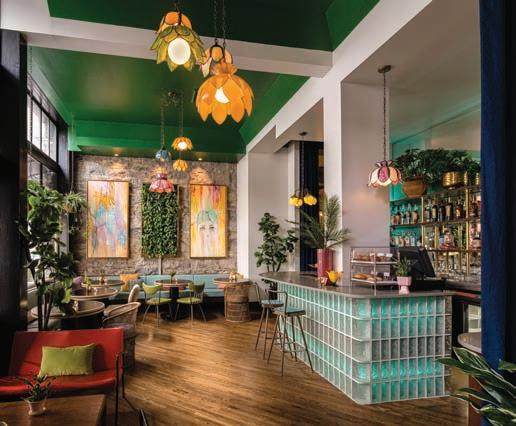
Designed in partnership with legendary architect Kengo Kuma — the principal architect for the 2020 Tokyo Olympic Stadium — and award-winning and longtime Ace partner, Commune Design, Ace Hotel Kyoto will open on 16 April 2020 as a 213-room hotel. Constructed within a part new-build and part-historic structure that was once home to Kyoto Central Telephone Company, Ace Hotel Kyoto will feature an animated lobby, a verdant garden courtyard, a gallery, event spaces, collaborations with local artists, a cafe and three standalone restaurants.

“Kyoto has been a longstanding global hub that has provided inspiration for countless artists, designers, musicians, filmmakers and poets,” says Kelly Sawdon, Partner and Chief Brand O cer, Ace Hotel Group. “Kyoto is a city that generates creativity and inspires travel, and we hope Ace will serve as a central gathering place for locals and travellers.”
A thoughtfully designed and vibrant space, Ace Hotel Kyoto will stand as a monument to the creative epicenter of Japan that exalts simple pleasures and respect for traditions.
Says Kuma, Principal at Kengo Kuma and Associates: “I intended to design a ‘Cultural Catalyst’ for various people to visit and create a seamless relationship with Kyoto’s community.”


CASE IN POINT: MOXY NYC EAST VILLAGE
With interior design by Rockwell Group and architecture by Stonehill Taylor, Moxy East Village is conceived as a vertical timeline, drawing inspiration from various eras in East Village history, from rock ‘n’ roll and renegade art to LGBTQ+ activism and the punk era. Interior design is inspired by urban archaeology, with the hotel’s 13 floors loosely conceived as homages to the East Village’s American counterculture scene through the decades.
Located directly across from the legendary concert venue Webster Hall, the hotel features 286 design-driven bedrooms, co-working spaces and tech-savvy amenities, as well as lively restaurants and bars – all at an a ordable price.
Part of Marriott International’s experiential Moxy Hotels brand, Moxy East Village has a focus on playful cultural programming, allowing the hotel to integrate into the broader community, introducing guests and locals to the neighbourhood’s creators, tastemakers, and businesses. “We conceived of the hotel as a sort of crossroads: Guests can use it as a starting point for their explorations beyond the four walls, and local creators and businesses can use it as an extension of their community,” said Mitchell Hochberg, President of Lightstone, who developed the property. Among the innovative features, Talk@Moxy is an ongoing series of discussions showcasing local voices and the #SweatatMoxy series introduces guests and locals to area wellness experts who will o er morning rooftop meditation sessions as well as meditation videos on the in-room TVs.

“The move towards small-footprint, boutique properties has diversified the hotel landscape, allowing unique accommodations to open in unexpected places.”
that,” says Morley. at means considering how guests access the space, how they arrive, how they move through the space, what they see, and what they feel. “It’s not [just] the room, it’s not [just] the meal, it’s the entire experience,” she says.
Carr Design Group is behind such hotel game-changers as Mornington Peninsula’s Jackalope and United Places in South Yarra. Both properties are heavily concept-led, with ultra-contemporary Jackalope setting a new standard of hotel design when it opened in 2017 looking nothing like any regional winery property anyone had ever seen. An alchemic narrative of wine creation weaves its way through every part of the vineyard property, with details such as apothecary-style tubes in the bar, 10,000 light globes covering the ceiling of the hatted restaurant, and a moody, dark hallway lit by multicoloured neon ceiling lights. Getting from the front door to your room is an all-encompassing journey that plays on each of the senses and immerses guests in the world of wine-making.

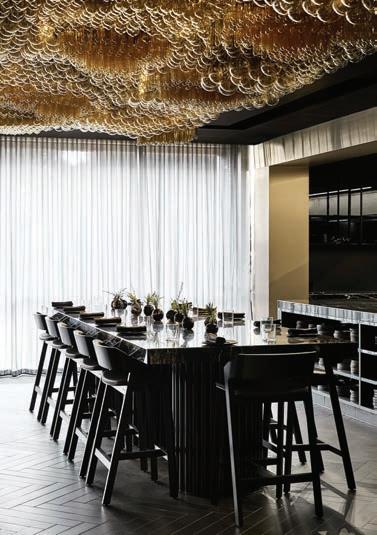
At Design Hotels member property Tsingpu Tulou Retreat in rural China, the narrative is one where guests feel as if they


have landed in 17th-century China. Drawing inspiration from ancient Chinese customs, Tsingpu Tulou Retreat aims to bridge the gap between local tradition and contemporary design, with “a humanistic architectural approach so as to present the hotel as being inseparable from its environment,” according to the Design Hotels website. An original and weather-worn exterior, centuriesold rammed earth and wooden buildings and a traditional Chinese courtyard complement a minimalist interior that quietly echoes the simple ways of traditional Chinese life. On-site activities inspired by artisanal customs like citrus-tea making, bambooshoot scavenging, paper cutting, Tulou wood painting, and local tea and porcelain production further immerse guests in a bygone era, creating an experience that is heavily steeped in its location.
Think Globally, Act Locally is idea of rooting a hotel’s concept and design in its location is one of the most exciting characteristics of the current hospitality renaissance, and one not only seen in heavily concept-driven hotels like Tsingpu Tulou Retreat and Jackalope. e move towards small-footprint, boutique properties has diversi ed the hotel landscape, allowing unique accommodations to open in unexpected places. “We look for innovation in all aspects of hospitality that have the power to deliver a transformative, purposeful experience,” says Park. “ is is why our member properties are not destination-led and can equally be found in global cities as well as remote o -grid hideaways.”
In Sydney, small, stylised hotels the likes of e Old Clare in Chippendale and Hotel Palisade in e Rocks have put heritage suburbs and local neighbourhoods on travellers’ radars. It is now not unusual for travellers to decide on the area they will stay in based on a particular hotel that piques their interest. “ ese hotels help discerning travellers feel special and add relevance to their trip,” states a 2018 Tourism Accommodation Australia (TAA) report on the nation’s hotel revolution. In this way, hotel design is playing a role in transforming the way we travel, a ecting how we experience new destinations and even reshaping entire locales. >>
Morley believes these design-led, experiential lifestyle hotels in unlikely places o er “the promise of another world.” She adds: “It’s suggesting a transformational experience of some description, it’s suggesting an elevation of lifestyle and it links right back to the values that Millennial travellers have.”
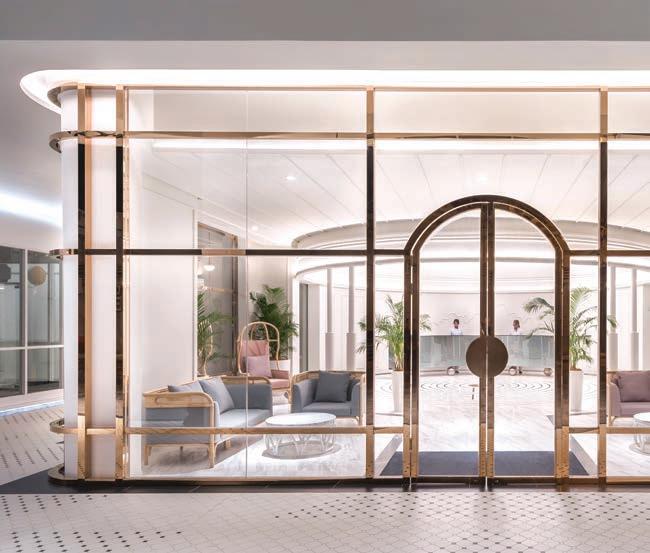
e literal translation of this “think globally, act locally” attitude, as the TAA report puts it, is the incorporation of speci c design features into hotels that are unique to that destination. “From prime city locations to pristine resort locations, hotel design today is aimed at complementing the landscape, becoming an integral component of the local area,” it says.
e design uniformity of chain hotels is becoming a distant memory, with large-scale new builds like the recently opened e Ritz-Carlton Perth having grounded its entire design, experience, and food and beverage concepts in the unique qualities of Western Australia. e hotel’s palette of natural earth tones nods to the hues found in the state’s rugged landscapes, and luxurious natural materials, such as an extraordinary 10,000 pieces of handpicked Kimberley sandstone, feature on the building’s exterior and in the lobby. e hotel’s signature restaurant, Hearth, o ers new interpretations of the classic Australian barbecue and showcases the region’s beautiful produce; the menu at its cocktail bar, Songbird, focuses on native Australian botanicals; and the spa treatments are inspired by Australia’s natural healing products. Restoration projects have become another way for hotel brands to debut hotels with a story or narrative already inbuilt. For example, in 2019 InterContinental Lyon – Hotel Dieu opened in one of the city’s most iconic and historic buildings, the hospital Hotel Dieu, after a painstaking four-year restoration by renowned interior designer Jean-Philippe Nuel. Also last year, Six Senses announced it will open in London’s former Whiteleys department store, a grand Art Deco site, in 2023 in what will be its rst home in the UK. Similar restorations are being seen across Australia, from the industrial conversions of Sydney
(Paramount House Hotel) to the public-building restorations of Perth (COMO e Treasury) and heritage-house conversions of Tasmania (Ship Inn Stanley).



There’s No Place Like Home Hotel
Answering the call of the sophisticated new traveller pursuing aesthetic beauty and destination immersion is the new wave of out-of-the-box, wilderness hideaways that seem to defy the very idea of a hotel. Igloos in the Arctic, bubble rooms in the jungle, tents in the desert, treehouses, tiny homes, converted ships and underwater rooms such as Queensland’s Reefsuites attempt to nd balance between the authenticity and simplicity of nature and the aspirations of modern life. “It’s no longer enough to accept a hotel for being simply ‘a bed for the night’ – it’s a key part of >>
At the recently opened hotel Treehouse London, every detail has been imagined through the lens of childhood, with guest rooms featuring cuckoo clocks and sleeping bag throws, and programming such as resident horticulturalists giving tours of local gardens, book clubs and poetry slams on o er.

“Hotel designers are increasingly blurring the lines between interior and exterior spaces, with vertical hydroponic gardens, indoor waterfalls, multilevel terraces and rustic wooden furnishings enabling guests to connect with nature... Living green walls are now a feature of exterior and lobby design and there is greater emphasis on using natural lighting, along with direct and indirect exposure to nature.”

Tourism Accommodation Australia 2018 Hotel Innovation Report
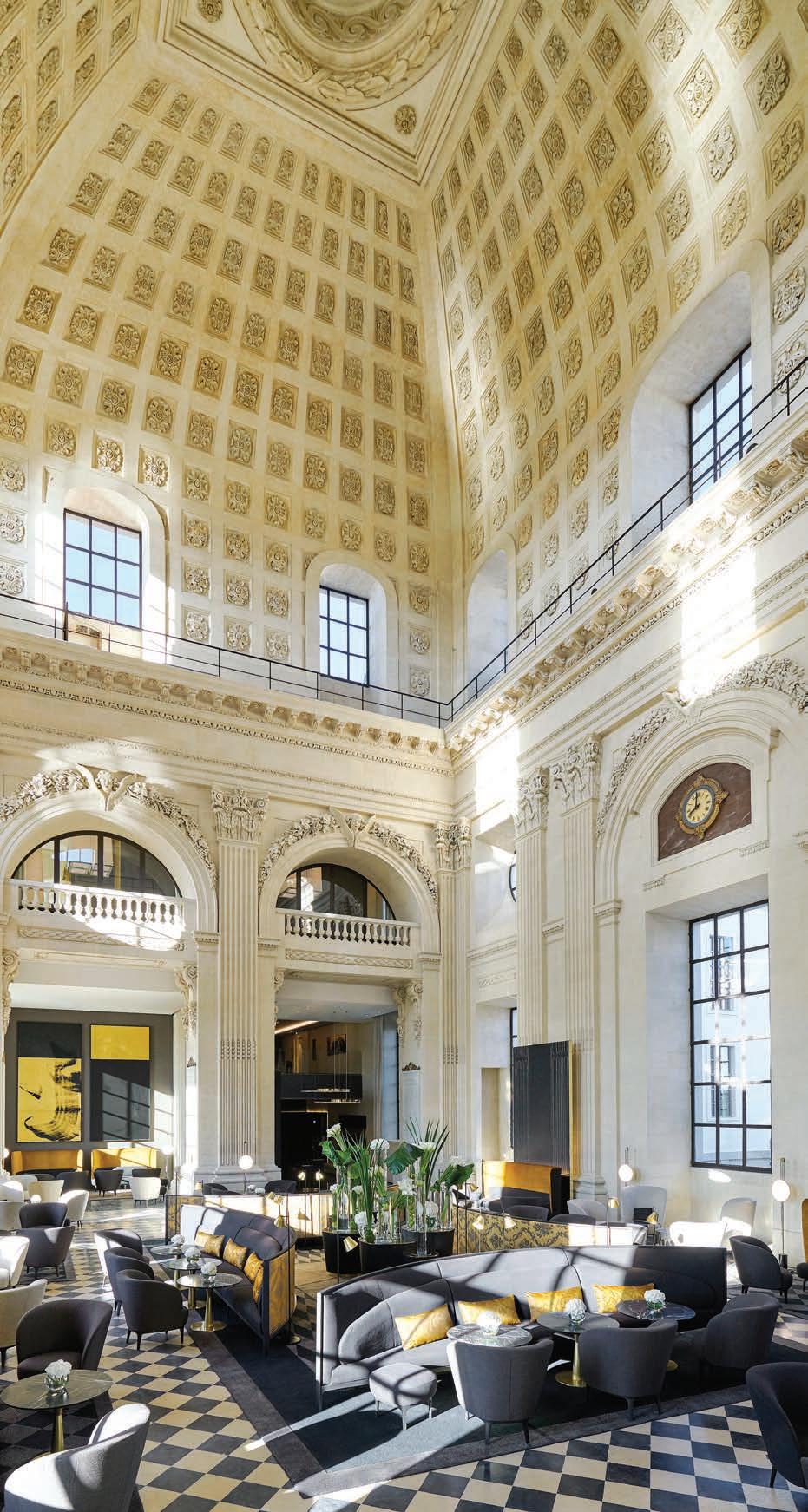
“From prime city locations to pristine resort locations, hotel design today is aimed at complementing the landscape, becoming an integral component of the local area”
Singapore-based Next Story Group launched its first combined co-working space and hotel brand in Sydney’s Alexandria last year.

88% of guests expect traditional room keys to be ditched in favour of facial recognition for room access within the next 30 years
81% foresee in-room augmented reality functions that would enable them to speak face-to-face with friends and family
79% hope room service will become more intuitive, with artificial intelligence knowing the kind of food and drink individuals might want to order
69% said they do not want to see single-use plastic in the hotels of the future
72%
want interactive mirrors that enable them to try di erent looks virtually
74% want a personalised virtual concierge assigned to them
Source: Globetrender and research by Yotel
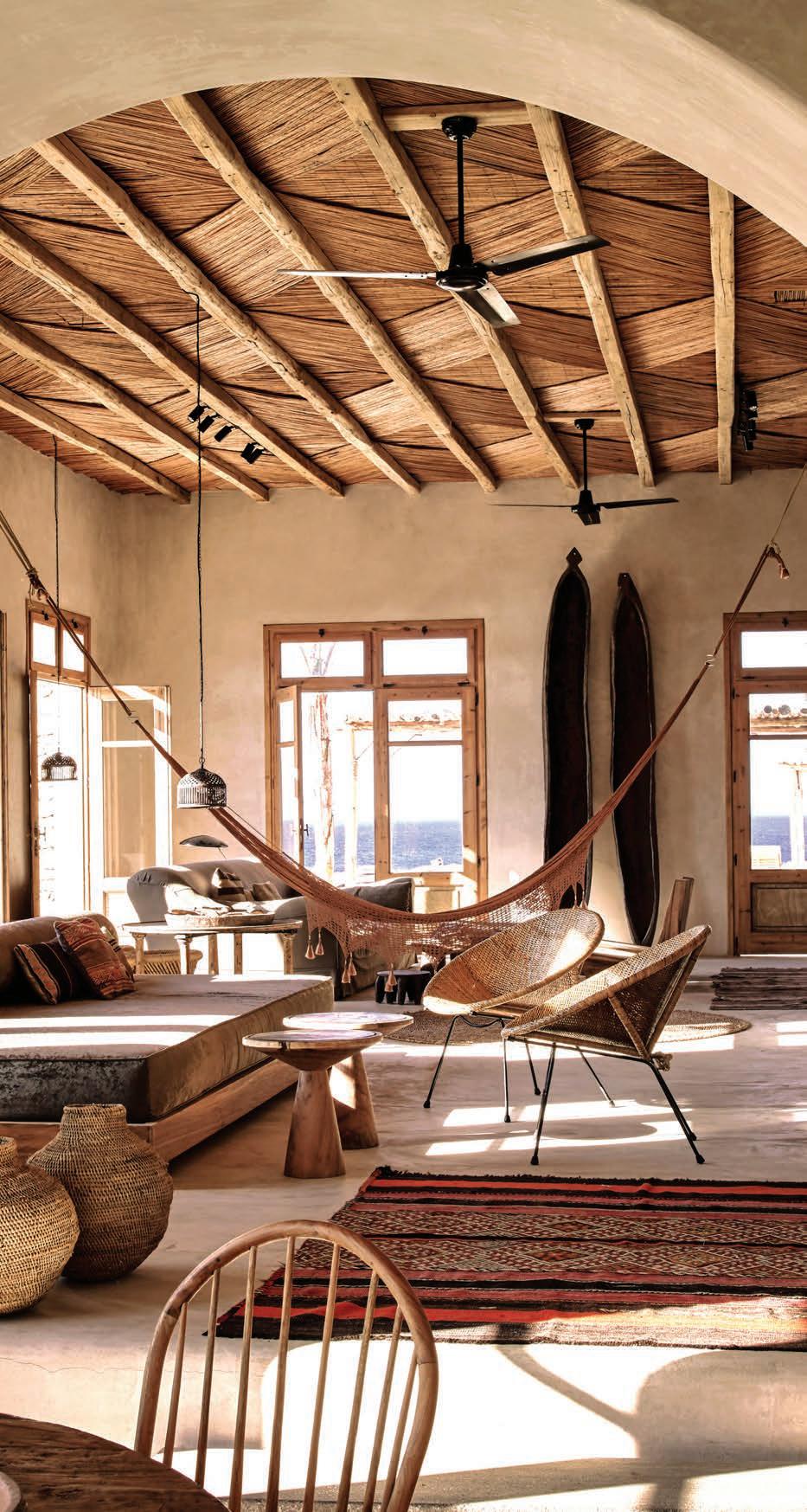
the holiday, and people are looking to get a ‘sense of place’ rather than a ‘home away from home’,” says Jenny Southan, editor and founder of Globetrender, an online magazine and travel trend forecasting agency in the UK.

And yet, rising in tandem with quirky nature hideaways is a new wave of hotels that feel more residential than commercial in form and function. “ ere’s a lot of in uencing back-andforth between the common spaces in hotels, restaurants and residential spaces... now every workplace looks like a restaurant and every home o ce looks like a public space in a hotel,” says Design Hotels’ Park. is ‘home as hotel’ revolution sees architects and interior designers transforming traditional hotel lobbies into living room-style social hubs, and hotel rooms into cosy boudoirs so that from check in to check out the guest experience is one that re ects the comforts of home.



For Morley, that home-share rental sites like Airbnb have shifted the market and played a part in the home-hotel revolution is undeniable. “I think that the rise of Airbnb is one of the game-changers... Airbnbs link directly into something that feels very, very personal – that’s what people want,” she says. You only have to walk into a new-build hotel in any Australian capital and nd an interior that feels personalised, localised and humanised in a way that hotels never used to be. Morley explains it as removing the “corporate” factor and “prescriptive spaces” from hotels, so that guests have greater autonomy and a choice in how and where they spend their time in the hotel. “ ey feel like they’ve discovered something or that they’re able to choose how they occupy or use the space,” she explains. “At home, you just choose everything as you want it to be. So we look at the conventions of hotel design and bring that back down to be closer to the experience you have arriving at your own home.” is includes the use of ambient lighting and a greater emphasis on natural light; the incorporation of sustainable, natural materials like plants, wood and reclaimed stone; and the introduction of smart technologies such as keyless entry and in-room iPads.
Today’s hospitality designers are coming up with innovative ways to catch and hold visitors’ attention by o ering myriad touch-points on site. Lobbies are now playing host to interactive cafes and delicatessens, co-working spaces, art displays, boutiques, oversized lounges that invite… well, lounging, and complimentary experiences like daily cheese and wine hours, rooftop yoga and mixology classes. Hoteliers are entering into partnerships with renowned chefs to create design-focused onsite restaurants that come with instant credibility, along with bars that beckon a breed of stylish, trend-sensitive guests and locals to linger longer and socialise. Even partnerships with car brands, fashion brands and champagne houses have become the norm among Millennial-focused lifestyle hotels. >>
Morley says creating an experience that is unique and which guests can’t nd elsewhere is an absolute top priority among hotel clients, and this includes creating spaces that are instantly interesting and highly ‘Instagrammable’. “In our design, we have to be aware of providing ample opportunity to encourage that selfperpetuating marketing campaign that social media brings you. In the last ve years, I feel like that is something that is always on the brief – it has to be Instagram-worthy,” Morley says.
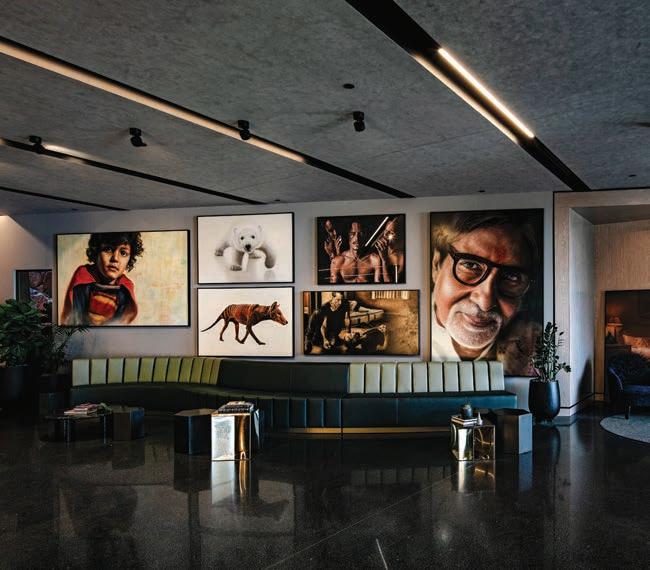

And what could be more Insta-worthy than the tallest mural in the Southern Hemisphere? Perth’s Art Series hotel, e Adnate, features just that, taking up an entire side of the exterior of the 25-storey building, acting as a permanent reminder of the hotel’s design-led, experiential o ering. Blink and you won’t miss it. Hotels are now embracing art as an integral part of their design DNA, with some even boasting purpose-built galleries in addition to a curated selection of wall art and sculptures throughout the property.

Each of the 199 guest rooms at Midnight Hotel in Canberra, for example, features a custom artwork designed and created by acclaimed artist omas Bucich. Part of Bucich’s ‘Relic’ series, each piece features reclaimed Australian wood and bark plated in copper or nickel, is one-of-a-kind and was created solely for Midnight Hotel. Further advocating original art, each level of the hotel features a bespoke artwork by Australian artist Tom Adair, part of the ‘Uncovering Braddon’ series that shines a light on hotel’s neighbourhood. One of Crystalbrook Collection’s three Cairns hotels, Bailey, has dedicated spaces for art in public areas, and each of the 12 guest oors features a separate artist, with this art changing regularly. e hotel also hosts quarterly art initiatives such as exhibitions, evening classes, poetry recitals, dance performances and even live gra ti sessions. e Peninsula Hotels’ Art in Resonance program uses a ‘Travelling Gallery’ of contemporary art by emerging artists that moves between the brand’s 10 global locations. Each hotel also hosts artist talks, studio visits and panel discussions with leading artists, creatives and thinkers.
Meanwhile, in the village of Braemer in Scotland, not far from the royal Balmoral Estate, private country house-style boutique hotel, e Fife Arms, owned by the founders of modern art gallery Hauser & Wirth, boasts an extensive, eclectic art collection of more than 14,000 pieces from the 19th century to today that have been thoughtfully integrated into every >>

IT’S HARD TO KEEP UP WITH THE NUMBER OF BOUTIQUE HOTEL BRANDS THAT HAVE OPENED IN RECENT YEARS. EVEN HOTEL JUGGERNAUTS IHG, ACCOR, HILTON AND MARRIOTT HAVE ALL LAUNCHED A NUMBER OF BOUTIQUE HOTEL COLLECTIONS. BIG NAMES INCLUDE...
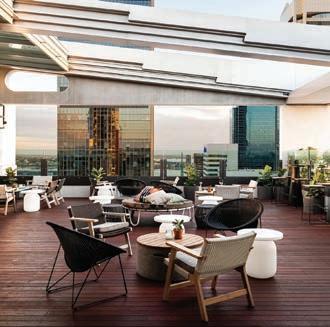
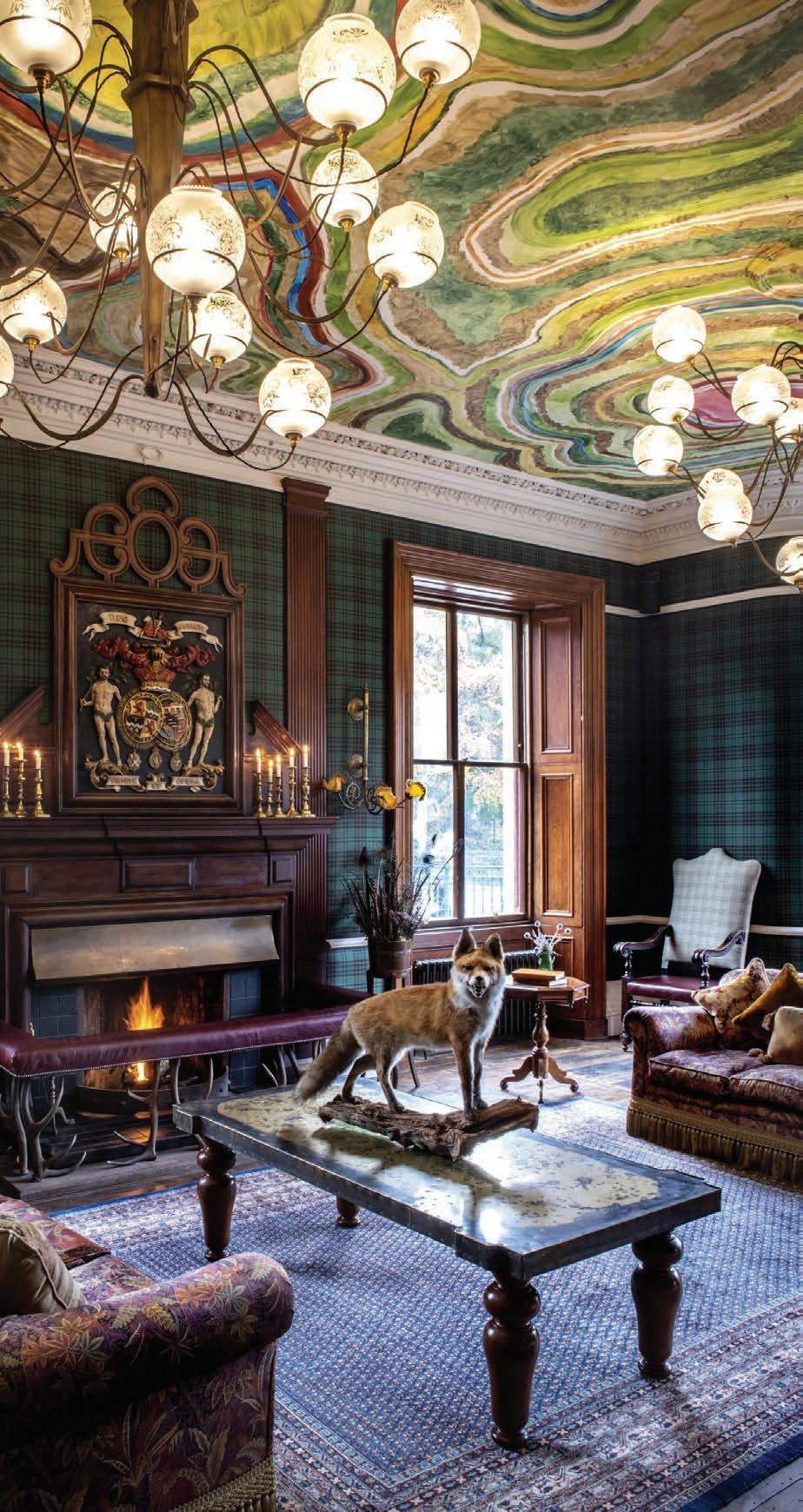
Ovolo Hotels
QT Hotels & Resorts
Voco (IHG)
Indigo (IHG)
MGallery by Sofitel (Accor)
SO/ (Accor)
Art Series (Accor)
Moxy (Marriott)
Edition Hotels (Marriott)
Aloft (Marriott)
Curio (Hilton)
Autograph Collection (Marriott)
“Each hotel in the Autograph Collection is a product of vision, handpicked for its mark of craft, heartfelt design and authentic sense of place. These principles guide the curation of the portfolio, ensuring each hotel experience is remarkably unlike anything else.”
SEAN HUNT
JENNY SOUTHAN FROM GLOBETRENDER DISCUSSES WHAT THE HOTELS OF THE FUTURE COULD LOOK LIKE
Capsule Hotels
“I am particularly interested in micro or capsule hotels, which have been big in Japan for decades but are only just catching on in the West. Yotel has been a forerunner but there are lots of other interesting brands such as Citizen M, Moxy, Motto, Sleepbox, Hoxton, Mama Shelter and Sister City. To make up for having tiny rooms, some of these properties have vibrant and expansive public spaces that include co-working areas, libraries and co ee lounges.”
Luxury Bunks

“Another cool trend is ‘luxury bunks’ whereby hip hotel brands are deliberately catering to family and group stays – LifeHouse, Jo&Joe and Generator are great examples of companies that have reimagined a concept that was once exclusively associated with hostels and budget travellers.”
AI
“Over the next 10 years I predict an increase in the use of artificial intelligence in hotels, which will enable innovations such as facial recognition and robotics. Over in Hangzhou, China, the Flyzoo hotel already lets people use their face to unlock doors and pay for food in the restaurant, while new Nhow hotel in London has a robotic butler that will deliver towels and water to your room. We can also expect built-in voice control technology that will allow guests to chat to an in-room assistant like Siri or Alexa, instead of having to fiddle with switches to turn o the lights.”
“Smart hotel design is transcending the ranking system, stretching and redefining the luxury hotel sector and closing the space between the stars.”
nook and cranny. Treasured antiques, including a watercolour of a stag’s head painted by Queen Victoria, sit alongside contemporary commissions by leading international artists such as Subodh Gupta and Richard Jackson. e former 19th-century hunting lodge pushes the home-as-hotel concept to homeas-gallery, with the property even hosting artists throughout the year, who immerse themselves into the local community, fostering the creation of further culturally inspired artworks.

But perhaps the most momentous thing of all about the hotel design revolution is the way it is democratising good design. A decade ago, coming across a mini-bar in your hotel room would warrant a ‘hallelujah’ and a st-pump with your signi cant other. It was one of the things that clearly signi ed you were staying in a luxury hotel, while nding just a small kettle and a few sachets of instant co ee and powdered milk would tell you loud and
clear that you were de nitely not. By contrast, today’s beautiful commercial spaces with their considered room details no longer reside in the realm of ve stars alone. Rather, smart hotel design is transcending the ranking system, stretching and rede ning the luxury hotel sector and closing the space between the stars. “Probably ve years ago we were saying the star system is dead in terms of how we design spaces because it was a convention that people relied on decades ago for safety and security... [when they were] travelling a long distance and wanting to know that it had everything they needed – it was very [much about] box ticking,” Morley says.
Even budget accommodations are “utilising smart space planning, upgrading the quality of bedding, updating bathroom design, focusing on lighting and ambience, incorporating technology, incorporating a local avour through design details and art, upgrading mini-bars and incorporating natural materials and green elements,” the TAA report states. “Rooms may be getting smaller, but they are packing a greater punch as a result of advanced design... Economy hotels used to be very standardised, but no longer.”
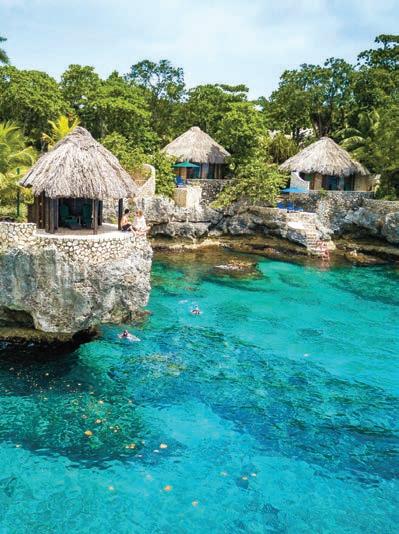

Morley adds that the rise of boutique hotels democratises design in that way that it “becomes a great leveller... and so therefore, by virtue, the star system becomes redundant. ose requirements that we used to have to tick are just becoming less relevant and also brand standards used to be a big fat book and now... they’re becoming atter and skinnier and the rules are changing.” Even traditional luxury travellers are caring less about whether a hotel is four or ve star, as long as the experience on o er within its four walls feels unique, personalised and experiential.
For Design Hotels’ Park, the power of good design goes even further – to transform travellers as well as the communities in which the hotels operate. “We absolutely think it’s about meaning and purpose,” he says. “If the last decade was about just bettering yourself, then this decade is about bettering the community, and everything around it.” And you thought design was just about looks.

Experience fully at-bed Business class onboard our modern Boeing 787 aircraft on a non-stop ight from Sydney and Melbourne to Hochiminh City or Sydney to Hanoi.

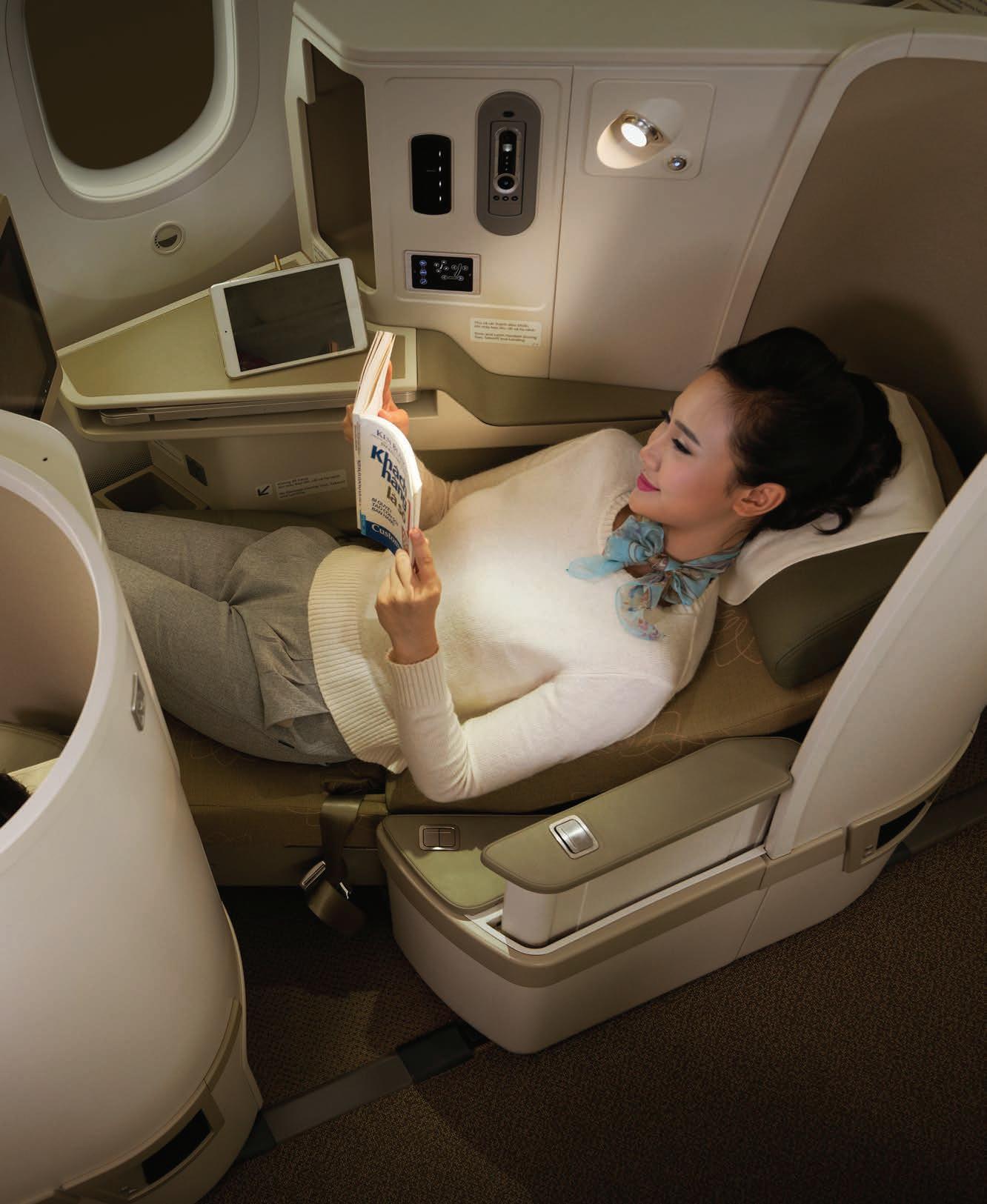




WHY ARE MORE WOMEN CHOOSING ALL-FEMALE TRAVEL? PERHAPS THE BETTER QUESTION IS, WHY NOT? KATE SYMONS EXPLORES THE GROWING TREND OF WOMEN-ONLY ADVENTURES

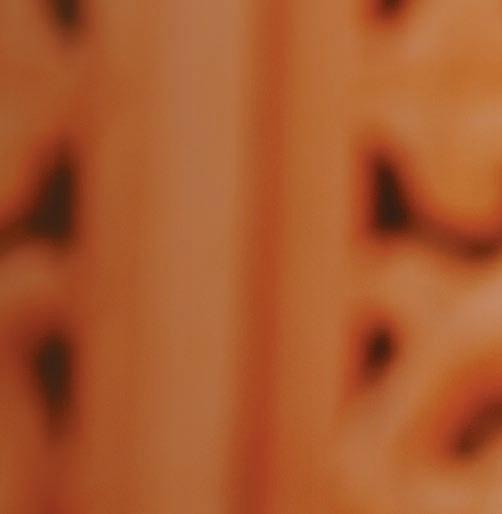


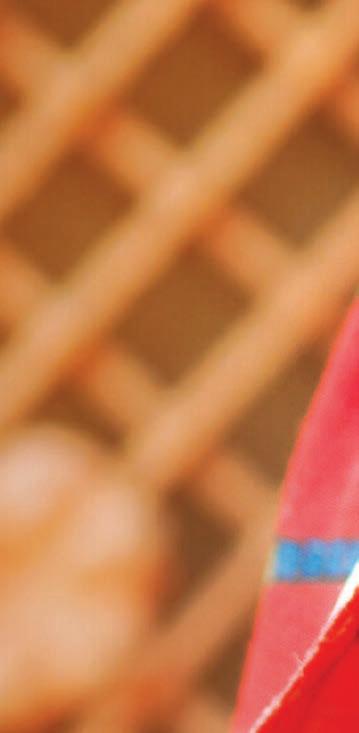


We met at Sydney Airport. ere had been a few emails back and forth beforehand and, yes, I had Googled their names to see if I could nd a face, perhaps even a bio, to quell my curiosity. It’s the 21st century, after all. But the shaking of hands went down at an innocuous airport bar, a nerve-calming shiraz close by.
I would be spending nine days with these strangers – exploring colourful Cape Town, taste-testing the spoils of wine country, going wild on safari – so I was anxious to see the dynamic in person. As it turned out, I needn’t have worried. As well as an unforgettable South African adventure, I ended up with friends for life. Such is the power of female connection.
Hosted by Bench Africa, this tour was an all-female a air, although by coincidence rather than design. Now, having facilitated so many enduring friendships of this kind, Bench has o cially entered the fast-growing market, launching its rst ladies-only itinerary late last year.
“Our vision in creating ladies-only tours was to bring adventurous women together so that they could get the support and camaraderie that they might not otherwise nd on a more generic tour or private itinerary,” explains Bench Africa’s Groups & Operations Director, Julie De Palo.

And while the Explore Kenya – Escorted Ladies Safari, which departs Nairobi in June, was originally designed with the solo traveller in mind (Bench has waived the single supplement), interest has spread even wider.

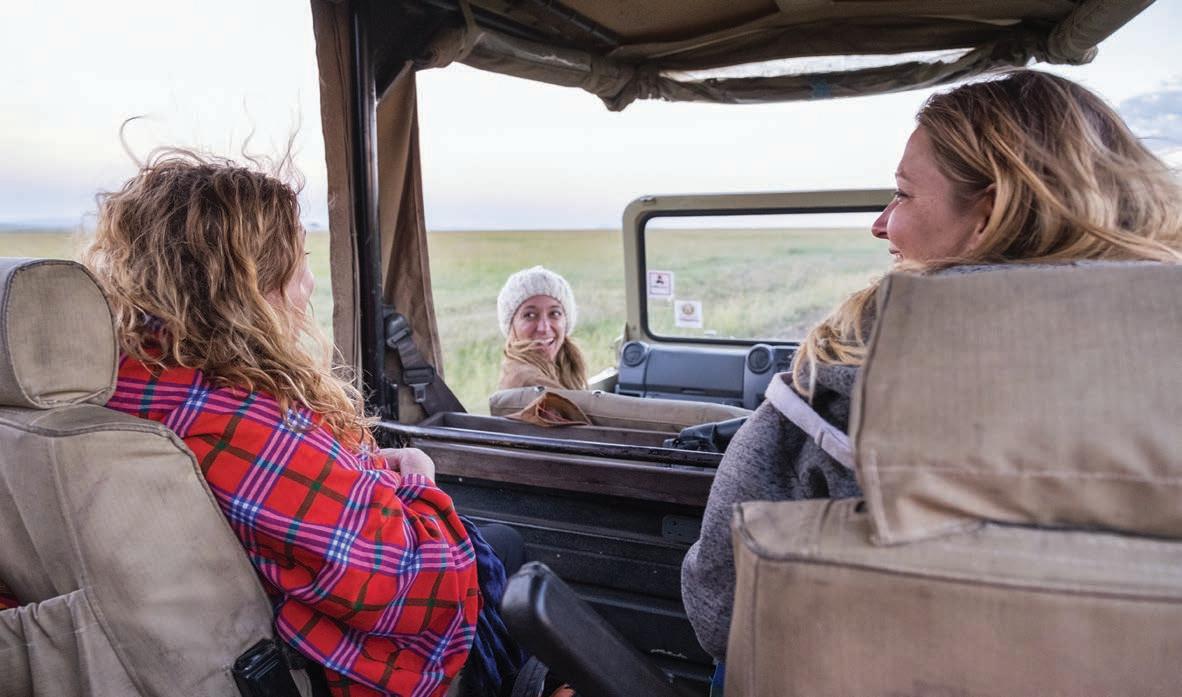
“ ings didn’t pan out quite how we thought they would,” says De Palo. “Sure, we are getting enquiries from solo female travellers, but we’re also seeing small groups of friends enquiring about the tour as well. We have put it down to the fact that women simply like to travel together!”
Hear Me Roar
Sisters are, indeed, doing it for themselves, and the statistics (as well as the Eurythmics) will tell you as much. Take Intrepid, for example. In 2019, female travellers made up 64 per cent of its bookings. is gure represents a nine per cent growth on 2018, which was a watershed year for the adventure travel company.
Following a 2017 launch, which coincided with International Women’s Day, Intrepid’s rst Women’s Expeditions hit the ground running in 2018. e launch comprised three itineraries >>
“Sure, we are getting enquiries from solo female travellers, but we’re also seeing small groups of friends enquiring about the tour as well. We have put it down to the fact that women simply like to travel together!”

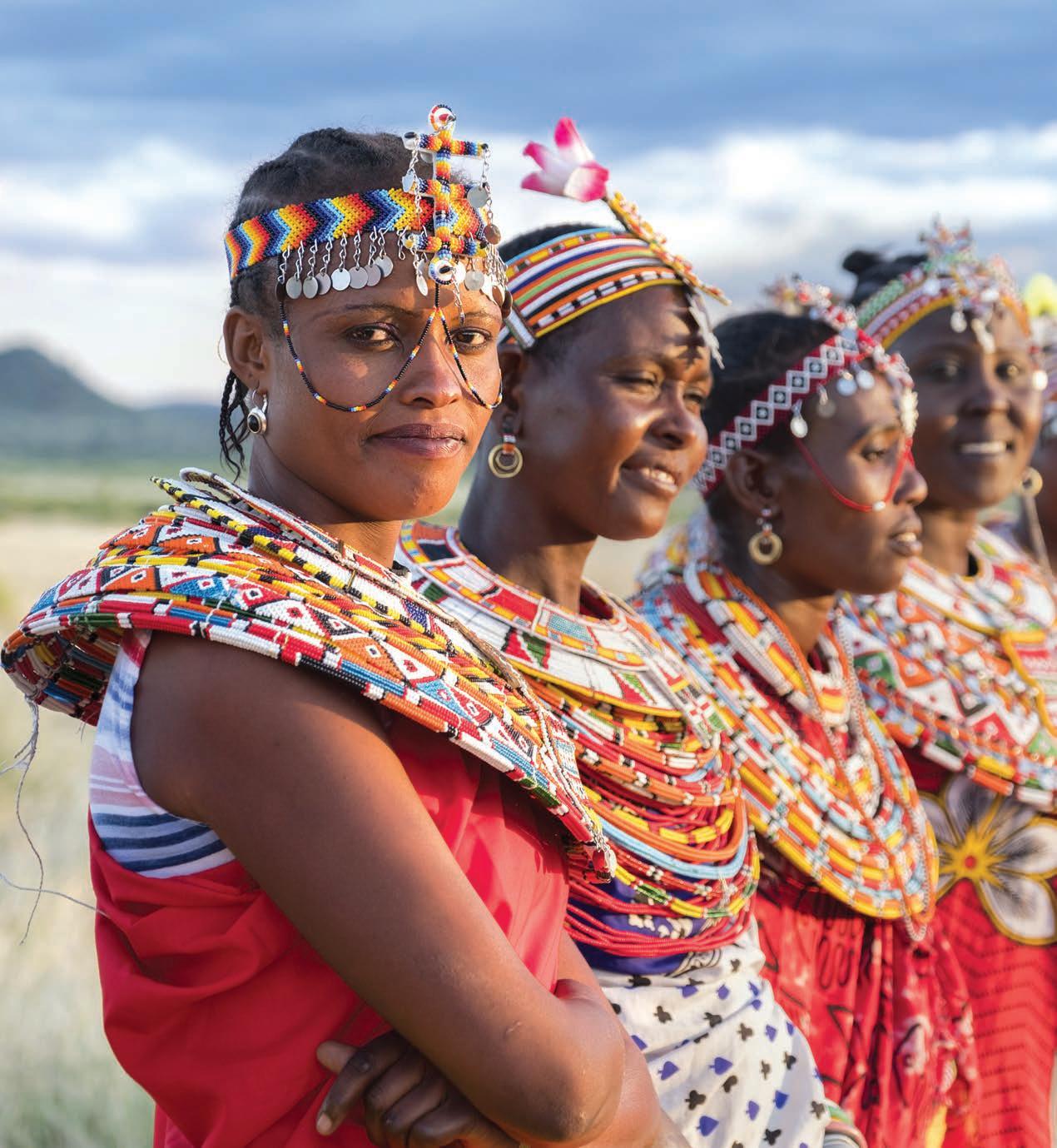 JULIE DE PALO
JULIE DE PALO
“Momentum hasn’t slowed down...last year, we saw a 116 per cent increase on our Women’s Expeditions and we’re definitely working on a few more destinations for this year as well.”
 JENNY GRAY Intrepid Senior Product Manager
JENNY GRAY Intrepid Senior Product Manager
– Morocco, Iran and Jordan – with four 2018 departures originally scheduled. In just a couple of months, those four departures had exploded to 36, making the range one of the best-selling in Intrepid’s 30-year history.
“And the momentum hasn’t slowed down either,” says Intrepid Senior Product Manager, Jenny Gray. “Last year, we saw a 116 per cent increase on our Women’s Expeditions and we’re de nitely working on a few more destinations for this year as well.”


Of course, there’s nothing new about adventurous women leaving the blokes at home – Harriet Chalmers Adams, Amelia Earhart and Jessica Watson, to name (and I cannot stress this enough) only a few. But the practice has moved from anomaly to fast-growing trend.
Women-only travel itineraries are increasingly popular for various reasons, not least of all a huge (and, mercifully, still-in-progress) shift in societal expectations of the so-called fairer sex. Broadly speaking, women no longer need permission, nor nancial backing, to pack up their sense of adventure and hit the road. e trend is also spurred on by preferences and circumstances: preferences being, for example, favouring the company of women (plenty of reasons for that); circumstances being, for example, the need for one parent to stay home with the kids (plenty of reasons, also, for that).
For MTA (Mobile Travel Agents) specialist Rachel Cleary, a personal brush with girl power three decades ago planted the seed for her 2018 move towards women-only itineraries. On a ski trip with a group of girlfriends – the same friends who traditionally made the same trip with their “high-powered husbands” – Cleary experienced a blissful freedom created by the absence of pressure to ‘keep up’. e mental load, which can often follow women, particularly
wives and mothers, on holidays was also notably absent. Cleary tried to recreate this experience when she hosted her rst women-only tour – a ski trip to Canada – two years ago.

“It was really important that everyone was able to be themselves,” Cleary says of that foray into all-female territory. “ ey weren’t a mother, they weren’t a wife, they weren’t a career woman. All of that was left to the side.
“It was a completely inclusive, no-expectation ski trip…and we had such a great time.”
Cleary is deep in the planning phase of another ski itinerary (with a number of returning guests already signed on), and will also host an Antarctica adventure next year, among others. But it is Africa and its widely coveted safari that has enjoyed much of her attention. “Everyone should be able to experience the wonderment of Africa,” she says, clearly smitten. In particular, she recalls a mother-daughter trip with great fondness: “Teenage daughters aren’t always talking to their mums, but when you’re in Africa in a safari truck and you’ve got a whole pride of lions surrounding you… everything falls away. It’s the most bonding experience.”
Although she now favours single-sex journeys – “I only do one trip a year that isn’t women only” – Cleary says the di erences don’t crop up in the planning phase.
“ e trips are the same. I think women are as capable as men of anything. e di erence is the bonding experience,” she says.
“I nd women far more open to making new friends than men so women are far more likely
to come on a group with other women knowing we’ll all talk and have a great time. I don’t care if you’re a princess or if you’re a toilet cleaner, those bonding experiences last a lifetime because you are all exposed to the same incredible knowledge and experiences, and the things you see and hear and do, at the same time.”
Where Are the Women?
It all went down a little di erently at Intrepid HQ, where the Women’s Expeditions were founded on destination-speci c customer feedback, as Gray explains: “Our female travellers were asking, ‘Where are the women?’ in a lot of destinations; ‘Why didn’t I get to see any women, or interact, or have genuine connections with women?’ >>
“As

JENNY GRAY
Intrepid Senior Product Manager
excited as our female travellers are to really get under the skin of destinations and connect with women, these women are equally excited to be able to showcase and highlight what their lives are about.”
“ e kind of experiences that we sought out were ones that travellers wouldn’t have access to if they were in a mixed-gender group. It just really gives our female travellers rst-hand insight into the daily lives of a breadth of local women – young, old, conservative, modern, religious – and breaks down those barriers, and [provides an] opportunity for fostering genuine conversations and connections as well.”
Beyond Morocco, Iran and Jordan, Intrepid’s Women’s Expeditions now visit India, Turkey, Kenya and Nepal. (New destinations are just around the corner.) Tours are immersive, o ering an up-close look at local customs and other culturally unique experiences. On the Iran itinerary, for example, travellers visit a local beauty salon, take a yoga class, explore
a female-only park, experience women-only public transport services, and enjoy a cooking class with young female entrepreneurs. ere is also a female-hosted homestay.

Another key feature of the initiative has been Intrepid’s commitment to gender equality from a recruitment point of view. In 2017, the company announced its mission to double the number of female leaders globally by 2020 – a modest target in some parts of the world, but a signi cant challenge in others. With help from some creative strategies, including in-school recruitment drives, social media campaigns and encouraging entry-level sta to pursue leadership roles, Intrepid surpassed its target last year with plenty of time to spare – the 50-50 gender split achieved in India one of the most noteworthy feats. And the results have proven mutually bene cial.
“As excited as our female travellers are to really get under the skin of destinations and connect with women, these women are equally excited to be able to showcase and highlight what their lives are about as well,” explains Gray. “And in some destinations, this is really a new concept to them as well. No one’s ever asked them to talk about their life or their stories.”
A perfect t. Because, after all, what’s travel if not the pursuit of stories?
Why is women-only travel so popular? Bench Africa’s Groups & Operations Director, Julie De Palo (above), shares her thoughts.

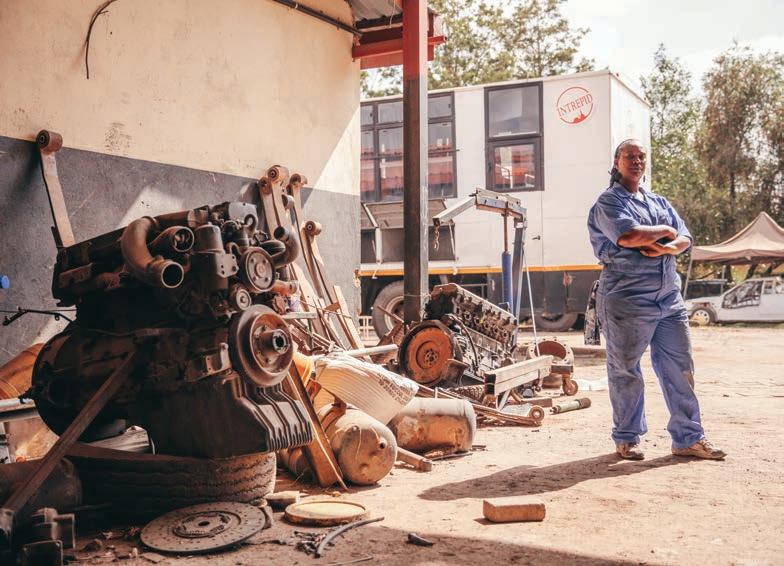
• Discovering a new destination can be more meaningful in the company of other lively, curious, and remarkable women.

• Women naturally form connections and ladies who travel together often keep in touch afterwards. This is because travel gives you the opportunity to carve out these incredible new and unforgettable memories, and sharing those special memories with someone forges a very special bond.
• Some women feel less anxiety when travelling with other women. This allows you to relax into the adventure, be authentic, be daring, be dishevelled.
Check out Intrepid’s 9-night Kenya itinerary overleaf, part of the Women’s Expedition portfolio, brought to you by MTA – Mobile Travel Agents.
• Women tend to seek out more meaningful travel. They want to know that their travels are making a di erence in the countries they are visiting.


Make your way through the heart of East Africa and meet local Kenyan women from all walks of life, who will share their stories and triumphs in the struggle for gender equality. Hear inspiring stories from our all-female crew, including your local leader and driver, Becky, who was the very first female overland truck driver in East Africa. You’ll also have the chance to meet a range of local women – from entrepreneurs and female park rangers to Samburu and Maasai villagers.

Beginning and ending in Nairobi, you’ll visit a bead-making workshop, cook chapati with local grandmothers, go on safaris in the Masai Mara, and Samburu National Reserve and meet a local women-only support group striving to improve gender equality.
This is an expedition trip and is new to our range. Despite rigorous planning and research, new itineraries can sometimes throw us some unexpected surprises. Often, it’ll be a welcome surprise, but every now and again there might be a hiccup. We like to think that’s what puts the ‘adventure’ in ‘adventure travel’.
Our purpose-built overland vehicles allow for excellent game viewing. While they aren’t air-conditioned, they are equipped with large sliding windows to let in the fresh air and allow for excellent photography opportunities.
The drive days can be long and bumpy, but it’s as much about the journey as the destination – bringing a pack of playing cards is a great way to pass the time and get to know your fellow travellers. There will be some early starts to make the most of the spectacular sunrises in this beautiful land and to beat the morning traffic on drive days.
While we would love to open up these real-life experiences to all our travellers regardless of gender, it’s simply not yet possible to do so and operate in a socially responsible and culturally sensitive manner.

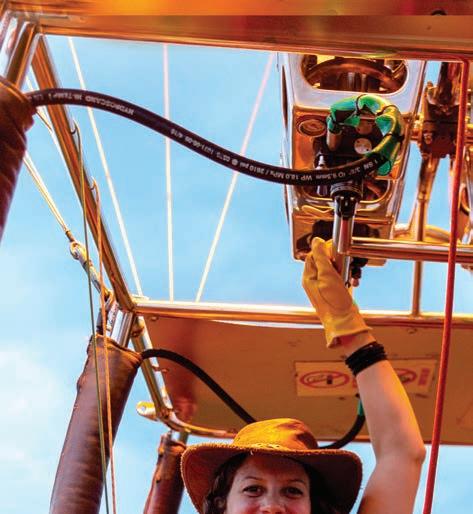
FOR A MORE DETAILED ITINERARY, PLEASE VISIT luxurytravelmag.com.au/experiencesbyluxurytravel
Return international airfares ^ex Australia

Return airport transfers in Nairobi
10 nights’ accommodation (hotel 5 nights, permanent tented camps 5 nights)
9 breakfasts, 5 lunches, 5 dinners
NAIROBI
From Farm to Feast Urban Adventure & Kazuri Bead Workshop Visit
MT KENYA
Mau Mau Caves Visit, Guided Nature Walk & Female Ranger Introduction
SAMBURU

Women’s group village visit & National Park Morning/ Afternoon Game
LAKE NAIVASHA
Elsamere High Tea & Elsamere Conservation Centre
MASAI MARA
Maasai Widow’s village visit, National Reserve & KWS Female Ranger Introduction and Dinner
KAITLIN JANE CHECKS IN TO THE AMANOI ON VIETNAM’S SOUTH-EAST COAST AND DISCOVERS
THE MANY BENEFITS OF ITS PRISTINE LOCATION BETWEEN JUNGLE AND SEA
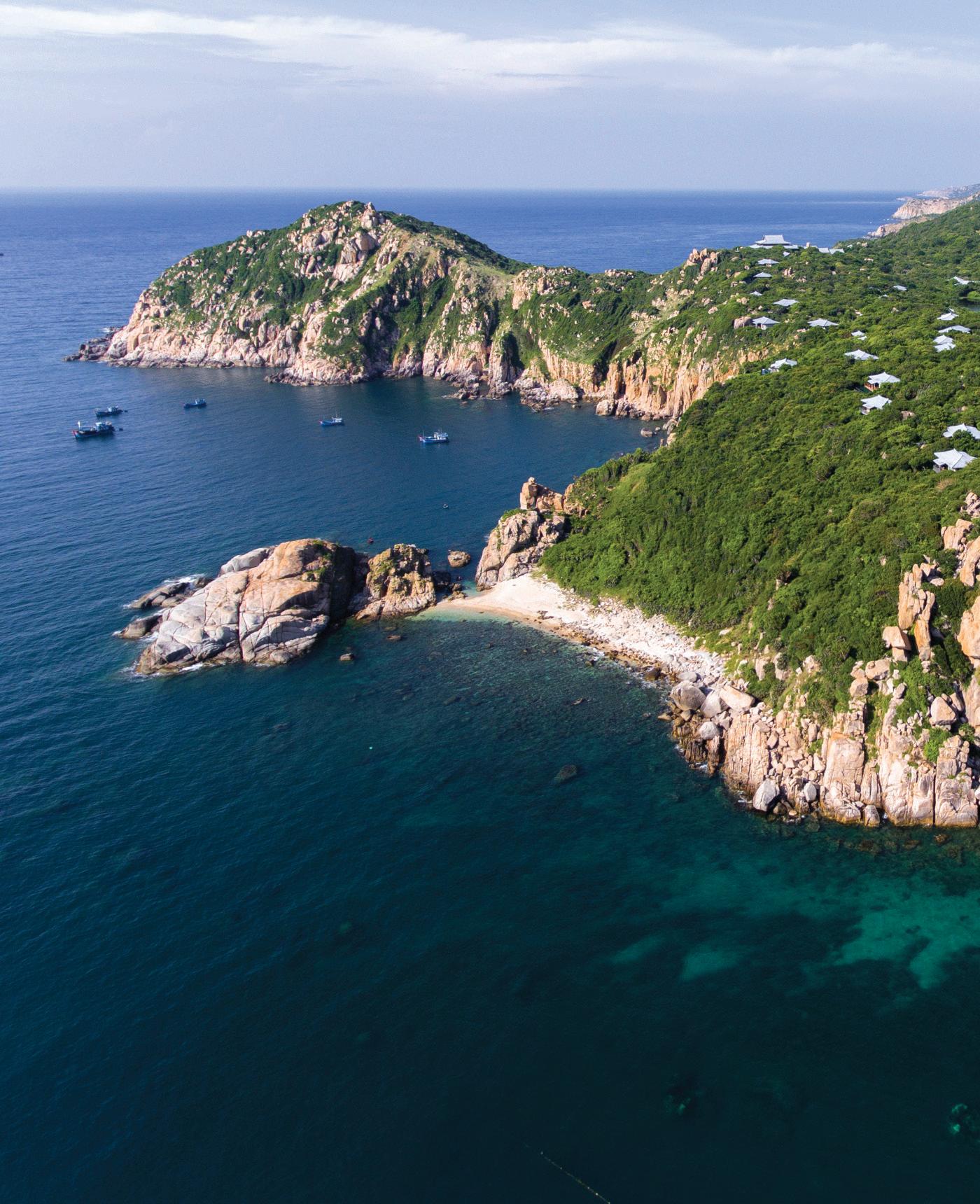
AFTER LANDING AT CAM RANH INTERNATIONAL AIRPORT on Vietnam’s south-central coast, most travellers head north, towards the bustling beach town of Nha Trang. But Aman resorts have never been for ‘most’ travellers, and the exclusive Amanoi, located in the pristine Nui Chua National Park, about 60 kilometres south of Cam Ranh, is no exception.
This off-the-grid location is typical of many Aman properties, but a resort that encompasses 42 hectares of a 29,000-hectare park is exceptional even by the lofty standards of this renowned brand.
After a 75-minute drive, I arrive in the pristine coastal marine reserve. A sweeping granite staircase leads to the central pavilion and I am met with a cool towel and refreshing drink before being taken to my Mountain Pool Villa.
The resort’s 36 villas, residences, pavilions and spa houses – all designed by architect Jean-Michel Gathy – are scattered along the hilltop and gaze out over mountains, ancient boulders and the turquoise waters of Vinh Hy Bay and out to the East Sea.

My 125-square-metre villa opens up to the lush green forest on both sides with enormous sliding glass doors and also has a large infinity pool surrounded by a sun deck, which quickly becomes my favourite spot for morning and afternoon tea.
The clean design of the room embraces traditional Vietnamese style while incorporating the latest conveniences such as docking sound system, espresso machine, generous mini-bar and WiFi. There is also Netflix available on a TV that raises into view from a wooden table at the foot of the indulgent king bed.
The first thing on my agenda is a consultation with Josh, the resort’s wellness manager and Traditional Chinese Medicine practitioner. There are several personally tailored wellness immersion programs available, lasting from three to 21 days. All combine movement, body work, nutrition, mindfulness and spa treatments. After an in-depth conversation with Josh (including reviewing a questionnaire I had sent in before my arrival), we decide to focus on mindfulness, detox and cleansing, as well as hydration.
It’s an active schedule, starting at 6am with a guided sunrise hike to Goga Peak. My guide, Tuyen, and I trek to the top –about 20 minutes – where a stunning lookout awaits. The views of the fishing village below and the boats heading out for the day, all against the backdrop of the sun rising over the bay, are spectacular.
At 8am I head down to the lake for a group qigong lesson on the floating pavilion surrounded by lotus flowers with the morning sunlight streaming in. We go over several different movements, reconfirming – yet again – that I need to incorporate this type of mindfulness into my routine. >>
“My 125-square-metre villa opens up to the lush green forest on both sides with enormous sliding glass doors and also has a large infinity pool surrounded by a sun deck, which quickly becomes my favourite spot for morning and afternoon tea.”
By 9am I have done more exercise than I usually do in an entire day, and I’m ready for breakfast. But rst it’s time for my Chinese tea remedy, one of two that I will experience each day, each brew specially prepared to help balance my yin and yang, which in Chinese Medicine is the key to good health. While it might not become a favourite beverage, it’s de nitely tolerable, especially if balance is a consequence.
Breakfast in the shaded al fresco pavilion, which sits on top of the hill overlooking the property, is both delicious and delightful. I am presented with a custom menu that complements my wellness program and o ers a varied selection of Vietnamese and Western dishes. According to traditional Asian medicine, food is divided into ve groups: sour, bitter, sweet, spicy and salty, with each connected to an organ system. I always go local with the food when travelling and choose the vegetarian pho – a savoury rice noodle soup with shallots, basil, coriander and spring onions – accompanied by a seasonal fresh fruit platter and jasmine green tea.
By 11am, I am back at the lakeside spa to meet with Josh for some laser acupuncture, which is followed by a private yoga session with Shyam, the spa manager.
After lunch at the beach club and some chill out time at the adjacent pool, I once again nd myself at the spa for another indulgence – a 90-minute hot stone massage that begins in the hydrotherapy room with a steam, spa and cold plunge. Despite the small stature of my Vietnamese massage therapist, she has incredibly strong hands and knows exactly how to manipulate my muscles to mush.
e Amanoi spa takes centre stage at the resort with its luxurious oversized treatment rooms, talented therapists and unique menu that includes both body and energy work. For a one-of-a-kind experience while enjoying utmost privacy, stay in one of the resort’s two Spa Houses. e uy Lien Spa House features a contemporary Moroccan hammam while the An Son Spa House boasts a Russian banya. Both include two dedicated therapists, a 15-metre pool, spa, steam room, cold plunge, three hours of treatments per day along with all of the standard villa inclusions. All this without ever having to leave the residence.
Before falling into bed, I enjoy a perfect meal of Vietnamesestyle whole sh smothered in herbs and cooked in a clay pot with dipping sauce, smoky eggplant and rice paper rolls.
From their expert attention to detail to the philosophy that no request is ever too great, a stay at Amanoi is guaranteed to leave you relaxed, rejuvenated and on the right path to a healthier you.


Rates for the Detox and Cleansing Immersion start from A$2719 per night (three-night min), including taxes and full board, return airport transfers, an arrival and departure wellness consultation and a comprehensive itinerary.
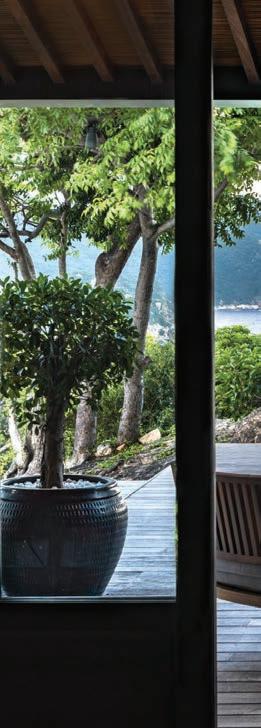
For more information, visit: aman.com/resorts/amanoi

“The Amanoi spa takes centre stage at the resort with its luxurious oversized treatment rooms, talented therapists and unique menu that includes both body and energy work.”
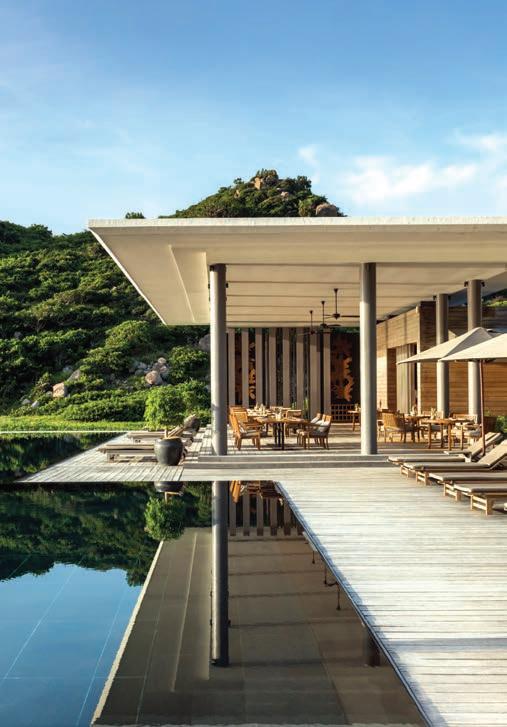
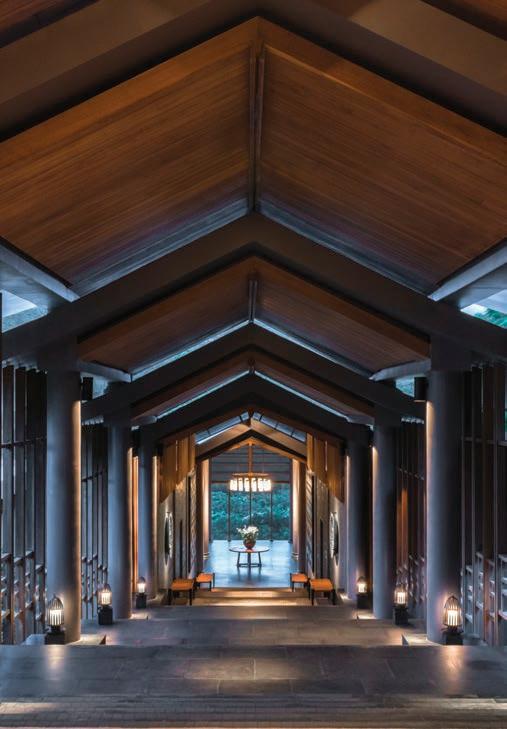
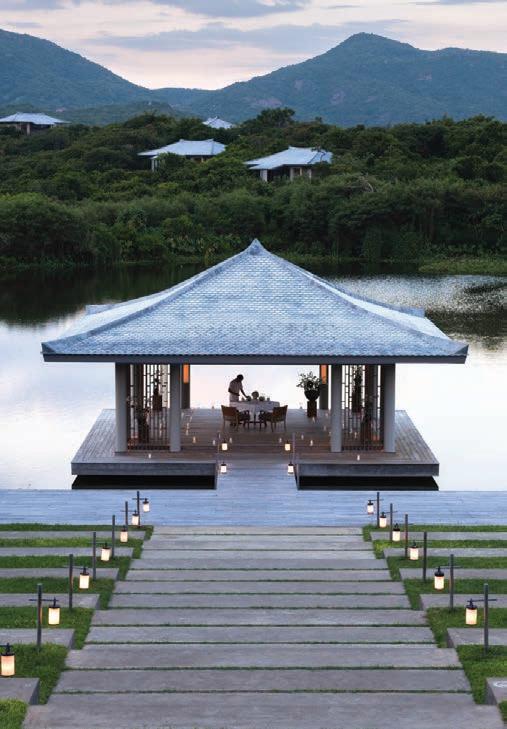







A much-lauded $1.7 billion renovation, unveiled last year, brought the already well-equipped airport into a new era. e futuristic Forest Valley, with its 40-metre-high Rain Vortex, in particular, a prelude to the modern city-state to be found on the other side of customs.
Yet, for all the cutting-edge appeal of this island nation, one of its most revered landmarks is a step back in time. e oldest still-operating hotel in Singapore, Ra es Hotel is an institution and, although the results of its recent two-year renovation might attract a younger, more modern market, the property remains a nod to a bygone elegance. Just the way I like it.
As I arrive by limousine (also just the way I like it), the white colonialera building certainly o ers the grandest of rst impressions. I am greeted by tall and distinguished doorman in a Gieves and Hawkes military uniform, a vision so iconic at the hotel that his likeness can be found on all manner of paraphernalia in the Ra es boutique.
e lobby holds a patina of the Renaissance era, its polished, darkwood oorboards and antique Persian rugs ensure I am acutely aware of each step I take. Around me, white columns seem to extend sky high, a continuation of the glam exterior, and a crystal chandelier sits like a crown on this regal opening scene.
After settling into my lush Courtyard Suite, a fantastically functional and inviting space, I decide to stay put for a while and indulge in an opulent dinner, served in-suite. Later that evening, I make my way to the


Writers Bar to the sound of a Steinway being played in the near distance. e bar was meticulously preserved during the renovation to accentuate the allure of its grand past, emphasised by the solid brass countertop and artisanal cocktails.
My private breakfast the next day is a palatial affair and the butler service, pristine. Again, I am transported to a bygone era and this persistent feeling has me intrigued. To learn more, I join resident historian Leslie Danker on one of his group tours of the hotel. If you want to know more about Raffles, this is your guy. After almost 50 years, he has seen three restorations and countless celebrities, though he’s not one to drop names.
From one legend to another, I enjoy lunch at BBR By Alain Ducasse, formerly the Bar & Billiard Room, and it is a dining experience worthy of its surroundings – no surprise given the pro le of its namesake. e open kitchen delivers eclectic Mediterranean dishes with a focus on grilled >>
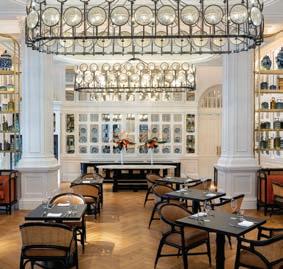

delicacies and the wine selection is inspired. To unravel the mystery of the famed Singapore Sling, I also visit the Long Bar, where Ngiam Tong Boon rst created the drink in 1915. As I had earlier learned on Danker’s tour, it was concocted to allow women to disguise their alcoholic drinks as punch so they could drink in public.
Lunch leaves me energised to explore my surroundings. I stroll along the Ra es Arcade to immerse myself in a unique shopping experience. Connected by neat alleys strewn with kiln tiles, each store gives out a unique and pleasant fragrance, complementing the colonial decor and ne wares.
I nd my dinner destination on the 70th storey of the Fairmont Hotel, adjacent to Ra es and the ideal place from which to snare an elevated perspective of the city. With oor-to-ceiling windows, Skai restaurant features breathtaking panoramic views and the contemporary grill menu and bespoke drinks enhance my dining experience. On Level 1, I discover Anti:Dote, a chic bar where classic, contemporary and experimental mixology is on the menu. It’s all the inspiration I need to further acquaint myself with Singapore. e contrast of curated gardens and high-rise buildings rea rms the city’s exceptional range and the food continues to impress, this time from the vantage point of 1927, the rooftop oasis at So/ So tel Singapore.
Twilight in Singapore heralds the onslaught of other spectacles: some buildings display a choreography of lights; bistros, cafes and bars come to life with the laughter of friends; and lovers share an evening stroll. I am alone, but it isn’t hard to get swept up in the romance of it all.
On my nal day, a visit to Ra es Spa seems an apt way to take stock. e interplay of fruity scents and skillful hands leaves me reinvigorated and ready for my ‘last supper’, lunch at acclaimed JAAN by Chef Kirk Westaway. I am left spellbound. e rich aromas and avours liven my senses, and the presentation is art.
JAAN is traditional British fare presented in a modern light, which is a snug t for the persistent motif of my sojourn. Singapore, too, toggles between modernity and tradition, and this is rarely as evident as within the colonial walls of Ra es Singapore.


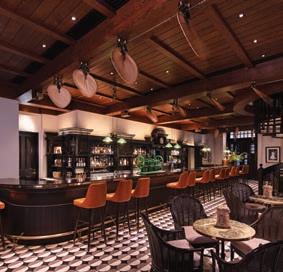
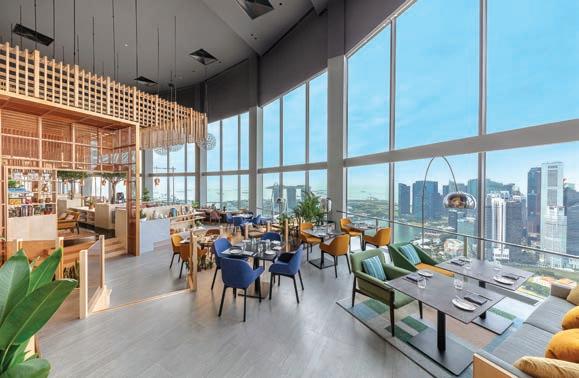
Rates for a Courtyard Suite at Ra es Singapore start from S$1300++ (about A$1396) per night, including breakfast.
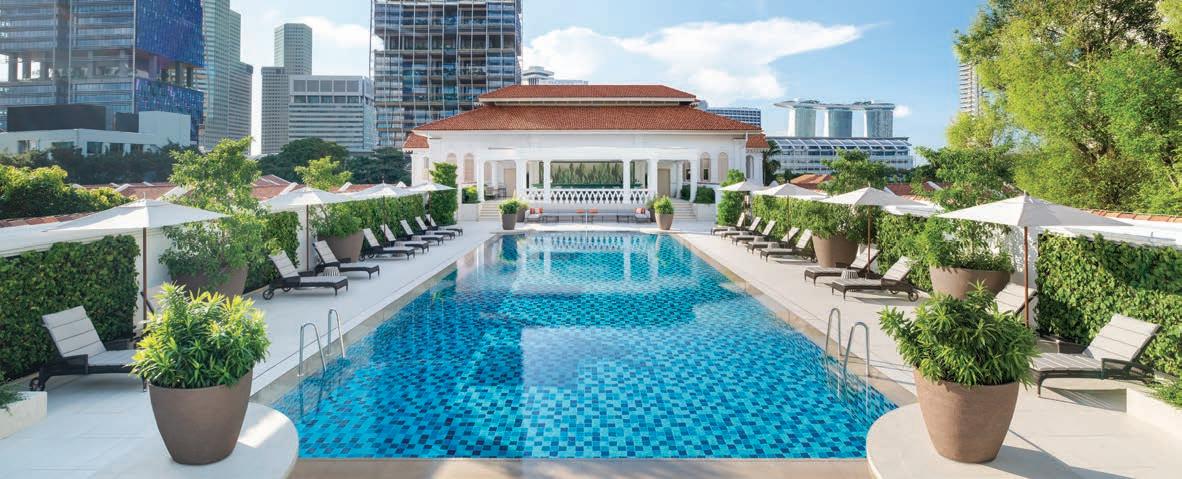
For more information, visit: ra essingapore.com
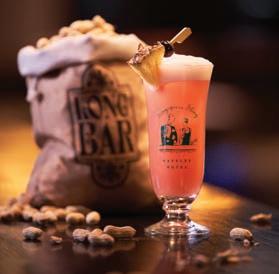






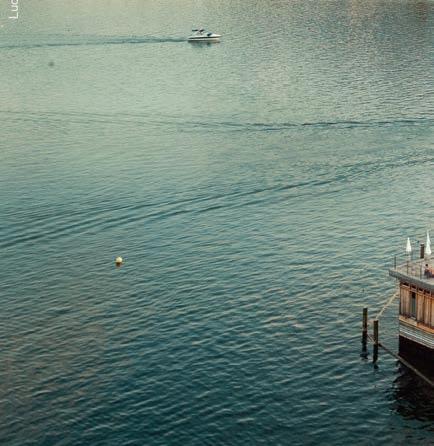

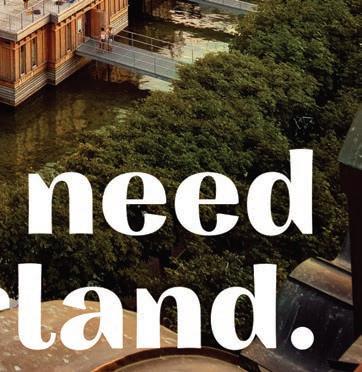

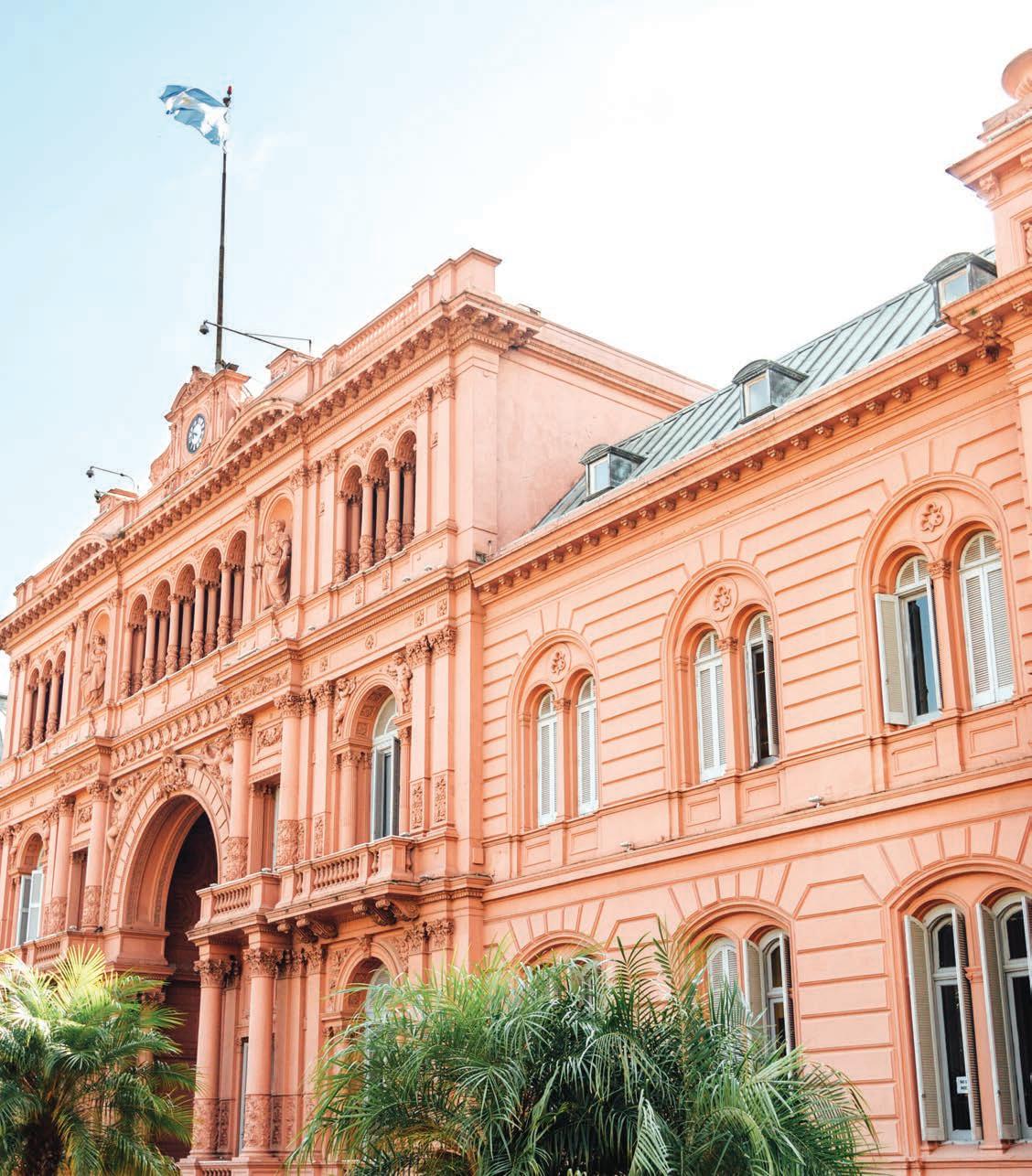
Cool, colourful and increasingly cosmopolitan, Portugal’s coastal capital has got it all, and over the past few years has become a worthy stop on the European itineraries of Australian travellers. Here are the can’t-miss sights, plus the local lowdown on how to best experience the City of Seven Hills.
 Words by MADELIN TOMELTY
Words by MADELIN TOMELTY
Many of Lisbon’s famous landmarks are within an easy walk of each other, in or around the riverside district of Belém, so you can tick them o all while enjoying an easy amble along the neighbourhood’s scenic boulevard.

The grandest of Lisbon’s plazas, this world-famous square hosts the city’s finest sculptural monument, the equestrian statue of Dom José I, as well as the triumphal Arco da Rua Augusta , reminding all who pass through it that Portugal once ruled the world. For just €3, climb to the top and be rewarded with an expansive view over the city and to the Tagus River. Fringing the square are beautiful, geometric buildings housing arcades.

Located along the river where ships departed to explore and trade with India and the Orient, the monument celebrates the Portuguese Age of Discovery (or Age of Exploration) during the 15th and 16th centuries.
The 16th-century Gothic monument in Belém on the edge of the Tagus River played an important role in Lisbon’s military defence, allowing for long-distance cannon firing and ricochet shots over the water. It was declared a UNESCO World Heritage Site in 1983.

Located in the cradle of the city at Alfama , this magnificent Moorish castle, complete with centuries-old palace ruins, is considered one of the finest fortresses in all of Portugal.
The 28 Tram
You can’t very well visit Lisbon without experiencing one of the city’s iconic yellow trams, and that’s where the number 28 comes in. The most famous of tramlines, the 28 rattles through the narrow streets of the most popular tourist districts – Graca , Alfama , Baixa and Estrela – on a journey from MartimMoniz to CampoOurique
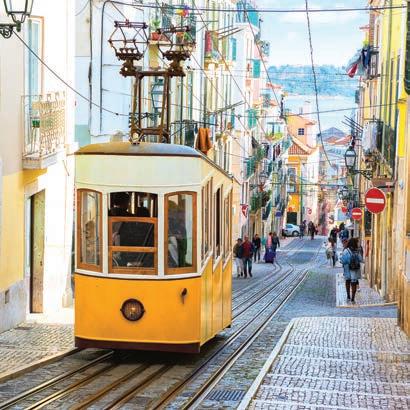
Swing your leg over an electric bicycle from one of the street rental bike pods, or better yet, opt for one of the 400 electric scooters that are located all over the city.
Tuk-tuk
It might be touristy, but the humble tuk-tuk is an excellent way to see the streets of Lisbon up close. You’ll be driven around by a local who knows Lisbon like the back of their hand, so you’ll also get the insider scoop on where to eat, drink and play.
SINTRA
Look familiar? This two-kilometre suspension bridge connecting Lisbon to Almada looks a lot like San Francisco’s Golden Gate Bridge. Although often reported otherwise, the two were not designed by the same consortium.
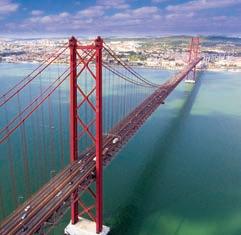
Yet another UNESCO World Heritage monument, the Jeronimos Monastery is a spectacular 16th-century Gothic and Manueline building and just a 10-minute walk from the river.

Just half an hour from Lisbon is the fairytale city of Sintra, where Portugal’s kings and queens resided for centuries. A UNESCO World Heritage Site, visit buttercup yellow Pena Palace , the Moroccan-inspired Montserrate Palace , the medieval Castle of the Moors and the Quinta da Regaleira with its sprawling grounds and gloomy initiation well. The centre of Sintra is also famous for its 19th-century Romanticist architecture, historic villas, luxury estates, beautiful gardens, and Michelin-star restaurants.
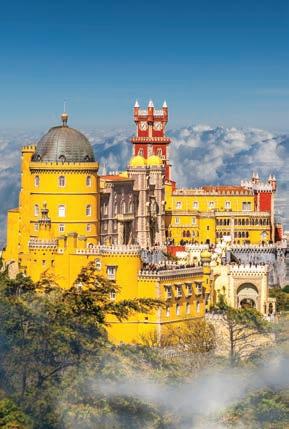

TimeOut Market
No less than 26 restaurants, eight bars, a dozen shops and market vendors of meat, fish, fruit and flowers, not to mention a high-end music venue. Open day and night, and unmissable while in Lisbon. timeoutmarket.com

Basilio
A favourite among expats who miss the Australian event that is eating breakfast out. ilovenicolau.com
JNcQUOI Avenida
High-end restaurant, bar, gourmet deli, wine cellar and luxury men’s fashion store in one luxurious package. Opt for the grilled sole or lobster salad. jncquoi.com/avenida
Sea Me
Perhaps Lisbon’s best-known seafood restaurant, with a Portuguese/Japanese fusion menu. peixariamoderna.com
Otto - Pizza Al Mercato
Trendy but casual Italian restaurant serving wood-fired pizza and grilled seafood in one of the city’s most bustling neighbourhoods. otto-lx.pt
Gelado Santini
Hands-down the best gelato in Lisbon. santini.pt
Pasteis de Belém
Skybar By Seen
Rooftop bar at the Tivoli Liberdade hotel with great cocktails and the best Black Cod in Lisbon.
Park
Lush rooftop garden bar hidden at the top of a grungy carpark, where spectacular views and cocktails a-plenty await.
The Garden
Lisbon’s ultimate hipster rooftop bar hangout

Eat Bola de Berlim on the Beach

At the sandy beach of Praia de Sao Joao da Caparica , nab a beach lounger and umbrella for all-day lazing, with a lunch break at one of the casual, boho beach restaurants. Order white sangria, whole grilled fish and clams – a Portuguese specialty – and when you’re ready for dessert, flag down the gentleman who walks up and down the beach selling Bola de Berlim. Warning: these lip-smacking traditional Portuguese doughnuts with custard or Nutella fillings will ruin all future doughnut experiences.
A Lisbon institution, Pasteis de Belém makes the most delicious Portuguese tarts you’ve ever tasted – guaranteed. pasteisdebelem.pt/en
Praia no Parque
Located ar Parque Eduardo VII, this restaurant hotspot o ers great food and a stunning bar, and after dinner it turns into a nightclub - what more could you ask for? parque.apraia.pt
Seen
Glamorous Art Deco-inspired restaurant at the Tivoli Liberdade hotel with views over Lisbon. tivolihotels.com
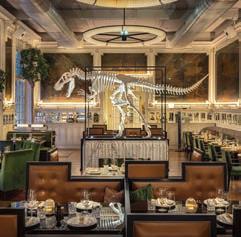
Witness a Fado Performance in Alfama Hilly, medieval Alfama is Lisbon’s oldest neighbourhood and one of its most photogenic, with a village-within-a-city feel, winding alleys, tiny squares and courtyards, colourful walls and gra ti-art, traditional tile panels, old architecture and arches, gardens and fountains. Pick one of the countless restaurants for a romantic dinner by candlelight and then settle in for a skin-prickling performance of fado – that heartwrenching traditional Portuguese song.

Lisbon is considered one of the top locations for artistic gra ti. Head to Alfama , Chiado , Mouraria or Belém for some of Lisbon’s most exciting street art.

Chiado is one of the most cosmopolitan areas in Lisbon, known for its array of top restaurants, bars, cafes and boutiques selling homewares and designer fashion. Don’t forget your walking shoes.
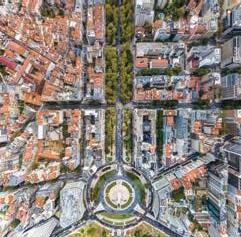

Verride Palácio Santa Catarina
If you want to go all out, an 18th-century palace should do the trick. The painstakingly restored building houses 16 luxurious rooms and two lavish heritage suites showcasing original stucco work, historic Portuguese tiles and an original exposed stone arch. Head to the rooftop for the pinnacle of modern luxury: a swimming pool and restaurant o ering unrivalled 360-degree views of Lisbon’s skyline, the Tagus River and the Atlantic Ocean.
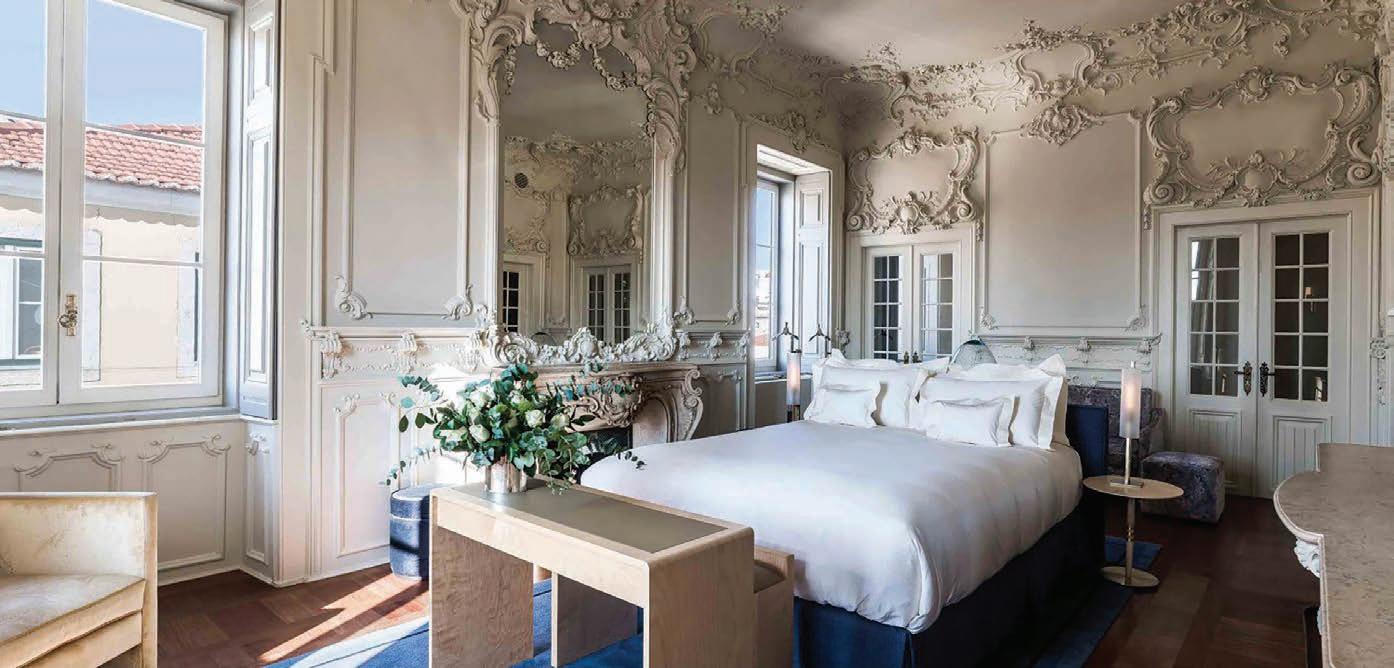
Memmo Príncipe Real
Perched on a hill in the upmarket and trendy area of Príncipe Real with breathtaking views over the city, this design-driven hotel features 41 rooms, an excellent restaurant and an outdoor terrace with a small pool and bar. Tucked away behind colourful mansions and laneways, this is one of the best places to stay for local and alternative shopping.
Cascais
With a long history as the go-to summer destination of the Portuguese elite, the charming town of Cascais continues to be a favourite retreat for Lisbon locals and visitors alike. Sandy beaches, an historic fort and museums along with a gorgeous Old Town filled with 19thcentury architecture, cobbled streets and lavish mansions are all on display at this seaside town. Stop in at Cascais Entráguas for lunch with ocean views.

Hotel Valverde
Hotel Valverde is an elegantly converted 1920s townhouse on the a uent Avenue de Liberade that feels more like a home than a hotel. With just 25 rooms and another 23 coming in 2020, its warm and cosy ambience is thanks to a Mid-century Modern-inspired interior dotted with luxurious fabrics, antiques and works of art.
Casa Rosada
The presidential palace is named for its rosy hue. It was on this balcony that Eva Peron famously rallied the working class – and where Madonna followed suit in the film Evita . Book ahead for the free Saturday English-speaking tour.

Edgy, contemporary and oh-so-chic, Argentina’s capital insouciantly blends Latin passion and European flair. Beyond the Neoclassical architecture and green parklands is a city that never sleeps; where soccer is religion and locals dance on the streets. Come for the tango, sizzling steak and malbec, then tick o these local hotspots and unmissable sights in the Paris of South America.
Words by BELINDA LUKSICPlaza de Mayo
Also called Plaza de Protestas , Buenos Aires’ oldest square is best known for the 1810 revolution that led to independence. At the centre is the Pirámide de Mayo , a white obelisk built to mark the first anniversary. It sits in a dress circle of grand architecture that includes Casa Rosada , City Hall and the Metropolitan Cathedral
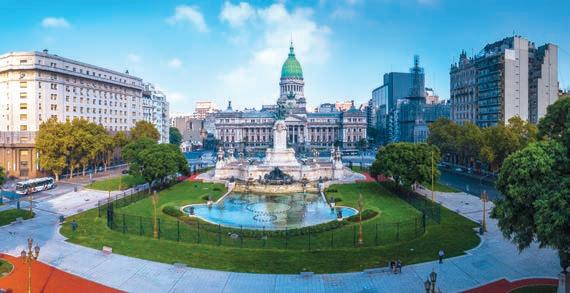
Palacio Barolo

Towering above Avenido de Mayo is this Neo-Gothic masterpiece, modelled on Dante’s Divine Comedy, with unrivalled rooftop views all the way to Uruguay.
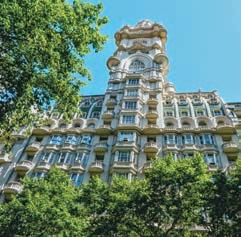
Catch the Metro BA’s underground train network, Subte, opened in 1913 and is one of the quickest ways to get from A to H. There are six lines including the first and oldest, Line A. It rolls between Plaza de Mayo and San Pedrito beneath Avenido de May o, with a stop at the Argentine National Congress . There are five other lines: B, C, D, E, H. You’ll need a SUBE card to hop onboard.

Don’t miss the Helmut Newton retrospective at Malba , opening in March and running through to August. There are more than 150 photographs from the late 1960s to the early 2000s. The permanent collection of Latin American art has works from the likes of Picasso and Frida Kahlo. malba.org.ar
Grab one of the city EcoBici bikes, free for up to an hour at a time weekdays and two hours weekends. With a network of flat and easy bike lanes covering more than 130 kilometres of the city, cycling is one of the more pleasurable ways to get out and see Buenos Aires.
BA’s bus network is vast and complex, but one of the more direct ways to see the sights. Hop on the 39 for trips between La Recoleta , San Telmo and La Boca . To help plot your journey, download the app. comollego.ba.gob.ar
One glance at the frescoed ceilings and gold-leaf dress circle and it’s easy to see why this historic theatre-turnedbookstore was named the world’s most beautiful.

La Recoleta’s famous necropolis is a magnificent labyrinth of some 6000 coffins, mausoleums, carved angels, sarcophagi and crumbling crypts. Follow the crowds to find Eva Peron’s tomb.

Visually and acoustically dazzling, the refurbished city opera house has played host to the likes of Pavarotti, Pavlova and Nureyev.
LA BOCA
Footballer Diego Maradona might have put La Boca on the map, but the appeal these days is El Caminito , the strip of colourful shanties and vibrant rainbow streets awash with art sellers, buskers and whip-quick tango dancers twirling for cash.

Witness Tango at a Historic ‘Bar Notable’


Tango is everywhere in Buenos Aires, but for something more intimate and local, head to Flor de Barracas , a ‘bar notable’ near San Telmo in the newly gentrified Barracas
Unchanged since 1906, it’s the place to enjoy a sangria-like tinto and soda, a bowl of braised bondiola (pork shoulder), and on Fridays, a sultry tango show.
Join the Dancing Throng Neighbourhood dance halls, or milongas, are dotted throughout the city. La Viruta Tango Club, in the basement of Palermo’sArmenian Club, is one of the more popular, with live music and tango lessons before the main event.
Bar El Federal
Ornate bar dating back to 1864 and popular for turkey sandwiches, ice-cold beer and the classic porteño breakfast of cortado and croissant-like medialuna. barelfederal.com.ar
Chori
The humble choripan sausage sandwich is elevated at this gourmet Palermo Soho joint. chori.com.ar

Don Julio
Palermo’s favourite parilla lives up to the hype with huge slabs of grass-fed steak cooked to perfection and an excellent wine list. parrilladonjulio.com
Proper
Seasonal, regional vegetables are the star at this buzzy wood-fired restaurant in an old mechanic shop. Don’t miss the dulce con leche. properbsas.com.ar
Michiguene
Celebrating 50 years, San Telmo’s famed antiques fair takes place every Sunday in Plaza Dorrego . Browse hundreds of stalls packed with bric-a-brac, collectibles, books, posters, vintage threads, antique phones, old coins, military regalia, heavy cut crystal and more.

See Urban Art Buenos Aires is splashed with murals huge and small. For the best, head to La Boca , Palermo and the hipster neighbourhoods of Barracas , Colegiales , Chacarita and VillaCrespo

Classic Jewish cooking is given a contemporary twist at this modern fine diner named for the Yiddish word for crazy. On Fridays, the restaurant celebrates Shabbat with lively klezmer music. mishiguene.com
Roux
Charming bistro near La Recoleta Cemetery with artful dishes showcasing locally sourced seafood. rouxresto.com
Florerìa Atlántico
Moody speakeasy behind a florist with inventive food and artisan cocktails drawn from BA’s migrant past. floreriaatlantico.com.ar
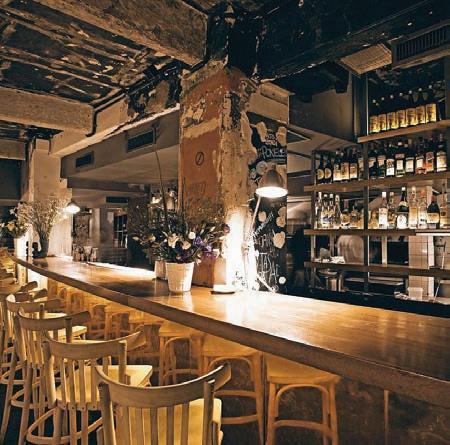
Verne Cocktail Club
A fantastical steampunk speakeasy inspired by Jules Verne, with an ‘Around the World in 80 Cocktails’ menu. vernecocktailclub.com
La Fuerza
Hip aperitivo bar with its own red and white botanical vermouths on tap and classic Argentinian snacks. lafuerza.com.ar
Strange Brewing
Taphouse
Alvear Palace Hotel
Opened in 1932, Buenos Aires’ first luxury hotel has lost none of its class. The 207-room hotel in tree-lined La Recoleta has opulence oozing from its Neoclassical facade and plush Louis XVI interiors, to its white-gloved butlers and Relais & Chateaux French restaurant. A refurbishment in 2016 saw modern suites added to the top two floors, and on the rooftop, a spa, heated pool and bar with spectacular city views. alvearpalace.com

That Philippe Starck designed the interiors should give some clue to the glitzy whimsy of this 88-room hotel. There are unicorn heads in the dining room, a pool with a huge gemstudded crown for a fountain, and a gilded cabaret theatre with its own tango show. It might be in posh Puerto Madero , 30 minutes from the city centre, but with two restaurants, including fine diner Bistro Sur , and an achingly cool bar with BA’s hottest DJs, it would be very easy to stay put.
faena.com/buenos-aires
Tigre
Less than an hour by train from Buenos Aires is Tigre, a watery world of islands and shifting rivers that makes up the vast Paraná Delta. Stretching from central Argentina to the gaping mouth of the River Plate, are criss-crossing tributaries and hundreds of lush green islands – that are best explored by kayak or onboard one of the teak ferry boats. Back in Tigre, visit the Museo de Arte Tigre , a stunning Belle Epoque building that showcases modern Argentine art. Sundays, the old fruit harbour is a bustling artisan craft market that wraps around four docks.

Smart is the word at this Small Luxury Hotel in the heart of trendy Palermo Soho . A tablet connects guests to room controls, room service and even a taxi service. More urban retreat than hotel, there are just six rooms, each with a walk-in rain-shower and private balcony, a private rooftop terrace to watch the city light up at night, heated infinity pool, and a wellness centre with spa, sauna and gym. In the evenings, the baby grand in the piano lounge bar taps out a digital tune.
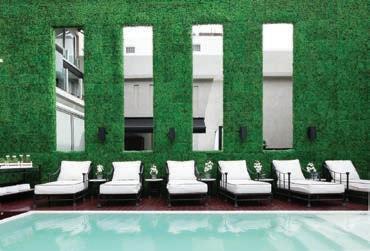
1828smarthotel.com
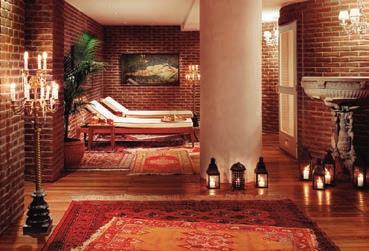

SHOES OFF, SWITCH OFF. RYAN JOHNSON DISCOVERS THE RESTORATIVE POWER OF BAREFOOT LUXURY AT SONEVA FUSHI

IT’S NOT ABOUT THE DESTINATION, IT’S ABOUT THE JOURNEY, or so they say. ‘ ey’ have clearly never visited Soneva Fushi. Situated on the once-deserted island of Kunfunadhoo in the Maldives’ Baa Atoll, Soneva Fushi is not reached without e ort. For many travellers, this tropical paradise is at the centre of the globe, but that’s exactly what makes the trip so special.
As we exit Malé International Airport, the blast of humid Maldivian air against our jet-lagged faces is refreshing, to say the least. Yet, faster than the sun can create a bead of sweat on our foreheads, the Soneva team has swooped. We’re outnumbered at least two to one by smiling and ambitious employees who quickly scan our passports and strip our bags from our sides as part of a swift and seemingly choreographed routine. A new Tesla Model X awaits – foreshadowing the resort’s unique blend of supreme luxury and sustainability – and within 10 minutes we’re enjoying the comforts of Soneva’s private lounge, ready for our seaplane transfer.
On board, it is impossible to ignore the choice of footwear, or lack thereof, being modelled by the sta . e selection is reiterated when we land at Soneva Fushi International Airport, a small wooden dock suspended in the middle of the ocean by recycled car tyres. As we prepare to board our boat, the nal piece of this travel puzzle, we are o ered a cotton drawstring bag sporting a simple message: ‘No news, no shoes’.
Very well. We kick o our shoes, pop them in the bag, and become acquainted with the barefoot luxury for which Soneva Fushi is renowned. Memories of connecting ights and airport chaos are already drifting away and, by time we reach Soneva Fushi’s doorstep, they’re long gone.
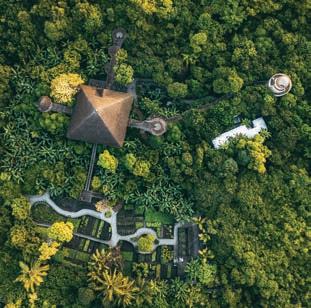


is is all part of the plan. is award-winning resort is well versed in transforming frazzled travellers, having been working such magic since opening in 1995. e only surprise is just how quickly the transition is complete. e stress must disappear through the soles of our feet as each grain of sand, each wooden dock, each bicycle pedal o ers a more meaningful connection.
It is also comforting to learn of the resort’s commitment to sustainability. From small details that may go unnoticed to the large and impressive on-site Eco-Centro, the Maldives’ rst integrated waste management centre, Soneva’s sustainability e orts are rooted in transparency and graciously nudge visitors to join in on the cause. Initiatives go well beyond inviting guests to reuse bath towels. Soneva is free of single-use plastics; it desalinates seawater to
provide drinking water – packaged in reusable glass bottles –to guests; and the on-site Soneva Glass Studio upcycles glass waste into unique art pieces, used around the resort and also available to purchase.
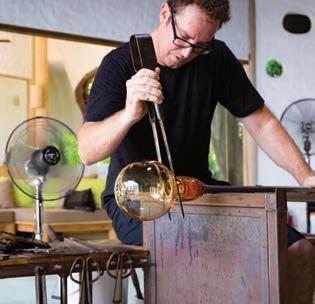
Soneva also upcycles other forms of waste: coconut husk becomes planter walls, fallen wood becomes biochar, Styrofoam becomes cinderblocks. Coconut oil, used in the resort spa and the kitchen, is produced on site and the organic vegetable garden blooms beautifully, despite the tricky Maldivian soil. As a result, fresh herbs, mixed greens, and mushrooms are featured heavily from breakfast to dinner, while all other ingredients, such as the sprawling morning spread of sliced fruit and the abundance of fresh seafood, are sourced locally.
In the Soneva kitchen, the cohesion between sustainability and world-class dining truly shines. e team creates delicious food
using only high-quality ingredients centered around health and wellness while minimising detrimental e ects on the environment.
Such is the plethora of delectable food, I don’t even notice the absence of beef product across Soneva’s restaurants. Unless speci cally requested by a guest, the resort has opted out of featuring beef dishes – yet another way of reducing the brand’s carbon footprint. I do, however, notice the ice-cream and chocolate parlours, aptly named So Cool and So Guilty.
In between frequent feasts, the array of activities helps us work up an appetite. From snorkelling right o the dock of Out of the Blue restaurant to chartering an expedition to coral reefs, the Maldives’ abundant ocean life will keep you in the water for hours on end.


Soneva is also equipped with other water-sport adventures such as diving, stand-up paddle boarding, sur ng and sea bobbing.

When it’s time to wind down, you can enjoy a private picnic on a deserted island, just 30 minutes from the mainland, or schedule a private dinner and movie screening at the island’s outdoor cinema. As for a child’s endless energy, the family-friendly atmosphere at the elaborate kids’ club, e Den, keeps young imaginations engaged. But amid such activity, on an island capable of hosting 180 guests simultaneously, we are struck by Soneva’s ability to deliver e ortless intimacy. At times, we feel as if we are the only people on the island. Quiet dinners, secluded areas and walks along an isolated beachfront are commonplace, while sta (including a dedicated host, or ‘Mr Friday’) graciously handle any and every request. With everything so thoughtfully taken care of, the only thing left to think about is the laborious return trip home. Yet, thanks to Soneva’s restorative power, even that unwanted reality is kept far from our minds.
Rates for a one-bedroom villa start at US$1310 (about A$1950) per night, including breakfast for two.
For more information, visit: soneva.com/soneva-fushi



TASMANIA IS A STATE OVERFLOWING WITH RICHES AND THE BEST WAY TO EXPLORE IT IS ON FOUR WHEELS
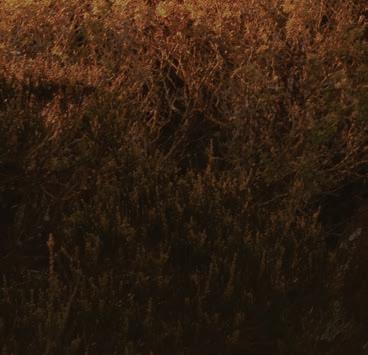
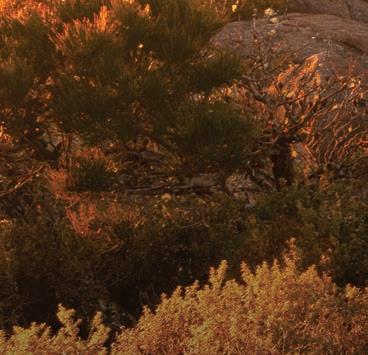


In partnership with TAS VACATIONS
DRAMATIC MOUNTAINS, VERDANT RAINFORESTS , picturesque bays, sparkling lakes, pristine beaches, abundant wildlife – to road trip throughout Tasmania is to experience the full and glorious gamut of nature’s wonders. And when you’re zipping between inspiring landscapes and attractions in a prestige Alfa Romeo, the prospect is only elevated. Put yourself in the driver’s seat with TasVacations’ 10-night Island Indulgence . Premium accommodation, heritage locations and pristine wilderness come together on this self-drive adventure, perfect for travellers of all kinds. >>
10 DAYS PRESTIGE CAR HIRE WITH OVERDRIVE Alfa Romeo Giulia Veloce
What could be more pleasurable than driving in Tasmania in an Alfa Romeo Giulia Veloce? Enjoy your trip in comfort and style as you cruise well-maintained roads and take in breathtaking vistas. You’ll find many places to pull over and explore during your journey, including hidden wineries and restaurants where you can sample top-quality food and vino. You might just want to keep driving forever.


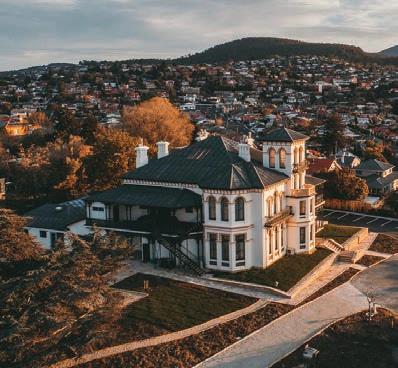
Kick off your trip in style at a boutique property on the fringes of Hobart. Maylands Lodge is close enough for guests to enjoy all the city’s attractions and amenities, but far away enough to feel like a relaxing retreat. It’s a perfect blend of history and modernity. Generosity of spirit underpins the design, ensuring this special accommodation will help you feel relaxed and energised for the journey ahead.

Experience the beauty and charm of the west coast during your Tasmania travel adventure. Located in the heart of this region, Strahan Village offers easy access to Gordon River and, as the entry point to the Tasmanian Wilderness World Heritage Area, is perfectly situated to explore stunning the mountains, rivers and rainforests found here.

The Cradle Mountain Hotel is a luxurious place to rest your head after a day of touring. The setting – an alpine forest on the edge of the mountain – will inspire you to discover all the wonders of the nearby UNESCO Wilderness World Heritage Area. The hotel has a restaurant and lounge bar offering all-day dining. Enjoy woodland views from all aspects of the property, or wander down to meet the wombats, wallabies and echidnas that roam freely on the grounds. Access to the Cradle Mountain Wilderness Gallery is free for guests, making it a must on your Tasmania itinerary.
At just 20 metres from the harbour’s edge in historic Stanley, @VDL is true waterfront accommodation and will be a welcome stop on your itinerary. Built in 1843, this warehouse-style hotel has remained loyal to the building’s industrial past and original architecture. Modern elements, such as custom beds and deep-soaking baths, take luxury to the next level. You’ll find everything you need for an enjoyable stay.
This 4.5-star accommodation is a short distance from the Tamar River, and within easy walking distance to the thriving Seaport dining district and some of Launceston’s finest restaurants. The Sebel has a relaxed and contemporary feel and the open-terrace restaurant offers delicious regional wines and dishes made from quality Tasmanian produce. Savour your time here before setting off on the next leg.


A Tasmanian driving holiday is not complete without a visit to Coles Bay, and Freycinet Lodge offers the unique experience of staying in a national park. You’ll relish the seclusion and beauty in this peaceful bushland setting, which overlooks Great Oyster Bay and the Hazards mountain range in the distance. This is a wonderful spot to discover the breathtaking east coast of Tasmania. Spend your time strolling on pristine beaches, exploring the national park and scaling granite mountain peaks. The waterfront accommodation incudes a restaurant, bistro, lounge and bar.
Your Tasmania driving holiday also includes a world-class Gordon River cruise. As you pass Hell’s Gates, the channel leading to Macquarie Harbour, your knowledgeable guide will give you an account of the area’s fascinating history, ecology and geology.
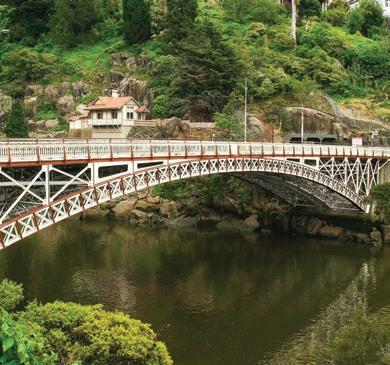
On Tasmania’s harshest penal colony, Sarah Island, you’ll get a comprehensive tour that doesn’t ignore the terrible conditions of the past, then you’ll sail through ancient World Heritage rainforests to arrive at the Heritage Landing boardwalk. Here you’ll disembark for a peaceful stroll through lichen-covered forest and get a chance to see a 2000-year-old Huon Pine.
A tasty buffet lunch is provided, with a wide selection of cheeses, salads and fresh fruit. There’s a licenced bar onboard to buy drinks. Gold Seat passengers enjoy the spectacular sights from premium recliner chairs on the upper deck, ensuring this will be one of the most cherished memories from your holiday.
The National Parks Pass provides free entry to the island state’s many woodlands, rainforests, beaches and mountains. There’s something for everyone in the diverse landscape. The hardest part of your trip will be choosing where to go. With a pass, you can go back as many times as you like to your favourite places, making it a convenient, cost-saving inclusion in your Tasmania tour package.
This hotel is a wonderful place to finish your Tasmanian adventure. Situated in the Coal River Valley wine region, this beautiful building has a rich history, dating from the colonial era when convicts, servants and settlers roamed its corridors. It has an excellent restaurant and provides unique extras such as cooking and beekeeping classes. The rooms are luxurious with all the modern conveniences to make your final night a memorable one.

SET IN ONE OF THE MOST BREATHTAKING YET LITTLE-KNOWN LOCATIONS IN INDONESIA, BAWAH RESERVE IS THE PINNACLE OF HIDDEN TREASURE, WRITES MADELIN TOMELTY
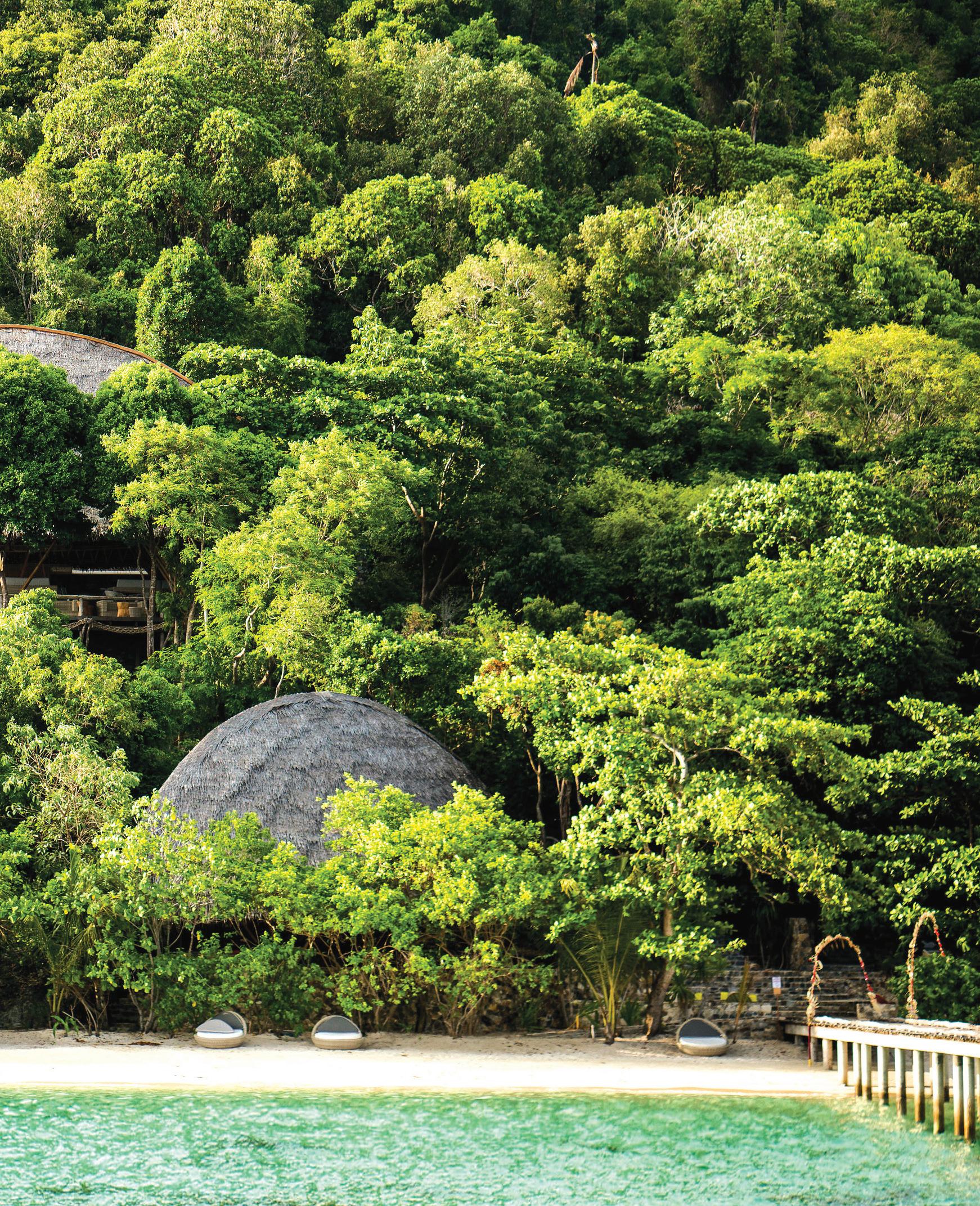
“MORE COFFEE?” “NO THANKS, I’LL TAKE SOME JUICE, though, and another warm mu n… and maybe some more fruit salad, and…”
ey say you should eat breakfast like a king, and we’re certainly doing that today, but not in the way you might think. Our location is a secret squirrel of a beach in the Anambas Islands in Indonesia, and to say the spread and scenery are a step-up from our usual breakfast setting would be an understatement. is is not your regular beach picnic, either, because it has been organised by Bawah Reserve, and nothing Bawah puts on is ever regular. We were brought here by speedboat at 8:30am expecting a few beach towels and a picnic basket with a handful of snacks. An umbrella, perhaps. Instead, we arrived to a large Balinese-style balé, set back from the beach in the shade of the trees, with woodpanelled oors and inviting furnishings including oor lounges, cushions, a table and leather chairs for two. We then watched in amazement, feeling slightly foolish, as the Bawah sta unpacked endless edible morsels for us to break our fast in the most memorable of ways. at’ll show us for underestimating one of the most coveted island resorts in Indonesia.



e small, very pretty Turtle Bay we’ve landed on is just one of 13 sandy havens across six islands – all private – that guests have access to at Bawah Reserve. Romantically remote at 300 kilometres northeast of Singapore, it’s not an easy place to get to – the journey involves an international ferry followed by a 90-minute seaplane –but when you arrive, boy do you arrive. e bird’s-eye view of the main island on the descent is of lush tropical jungle and an azureblue ocean that gently changes hue as it heads towards reef-speckled lagoons and onto powdery white beaches. From the dizzying heights of the sea plane, the resort’s beach villas look like little matchboxes lined up on the sand, while the main buildings are hardly noticeable
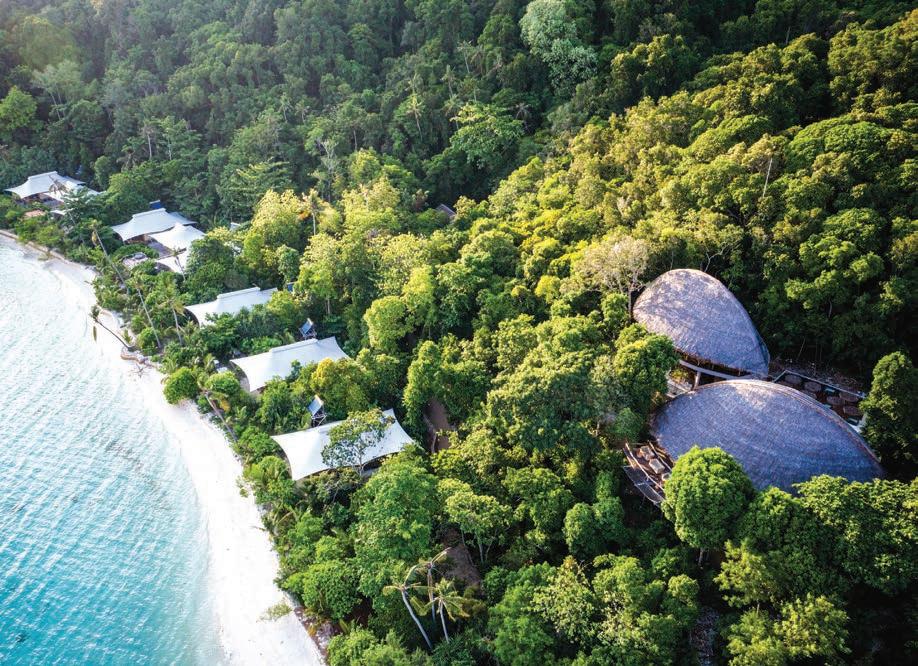
at all, their curved, thatched roofs hesitantly pushing through the trees like the caps of ginormous exotic mushrooms.

Lord knows how this place was even discovered – not even the Singapore Air sta on our ight from Sydney had heard of it. Not that we’re complaining. Having your very own Robinson Crusoe experience has become something of a dream among tightly wound city dwellers – myself no exception – and Bawah’s isolation guarantees its exclusivity. Only about 10 per cent of the Anambas’ 250 islands are inhabited, making it perfect for adventure and adventurers. Now a designated marine conservation area, making shing illegal, Bawah Reserve opened in 2017 as a beacon of sustainable, luxurious hospitality. e owners’ goal was to preserve and protect an ecological paradise, and this meant designing and building an exemplary eco-resort that would not impact the natural environment either while it being built, or when it was up and running. Using bamboo as the main structural material and putting the buildings on supports to minimise damage to the landscape, the build took ve years – a process Singaporean architect Sim Boon Yang has described as “both painstaking and rewarding.”
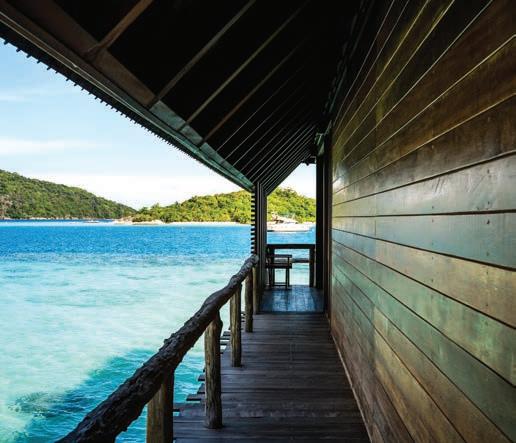
Yang worked on a concept of a ‘lost world’ for Bawah, where the guest is an explorer botanist, and their inner child is >>
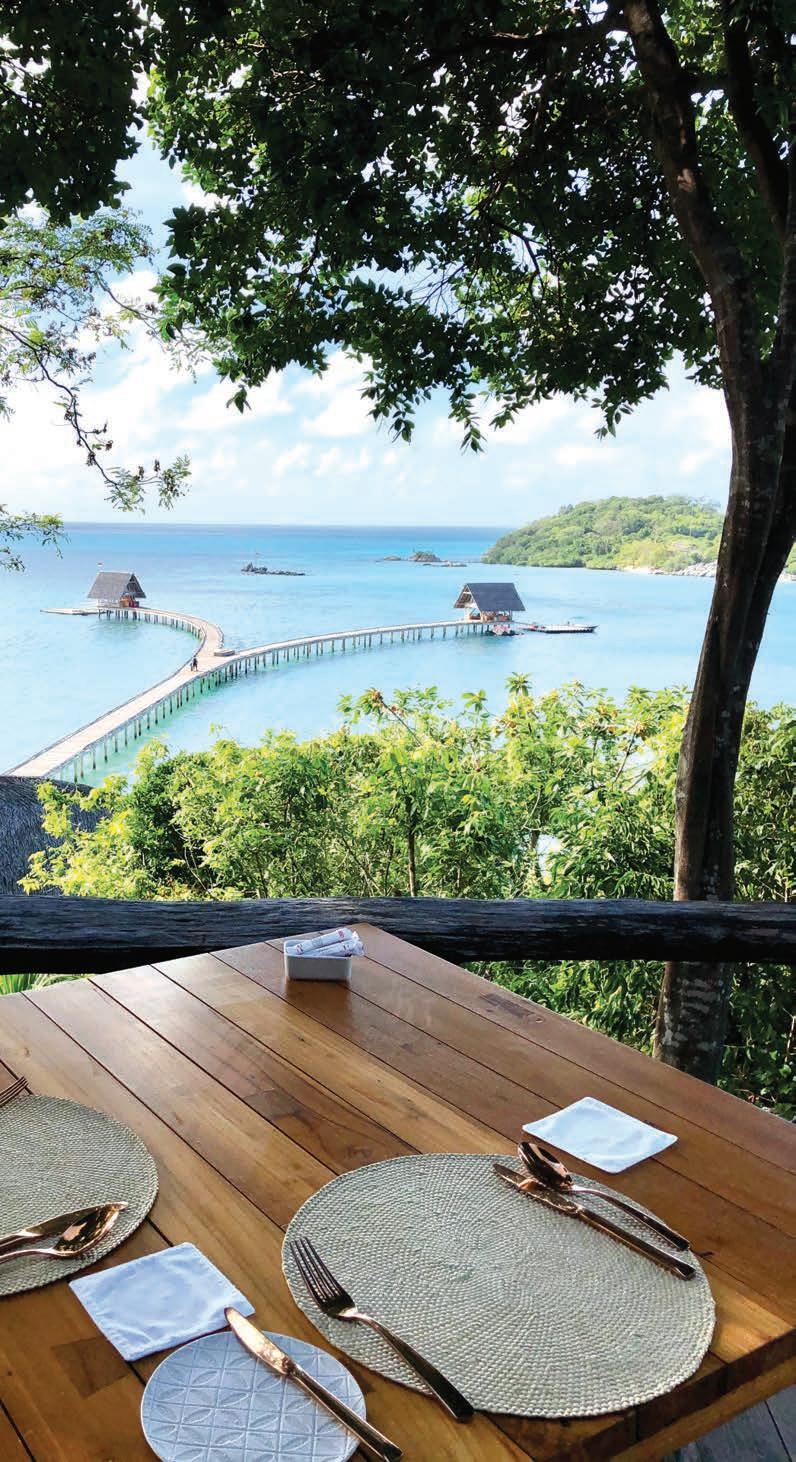
reawakened by the resort. Bawah’s two restaurants, in particular, demonstrate the faultless execution of this childlike, light-hearted and yet luxurious design. Sitting 84 steps upslope at the physical peak of the property, Tree Tops restaurant requires stamina, but at the summit is the ultimate reward. e hero view of Bawah’s unique shtail jetty, along with Elang Private Island, where Bawah Reserve is opening an ultra-exclusive cluster of private villas later this year, is indescribable. I am on my eighth visit to this country, yet am again presented with an example of its spectacular beauty. Most will nd it hard to peel their eyes away from that view, but if you can, look up. ere is a magni cent oversized light feature that resembles a jelly sh and, in the evening, it changes colours creating a sort of marine-themed discotheque dinner experience. You can’t help but talk about this focal point when you dine at Tree Tops, but by the second night I’m more interested in discussing why my partner is not wearing any shoes. He has taken the whole ‘barefoot luxury’ thing as literally as possible, and despite the fact that everyone else in the restaurant is, on a quick glance around, indeed wearing shoes, he’s unfazed. For a man that nds it hard to switch o , this says a lot about the e ect of Bawah Reserve. Somewhere bare feet do make sense is at our favourite lunch spot, e Boat House. Yang’s idea of childlike fun and freedom continues at this relaxed restaurant, where natural-edged wooden chairs, swinging seats suspended on rope and curved beach loungers invite guests to loosen up and just chill out, man. With the sand between your toes, literally, it’s the kind of e ortless beach shack vibe all the cool kids would love, although with a glass of wine or a cocktail costing around $40 after taxes, any grand ideas of uninhibited sundowner sessions may be quickly abandoned. Luckily, Bawah Reserve is a true utopia for swimming, snorkelling, diving, hiking, sailing and simply being, and the latter
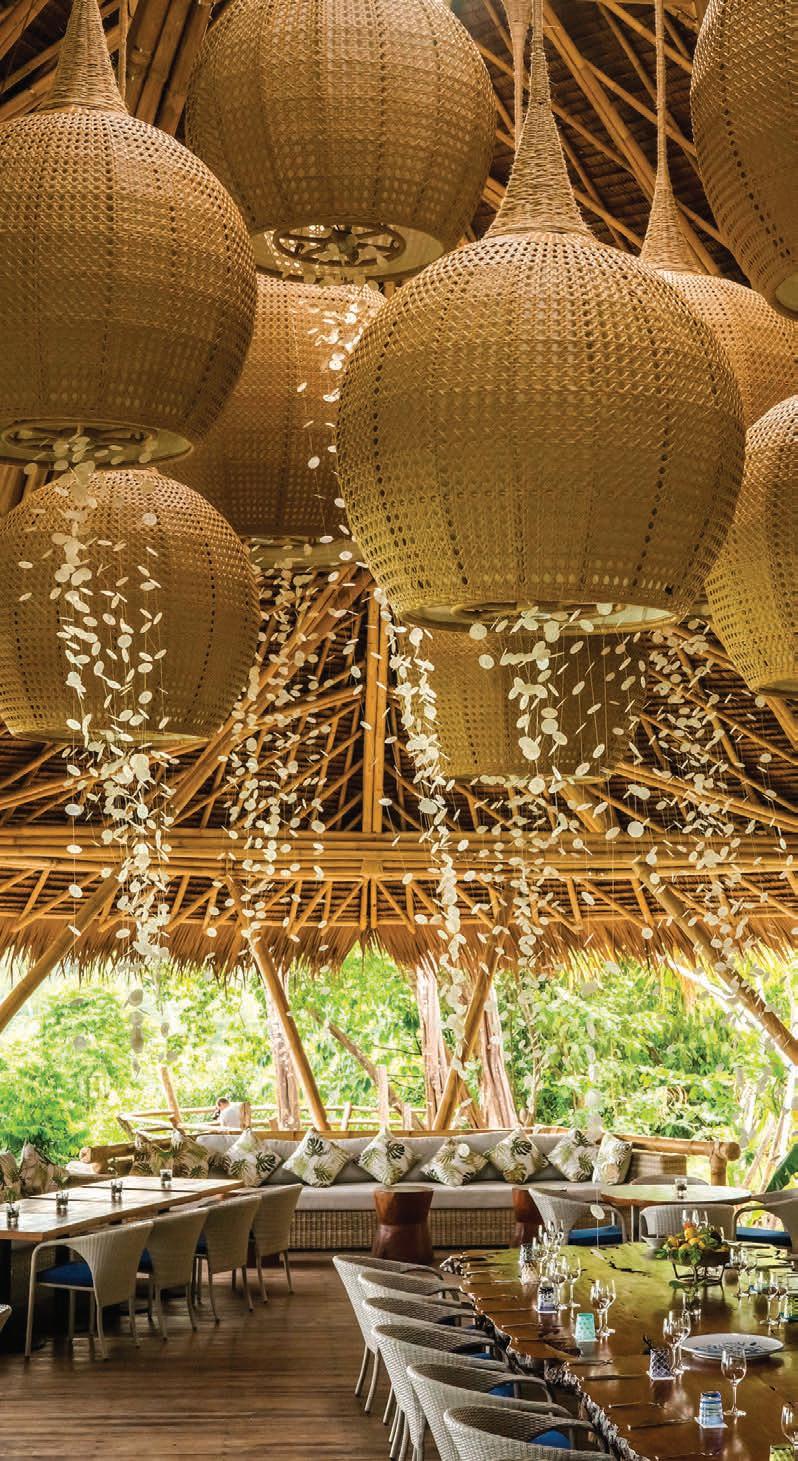

is how I spend a lot of my time during the three nights we are there. is is only partly because it is monsoon season and it rains a lot during our stay, and more because any excuse to relax will do, especially when there is beauty at every angle.
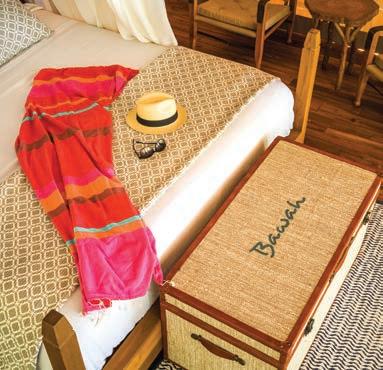



For those who like to stay active, a full island itinerary is provided on arrival. is can be amended at guests’ discretion, or ignored altogether, although I highly doubt many would turn down the daily spa treatment, which is a standard inclusion of the full-board experience. Also o ered on fair-weather days is a sunset boat trip around all six of Bawah’s islands, an open-air movie night, a private destination dinner, croquet, and a tour of the resort’s organic gardens. Wet weather activities include twicedaily yoga/Pilates, a mixology class, a whisky and chocolate tasting session, an Indonesian batik painting class and a traditional Indonesian cooking class. ere is also a library to leaf through >>

for the book worms and an ice-cream cart, which, let’s be honest, is fair game come rain or shine.
e 35 eco-focused suites and villas are sustainable through and through, with the 19 Beach Suites and three Garden Suites using safari-style canvas for their ceiling and walls, creating an out-of-Africa-meets-rustic-beach-bunker vibe. More luxurious are the Overwater Bungalows, where we happily chill during the daily deluge, book in hand. e bathroom is my favourite part of the villa, with a striking copper tub and wall mural, and the space looks particularly beautiful lit up in ambient lighting each evening. Turn-down each night comes with petit-fours, a handmade ornament of one of the creatures found in the surrounding waters, such as the sea urchin or star sh, and an educational note about the animal. At Bawah Reserve, the lessons on sustainability never stop.

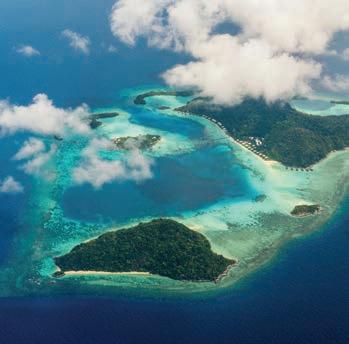
Around 30 per cent of the fresh produce served at Bawah comes from the resort’s organic garden and there is an on-site waste management centre that even crushes glass and uses it in the water filtering process. All water on the island is drinkable, unlike most other Indonesian locations, and there are no plastic bottles allowed. Bawah’s partner foundation, Bawah Anambas Foundation, works to protect and conserve the natural environment, while educating the communities on surrounding islands about recycling and conservation, and o ering skills training and English lessons.


A standout for many will be the couples-focused Spa Explorer experience. A more modest, but still memorable, iteration of Nihi Sumba’s Spa Safari concept, the experience involves a speedboat ride to another secluded beach and a 60-minute massage. Another opportunity to disconnect from the world and reconnect with nature (and your partner), it is accompanied by a soundtrack of the ocean lapping gently nearby and the cicadas in their element. e aperitif of a hydrating raw coconut completes the experience, before a swift skim across the cerulean water, back to the main island.

For us, the therapists are not quite up to the standards that the exclusivity of the resort suggests (one couple staying at Bawah while we were there ew home by private jet), and we feel the inexperience of many sta during our stay. Put it down to the resort’s relative youth, or the fact that one-third of Bawah’s sta hail from the region, where there are few similarly luxurious properties. Regardless, we are always treated with utmost courtesy, and get the feeling the intuitive customer service that traditionally comes with such resorts is simply a matter of time. ere’s no such thing as perfect, after all, but as one of the most dazzling destinations I have ever visited, Bawah Reserve comes pretty close.
Rates for a one-bedroom Garden Suite start at US$1780 (about A$2665) per night, including all meals, all non-alcoholic drinks, one spa treatment per full day, use of the Wellbeing Centre and daily movement classes, non-motorised watersports, land sports, daily laundry and WiFi.
Bawah Reserve arranges round-trip transfers from Singapore for US$700 (about A$1048) per person.
For more information, visit: bawahreserve.com
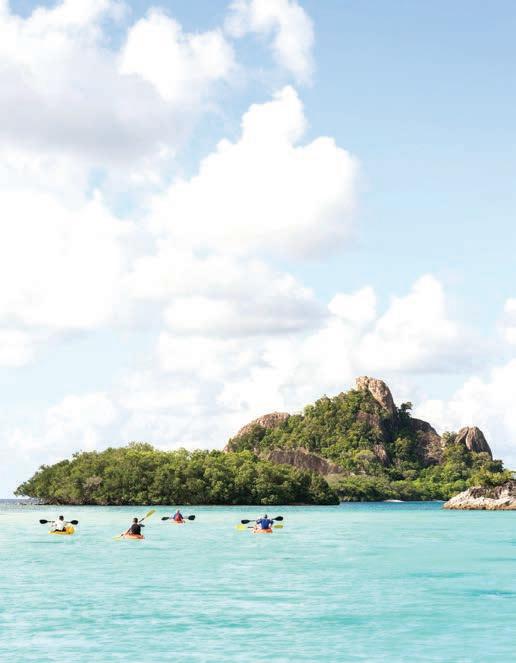

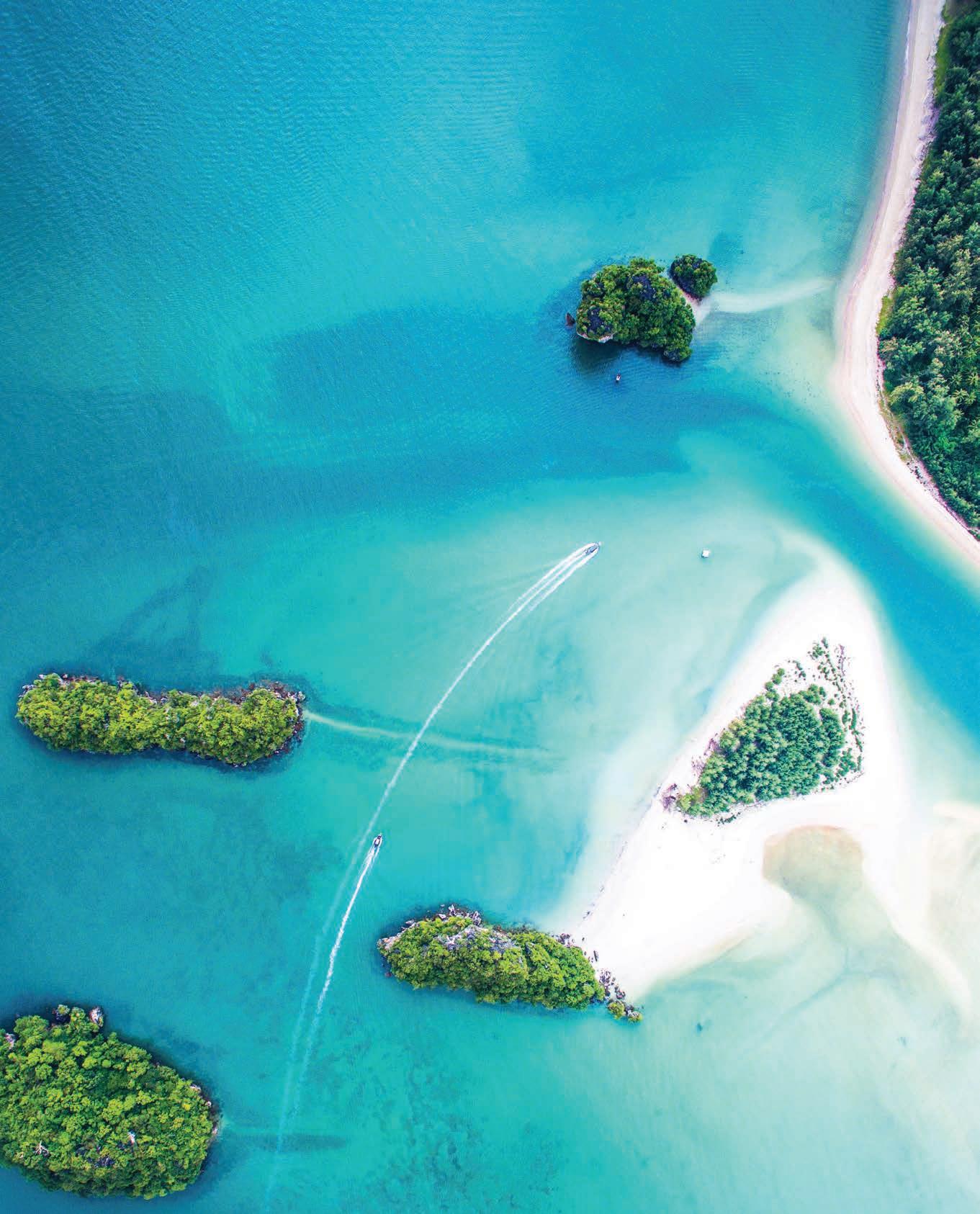

A DYNAMIC MIX OF HISTORY, HOSPITALITY AND DISTINCT CULTURAL OFFERINGS CONTINUES TO MAKE MEXICO CITY AN UNFORGETTABLE DESTINATION
Words by MARJORIE PERRY

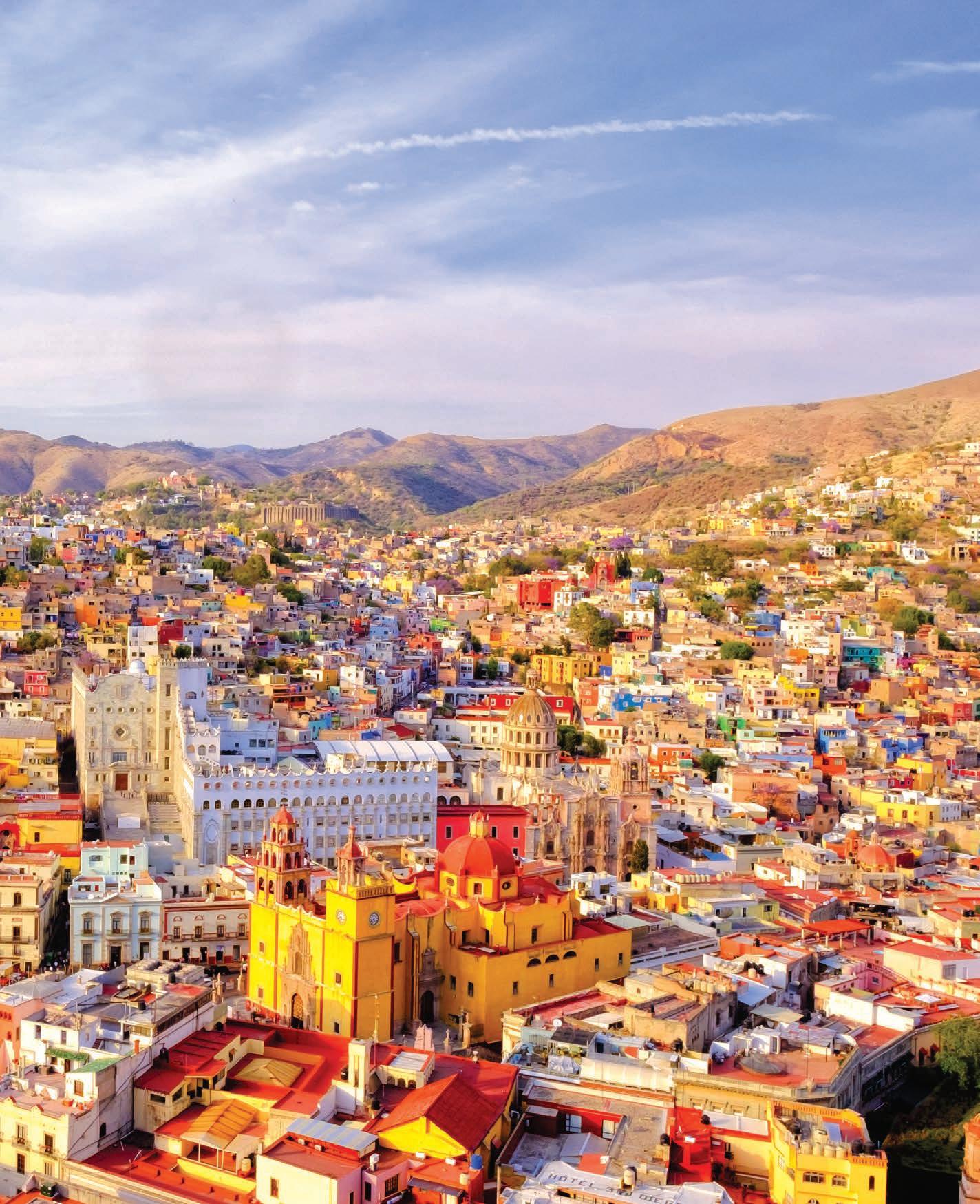
We wake to a sweltering hot morning. Stepping out onto the sunlit streets, we’re greeted by the press of Mexico City’s infamous tra c; heavy semitrucks barrel through a sharp turn, dusting us with a ne exhaust. As we cross the highway overpass we see someone has left a message in lime green spray paint that is unexpectedly touching, and at odds with the usual grit of street gra ti: “Welcome foreigners.”


Mexico City is the most ancient capital in the Americas, and one of only two founded by Indigenous people. eir lasting in uence continues to permeate the city, despite e orts by the colonising Spaniards to wipe them out entirely. It’s one of the highest altitude capitals in the world, as well as one of the fastest sinking cities, at around a reported 38 centimeters per year in places. e government is known for rampant corruption, yet the local people are some of the most politically active in the world. In short, at each turn are contrasting forces that combine to create a place that is distinct from anywhere else, and when we travel, this is, ultimately, the thing we hope to nd.

e Audiorama at Chapultepec Park is one such place. I’m a traveller that usually plans an itinerary to the nth degree, and this excessive advance research usually leaves little opportunity for surprises. But thankfully, Audiorama had own under my radar, and as my husband and I cross into the park’s rambling green space that is home to a zoo, a castle, and year-round festivities, there is little to indicate what awaits us. ere is no
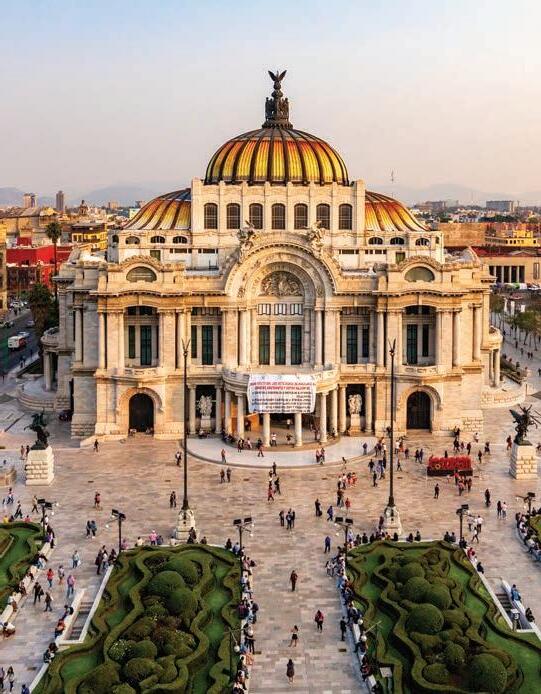
signage leading us any which way, and no trail of fellow travellers to follow. Instead, we just happen upon the Audiorama, pulled in by the sounds of Bach’s cello suite sifting through the trees. At the entrance of the clearing there is but a small sign stating the singular rule for enjoying the space: “No talking, please”. Within, it’s not possible to simply sit on the low-slung benches. e angle of recline obligates visitors to lean back – way back, in a gentle push to sink completely into the experience.
is leafy clearing is thought to have mystic properties that heal and rejuvenate, and local resident Hector Sampson can attest to that magic. Originally a frequent visitor to the park, Hector has become the defacto greeter, volunteering at Audiorama for several hours each day. “ is space allows people to nd peace,” he says. “Some people visit to come to terms with the loss of a loved one, or to celebrate love.” Hector has witnessed several whispered proposals, most greeted with a tearful “yes”. Today there are several couples present; the girls have vibrant, satin bows woven through braided hair.
At the shallow cave that borders the Audiorama, a smattering of candles burns on a makeshift altar. Pre-Hispanic people believed the space was the gate to the underworld, and centuries later, the site, densely planted with cypress, sequoia and cedar, was favoured by Empress Colata for her afternoon tea service. Later still it was converted into the training grounds for the Mexican president’s secret service. Today, the Audiorama is open to all, nearly every day of the year.
After spending the morning in a state of zen, we’re ready to reconnect with the vibrancy of the city’s street life, and this turns out to be one of the highlights of our trip. Each roving day is punctuated with impromptu entertainment and a ordable, delectable snacks, like the main rotating bu et we nd at the entrance of the park. We grab freshly popped popcorn and chilled celery juice with a squeeze of lime, and the look in my husband’s eyes as he spots these food carts on each day of our trip never fails to entertain me.
One of the best walks in the city is along the historic Paseo de la Reforma. is wide avenue was designed in the 1860s and meant to compete with the wide, tree-lined boulevards of Europe. Spacious sidewalks means you don’t feel cramped in a city of 22 million. It’s on Paseo de la Reforma that we come across one of the city’s many organ grinders. ese hand-cranked organs originally came to Mexico via Germany in the 1800s and have been a xture in Mexico City’s diverse street performance culture since then.
Although locals seem to have grown tired with the organilleros, I enjoy catching their distinct sound as we wander through the city. On Paseo de la Reforma we stop and listen, and pitch in a couple coins to the collection tray. e man smiles, his eyes >>

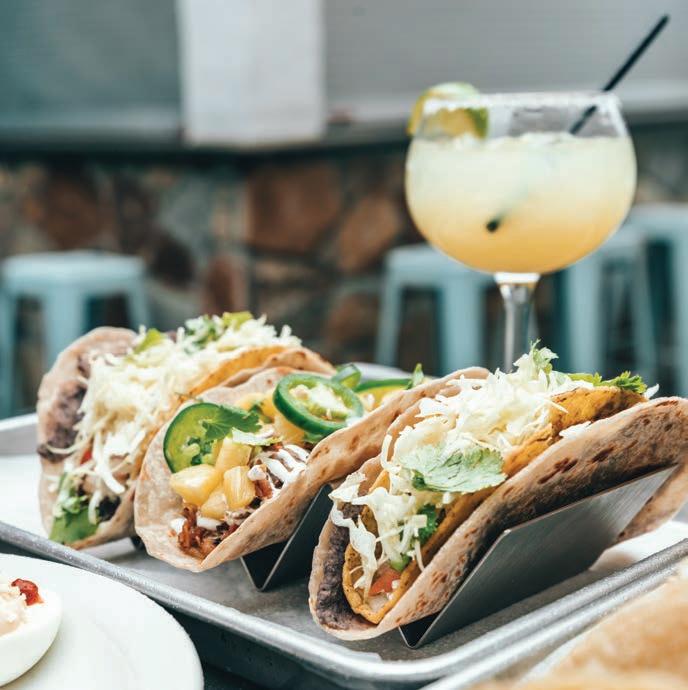
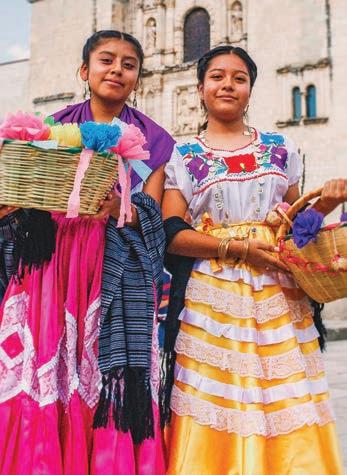

crinkling and almost disappearing under thick eyebrows, and he motions for me to come over, inviting me to turn the organ grinder’s handle. It’s not as easy as it looks. You have to apply consistent pressure, but due to the notes (or perhaps the age of the instrument) the internal gears have varying levels of resistance. We snap a couple sel es, say thank you, and continue on our amble.
We turn o Reforma and meander through quiet lanes populated with low-rise apartments, admiring the diversity of architecture that lends depth and a sense of history to each distinct street. At last we nd MUCHO Museo del Chocolate. Located in a converted Victorian tri-level, the rst oor has wicker chairs and a long display case full of chocolates of varying intensity, shapes and lling. I order a Mexican-style hot chocolate and it’s absolutely delicious. Cinnamon, nutmeg and ancho chilli add complexity and earthiness to the sweetness of the drink, and the use of a traditional wooden whisker to incorporate air brings the avours all together and makes the texture frothy.

On the second oor, I join a free guided tour of the museum, led by a local anthropology student, Wendy. She starts o by telling us proudly that chocolate is Mexico’s gift to the world. She escorts our small group through a well-curated museum, which has used a variety of methods to bring the history and development of chocolate to life. We learn that the Aztecs used to drink a cocoa-based beverage before going into battle, and that one nunnery so feared the addictive powers of chocolate that one of their convent’s requirements was to completely abstain from it. Chocolate is pretty powerful stu , as it turns out; time for another hot chocolate.
With a new burst of energy we continue on to Museo de Arte Popular. e four-storey building has an open atrium, which allows light to stream through the convex glass dome and light up the papier-mache alebrijes within. is folk art depicts fantastical beasts that come in a kaleidoscope of colours and range from towering forms over two metres down to the miniscule, small enough to hold in your palm. Originating in Mexico City in the 1930s, it continues to be a thriving art form, with petite versions sold throughout the city’s open-air markets. Although it might be a sales gimmick, one woman tells us that an alebrije is akin to one’s spirit animal—they provide companionship and guidance.


e museum also has an excellent collection of other folk-art artefacts, representing the vast tradition of self-taught and intuitive art present throughout the country. ere are samples of local dress, hand woven with intricate designs; complex claybased scenes that re ect beliefs about the afterlife; and a collection of massive, bedazzled scull sculptures. >>

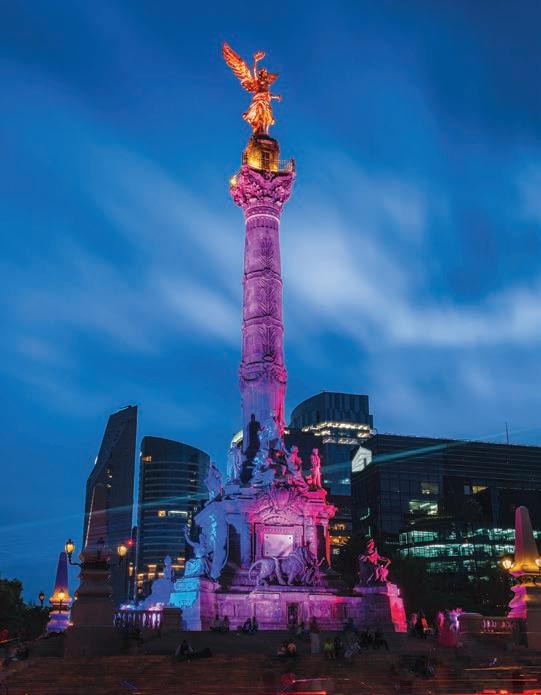
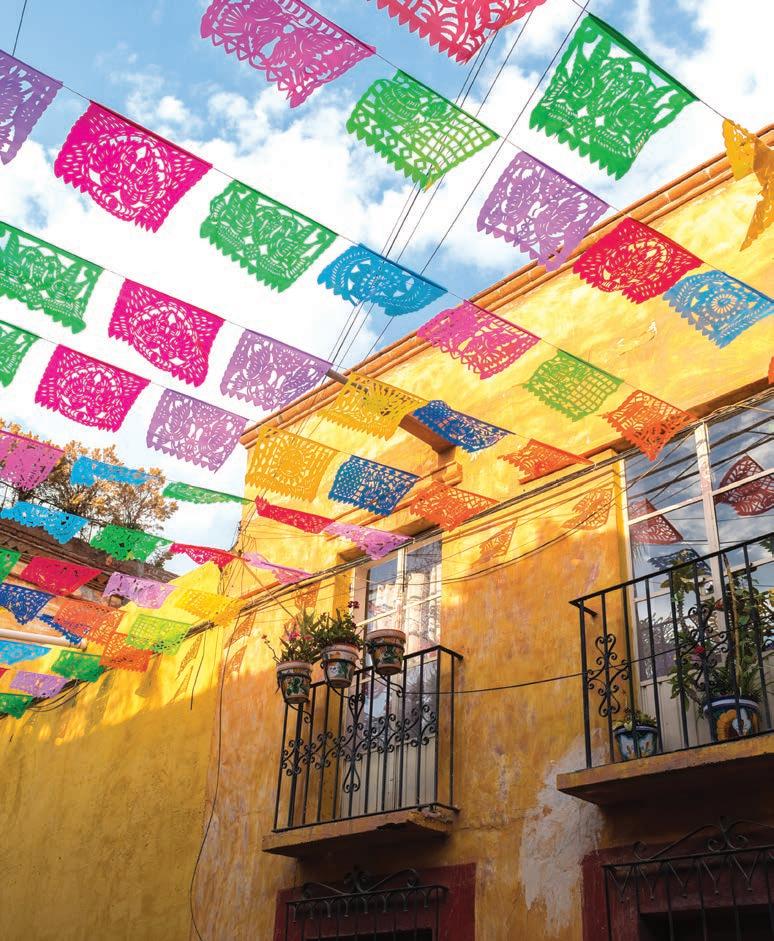




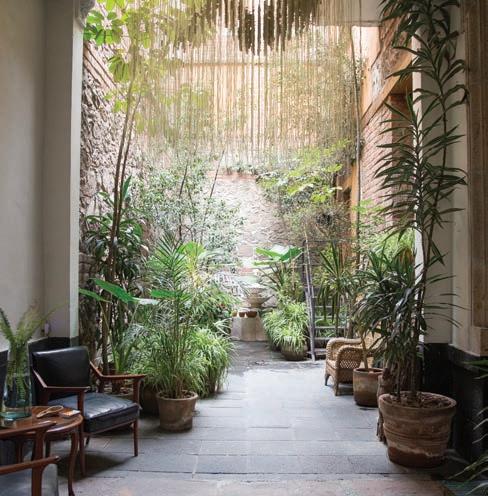

After a day of exploring, we retreat to Ignacia Guest House, our boutique B&B in the leafy, walkable Roma district, which feels exactly how we imagined it, thanks to the Oscar-winning 2018 black and white lm of the same name. e property was built in 1913 and was originally a second home villa for Mexico City’s well-heeled. It has retained its original glamour and re nement—intricate crown molding and glossy hardwood throughout—while absorbing modern ve-star touches, like o ering guests a complimentary cocktail each evening. With only ve rooms, the property maintains a homely, intimate feeling that is lovely to retreat to at the end of each day of exploration. e lobby is warm, welcoming and decorated with original art, and low-slung couches entice guests to kick back and peruse the sizeable library of artsy magazines and guide books. For my husband and I, we like to wind down for the evening in the garden at the back of the house. When the wind comes in, it brings with it a fresh citrus scent from the orange trees that makes me want to linger, but we want to maintain a walk- rst,
local approach to the city, and that means eventually moving on to discover the next neighbourhood and hotel.
El Patio 77 was built in 1890 and today the mansion has taken on new meaning as the capital’s rst sustainable bed and breakfast. Mexico City has a severe water shortage, so El Patio’s owners have invested in a rainwater catchment system and a grey water recycling program. Many of the rooms are decorated with found art, and there are no single-use plastics. As someone who has been trying to create less waste and reduce my carbon footprint, it is satisfying to nd a hotel that aligns with these values. With just eight rooms in a massive home, El Patio o ers a private respite in a bustling city that possesses an enduring allure matched by few other destinations. In fact, Mexico City has become one my favourite places in the world – a city that is perhaps best described by Jewish intellectual Anita Brenner in the prologue of her 1929 book on modern Mexican art and its roots, Idols Behind Altar: “Once the dust of Mexico has settled on your heart, you have no rest in any other land.”
Flights | Mexico City is serviced by most major airlines, including Virgin Australia, American Airlines and United.
Hotels | Ignacia Guest House | Rates start from US$318 (about A$470) per night. ignacia.squarespace.com
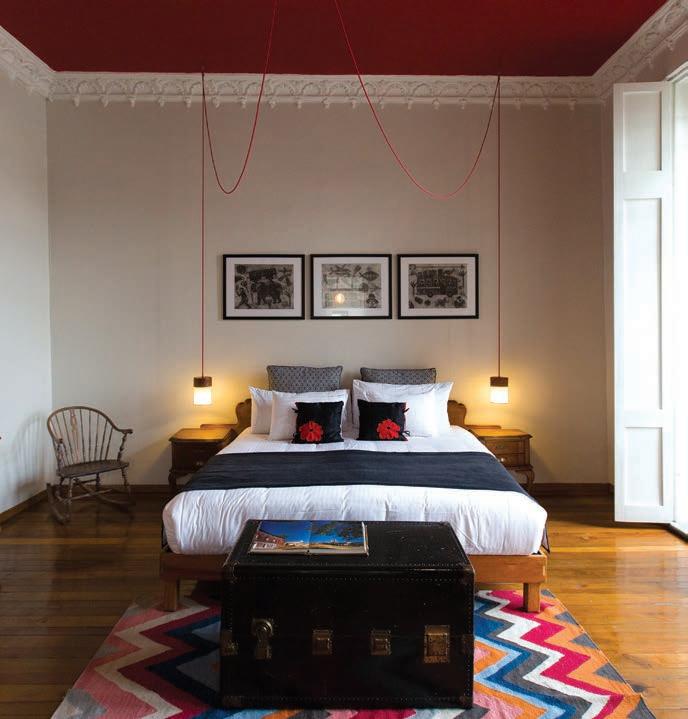

El Patio 77 | Rates start from US$139 (about A$205) per night, excluding taxes and including breakfast for two. elpatio77.com

For more information, visit: visitmexico.com/en


EXPLORING THE GALAPAGOS ISLANDS IS ONE OF TRAVEL’S MOST PRIZED JOURNEYS. ABOARD A LUXURY YACHT, THE ALREADY-INSPIRING EXPERIENCE BECOMES INCOMPARABLE
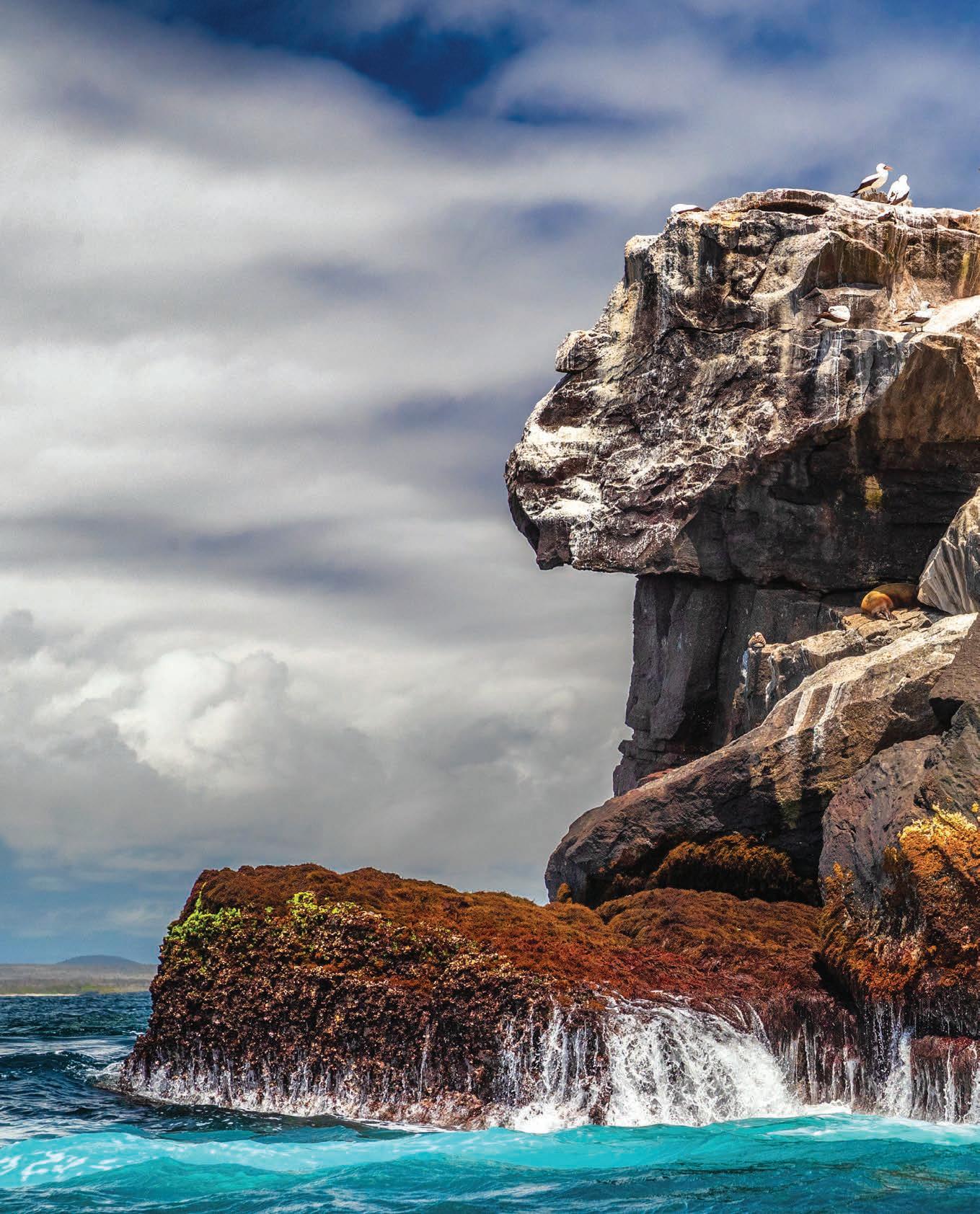 Words
Words




by
 KELLY ALLEN
KELLY ALLEN
Select photography by JACQUELINE SCHOFIELD
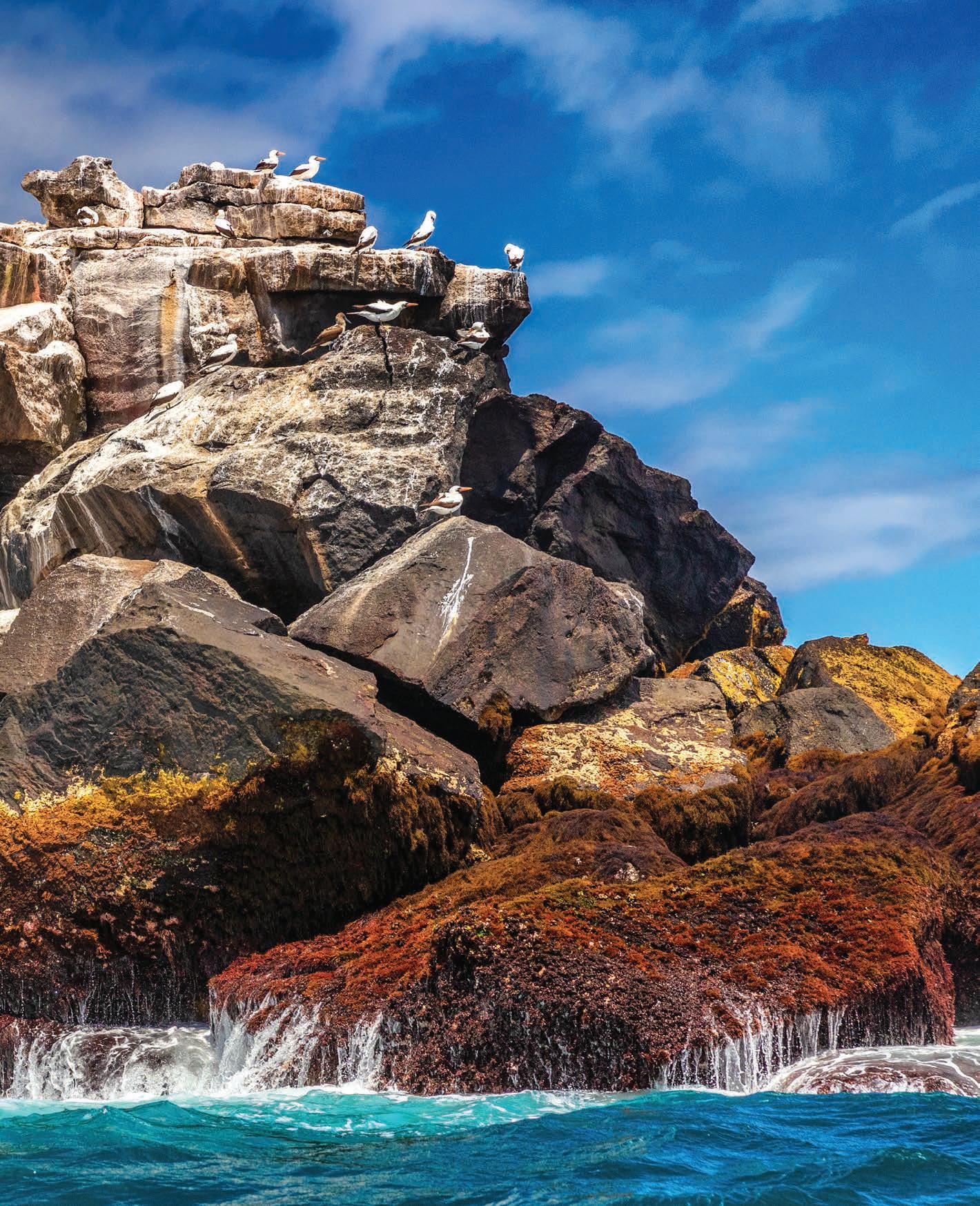
At rst glance, it looks like an underwater torpedo with whiskers. But as it zooms beneath me a second time, it pauses and o ers a look as if to say, “Come on, chase me.” e little brown sea lion pup is close enough to touch, which is tempting but we have been forewarned by the naturalists: no matter how cute they are, the animals here are all wild. And this little guy is de nitely breaking the rule of keeping a two-metre distance.
I’m only 10 minutes into the rst afternoon of snorkelling, and if this interaction is any indication of what’s to come, this is going to be a trip like no other.
Located nearly 1000 kilometres o the coast of Ecuador lies the volcanic archipelago of the Galapagos Islands. is fragile eco-system of 19 islands and around 40 islets in the Paci c Ocean has formed on the Nazca Plate, one of the most active volcano regions on the planet. In 1835, 26-year-old Charles Darwin was so inspired by this unique region that it prompted him to write his famous eory of Evolution. It was also one of the rst places to be listed as a UNESCO World Heritage Site and is considered one of the world’s top destinations for wildlife viewing, with more than 2000 endemic species. With all of these accolades, I’m eager to begin my ve-day itinerary exploring the Eastern Islands of the Galapagos on the 63-metre luxury yacht La Pinta



Cruising is the optimal way to explore the archipelago as you hop from island to island, often exploring two sights in a day. Snorkelling equipment and short wetsuits are provided along with stand-up paddleboards, kayaks and a glass-bottom boat for those who prefer to stay dry. Vessels in the Galapagos are closely regulated and hold as few as a handful of guests, up to a maximum of 100. La Pinta has 24 cabins, which means just 48 guests at full capacity. ere are four local guides so groups are
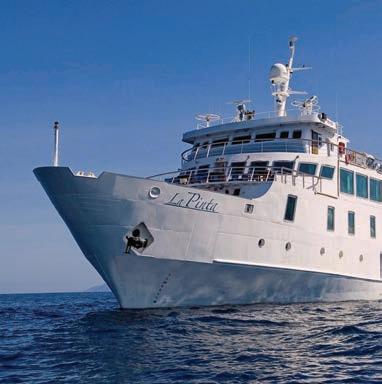
small and there are several excursion options depending on how active you are feeling.
In general, it’s good to have at least a basic level of tness as much of the terrain is rough and encompasses uneven lava elds, rocky paths, muddy trails, and a couple of steep hills.
Getting to the Galapagos is a journey in itself, so to make the most of your adventure, days start early and the program is fairly intensive. It’s not a u -around-thehot-tub-drinking-cocktails holiday, though there is a bit of time for that in the evenings.
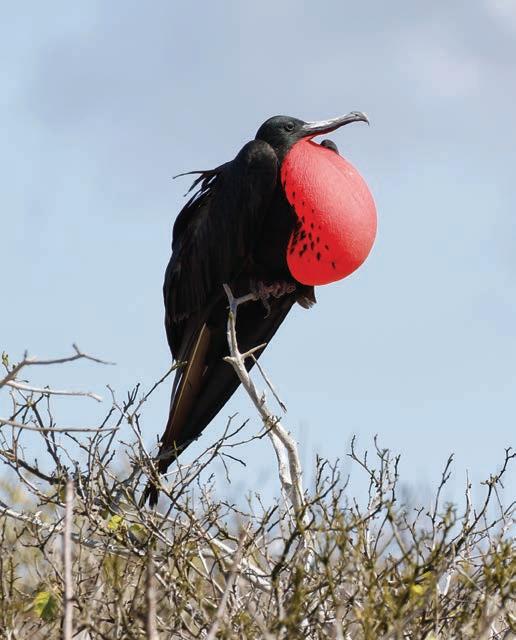
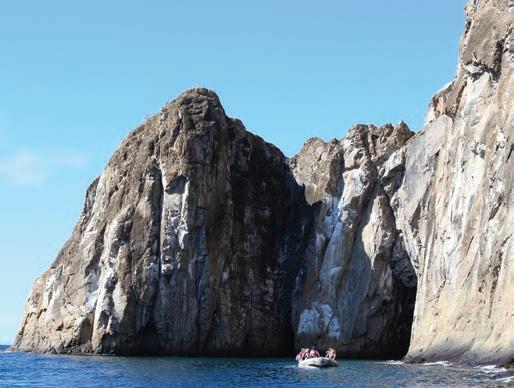

Most mornings start at 6.30 with a classical music wake-up call over the intercom (you will nd the volume control pretty
quickly), followed by breakfast, and on to the pangas – the small in atable boats that hold about a dozen people. e morning excursion might be a big hike through the lava elds of Espanola Island to check out the colonies of waved albatross and bluefooted boobies, or a visit to the Charles Darwin Research Centre on Santa Cruz Island to learn about the tortoise breeding program.
Watching the albatross honking and bobbing their heads up and down, and listening to the clatter of their long yellow beaks smacking against each other, I feel as though I’m in a National Geographic documentary. e boobies put on their own show, with the males bowing deeply, stomping their >>
“ It [Galapagos Islands] was also one of the first places to be listed as a UNESCO World Heritage Site and is considered one of the world’s top destinations for wildlife viewing, with more than 2000 endemic species.”Clockwise from above: Carpetweed vegetation on South Plaza Island; exploring Cerro Brujo; a frigate bird. Opposite page, top to bottom: Sea lions basking; La Pinta in the wild; red lightfoot crabs.
turquoise feet, and presenting the hopeful partner with a gift (a tiny twig will do).

While exploring Gardner Bay on Espanola Island, we come across a newborn sea lion pup (less than an hour old, according to our guide) crying for some milk, and mum trying to show it how to feed. But not all scenes are as sweet. We observe natural selection rsthand when we walk past a weak and dying seal pup whose mother must not have come back from hunting. Unfortunately, adult females will not adopt other pups, and it was hard to watch at times. I’ve never experienced close-up animal behaviour like this, not even on safari.
e profound isolation of the islands and lack of natural predators means the wildlife have no fear of humans. is is by far the most unique element when visiting the Galapagos. Skirting past frigate birds nesting in the middle of the trail, carefully stepping between hundreds of marine iguanas, and clapping your hands at sea lions when they need to be gently moved on as they bask in the sun on the pathways. Some can’t be bothered moving, so you practically have to step over them.

Lunch happens back on the boat on the outside deck. Seafood is the main attraction with delicious local Ecuadorian dishes like ceviche, baked sh, several salad options, the best popcorn you
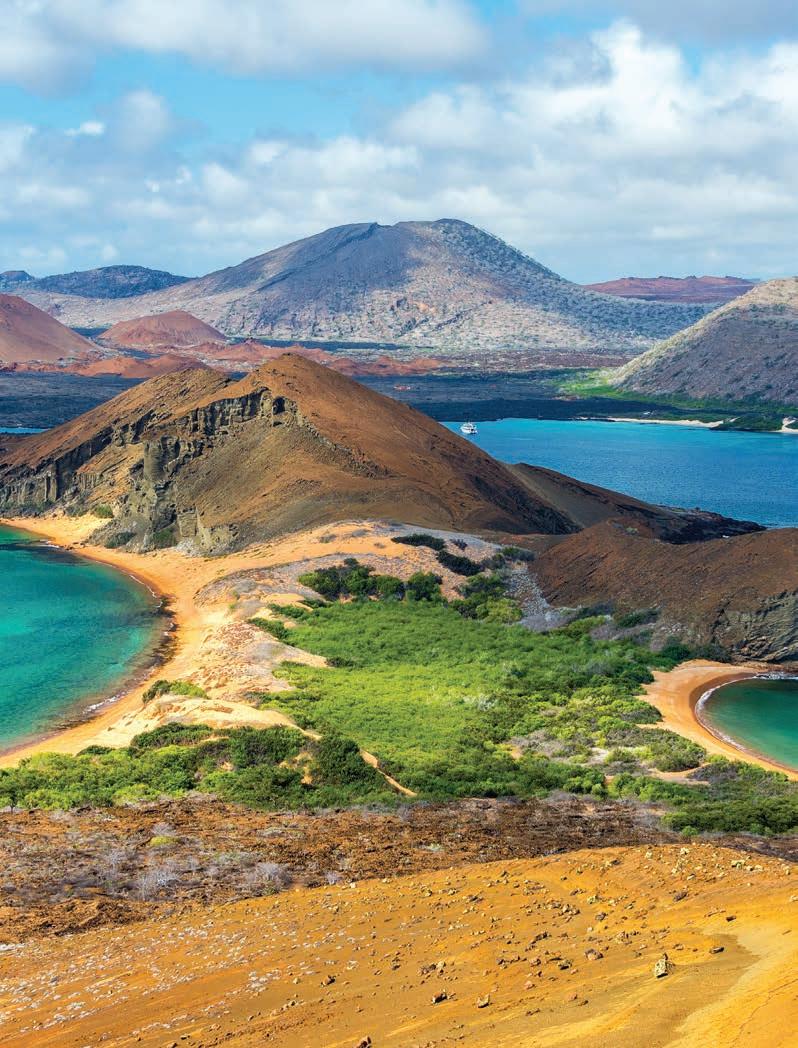
“The profound isolation of the islands and lack of natural predators means the wildlife have no fear of humans. This is by far the most unique element when visiting the Galapagos.”
have ever tasted, and locro, a local cheese, potato and avocado stew that ended up a favourite.
After lunch there is just enough time for a quick nap while we cruise to the next destination for another adventure, if you can peel your eyes away from the views, that is. Cabins are generous and have an oversized panoramic window that stretches from floor to ceiling. This is just one of the interior highlights – not surprising given the yacht has recently undergone a complete refurbishment. A calming palette of cream and pale turquoise blue is reinforced by accents of white-washed timber and splashes of colourful artwork on the walls. There is plenty of space for relaxing including the main lounge, observation deck, gym, sun deck and outdoor terrace with hot tub.

In today’s world of over tourism, the Galapagos have done a fabulous job protecting their bit of paradise so that it remains pristine. Did I mention there are no plastic straws, plastic shopping bags or polyethylene containers allowed? And despite the fact the region’s main industry is tourism, it is still possible to feel as if you’re travelling o the beaten track.
Rates for Metropolitan Touring’s 5-day/4-night Eastern Galapagos La Pinta cruise start at US$4666 (about A$6780). Please, visit: southamericatravelcentre.com.au/la-pinta or call 1300 784 794.

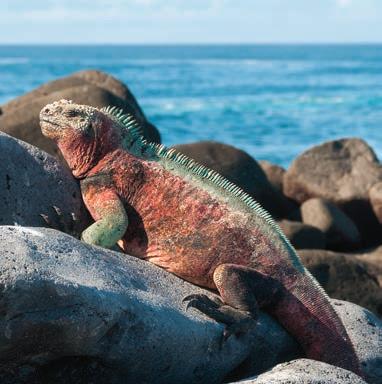

Flights | Fly direct from Sydney or Melbourne to Santiago, Chile and then on to Quito or Guayaquil, Ecuador, on LATAM Airlines. latam.com
Hotels | In Quito, stay at Casa Gangotena casagangotena.com
In Guayaquil, stay at Oro Verde oroverdeguayaquil.com
For more information, visit: southamericatravelcentre.com.au
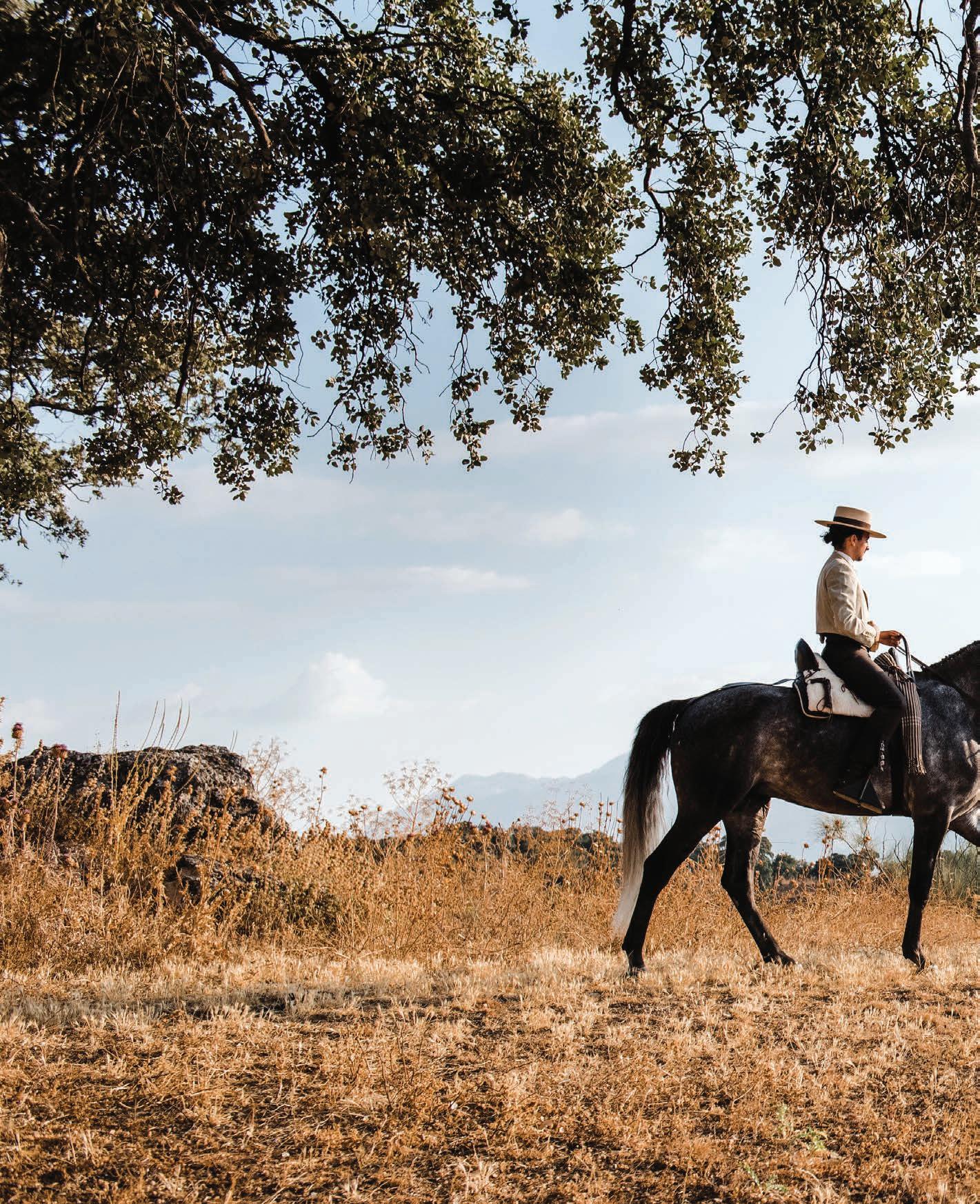
WITH THE SAME PASSION AND FLAIR AS ITS CELEBRATED FLAMENCO, THE INTOXICATING CHARMS OF ANDALUCIA IN SOUTHERN SPAIN WILL LEAVE YOU SPELLBOUND
 Words by ADAM JACOT DE BOINOD
Words by ADAM JACOT DE BOINOD
Meandering streams and undulating mountain slopes. Cork and olive plantations, oaks and r trees. Whitewashed villages with window grilles and narrow cobbled alleys. is is Andalucia whose very name conjures an alluring sense of exoticism and adventure.


I had come to Cordoba. Down the long, straight, narrow, cobbled streets I walked to the city’s unquestionable jewel, the Mezquita, the wonderful Muslim mosque whose serenity is heralded from afar by the belfry tower. is mosque-cumcathedral is as beautiful and singular as it was immense and important. At one time it was the greatest central place of prayer in the Muslim world with up to 20,000 male worshippers kneeling in unison. More than Mecca even. e real delight is the sequence of cleverly aligned diagonal columns throughout the interior comprising of red and white striped arches. A great place for hide and seek!
How nice to stay in such a classy boutique hotel as the Hospes Palacio del Bailío. Inside the decor is both traditional and modern with zen-like gold and silver leaf rectangles instead of pictures and large velvet chaise lounges down the corridors. Within the interior are courtyards of silence where birds itter and more fruit trees ourish. e back garden is charming and restorative with a summer swimming pool and a brightly
coloured orchard comprising cumquats, plums, pomegranates, oranges and lemons.
On I went to Granada, a city of unusual topography, rich in contrast, with plains and mountains, hills and scrubland, and the famous citadel of the Alhambra Palace. If you come to Granada you mustn’t miss it. It would be like going to Agra and not seeing the Taj Mahal or Cusco and Machu Picchu. It’s an uno cial wonder of the world. Imposing though plain perhaps from the outside, it sits on its promontory for all the valley to see. Uphill I went (don’t try to walk there) and along a sublime walkway of tall cypresses.

ere are three bits to the Alhambra. First are the towers a ording wonderful views across the city and the fabulously preserved and intact arena with classical columns in which to play out a gladiatorial or bull ghting fantasy. Secondly there are the immaculately kept gardens. Best to go across the footbridge to the Generalife, located outside the fortress, which houses gardens consisting of pine, cypresses and box topiary. irdly there’s the palace itself, punctuated by beautiful woodwork on the ceiling of the Golden Room, gorgeous >>
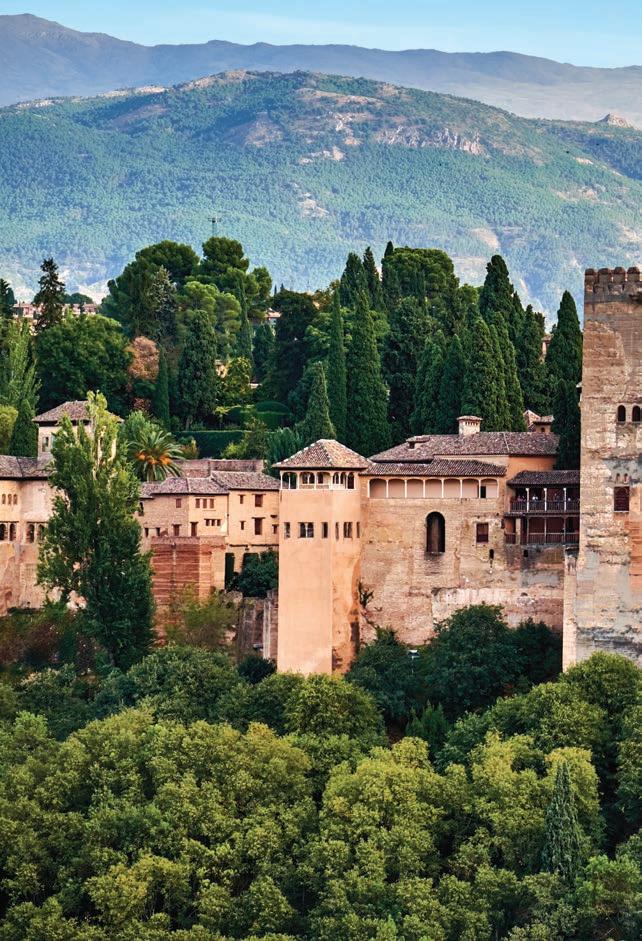






stonework in the Fountain of Lions, and wonderful carving with intricate geometric patterns throughout. e crisp box hedges align the long water pool with rigorous exactitude and work beautifully against the ornate arches of the interior.
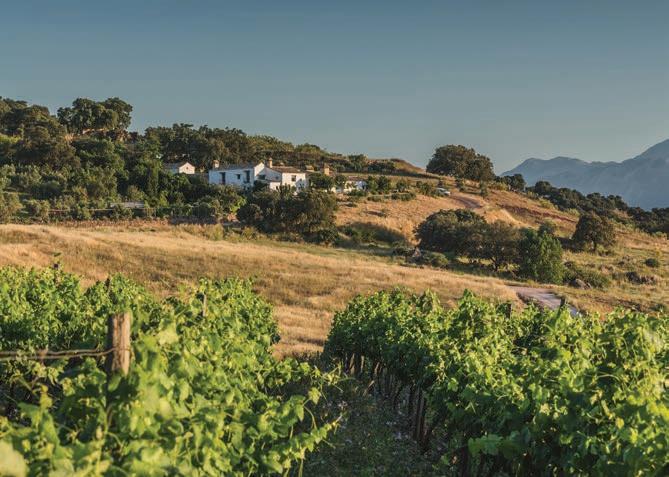
I reached Ronda where the Hotel San Gabriel proved the perfect base in comfort and location from which to explore the town. It was converted from an 18th-century mansion. There’s definitely something special about staying in ancestral homes with their valued artifacts and photos and with their antiques and mahogany furniture handed lovingly down within the family.
Ronda is renown for straddling a precipitous limestone cli , with its vertiginous drop to the El Tajo Gorge beneath. Take co ee or lunch and savour the vista at the Parador de Ronda, where the menu is excellent for its colour, avour and presentation as is, in particular, the creatively stacked and tasty vegetables.
Bull ghting is still active in Ronda for three days in September where it is beloved by a cionados though
Clockwise from above: Finca La Donaira; The Finca’s sitting room; Lusitanos horsemen.


Opposite page, clockwise from top right: The Puente Nuevo New Bridge over Guadalevin River, Ronda; Plaza de Toros (bullring) in Ronda; The Finca’s rustic courtyard.
increasingly controversial. You must visit the arena. e bull ghters have their very own chapel in which they meet their maker and I could palpably sense their tension in walking out into the middle to meet their opponent.
I came next to the Finca La Donaira near Montecorto via a foggy park full of cork trees, stripped of their bark to expose rich copper-coloured trunks and o er a visual beauty all of their own. e Finca is a haven for those attracted to walking, riding, hiking and wellness. In view are speckled plantations of olive trees and oaks generating many an acorn while white birds rest in harmony beside large Pajuna cattle.

To eat I sat across a table of international clientele as the cook came over to tell us “what we were about to receive” from the amazing house-grown produce, the result of a sturdy commitment to biodynamic practices. ere are vegetable gardens and fruit orchards, vineyards, olive trees and beehives. e farm produces much of its own organic wine, olive oil and honey.
e Finca is full of projects with a specialist dedicated to each. Seamus the horse whisperer attends to over 70 Lusitanos, glistening in fully exercised glory. Andrew the vegetable gardener has planted what Peter Rabbit would have coveted, and Gerhard shared my delight in showing me round his medicinal herb garden. >>



It’s important to grasp how much of a melting pot Andalucia truly is. Cave dwellers, Visigoths, Jews, Muslims, Romans, Catholics, Phoenicians, Greeks and converts forged an expression all of their own: amenco. Most towns will have at least one peña, a communal hall, and that night I went to La Plateria in Granada’s Albaicin district.
e locals had come to welcome back one of their own, Irene Rueda, a dancer who had hit the big time around the world’s amenco stages. And she lost no time in getting fully immersed. Her arms were held aloft and her head thrown de antly back. en she curved her arms round her body, bent her elbow and hammered her heels remorselessly home into the oorboards. On such a small stage one false step and you’re either at on your face or else in the audience.
Irene, through her passion and physicality, was to lose the ower in her hair the moment she chucked away her tasselled shawl. All part of the strident act of strutting and stamping with a proud carriage and an intense demeanour. ough not sensual, her coming undone was suggestive in e ect of the coming down of her facade, as she unleashed the raw
Clockwise from above: La Plateria; Granada Cathedral; Albaicin medieval quarter, Granada.
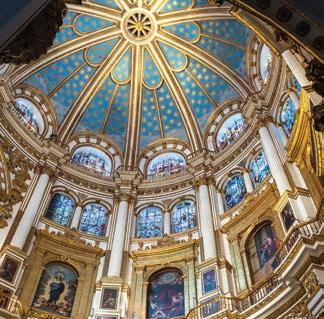
Opposite page, clockwise from main: Plaza de Espana, Seville; flamenco costumes on display; picturesque Albaicin.
reality of the dance. Across the arts, it’s rare for women to have the space to express their emotional gamut: be it anger, hate, aggression, longing or desire. It commanded as well as demanded my attention.
e evening possessed true duende: the speci c word for having a certain soul, a heightened state of emotion, expression and authenticity. It’s one of those untranslatable emotive words that many languages have, like hiraeth in Welsh for ‘a mingled feeling of sadness, somewhere between homesickness and nostalgia’ or, perhaps more closely, like the Portuguese saudade for ‘the longing for things that were or might have been’. Duende is typically connected with amenco and by the end of the evening I too had felt something of its spell. Inde nable but intoxicating and enraptured.
Flights | Andalucia is well served by airports at Malaga, Seville and Gibraltar.
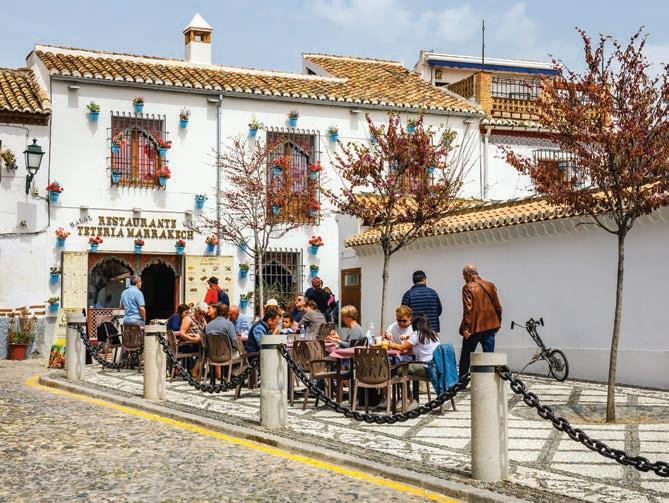

Hotels | Hospes Palacio del Bailío | Rates in a Junior Suite start from €450 (about A$737). hospes.com/en/palacio-bailio Finca La Donaira | Rates start from €340 (about A$549) per person, per night (two-night min). ladonaira.com
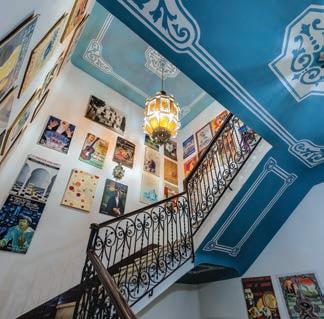
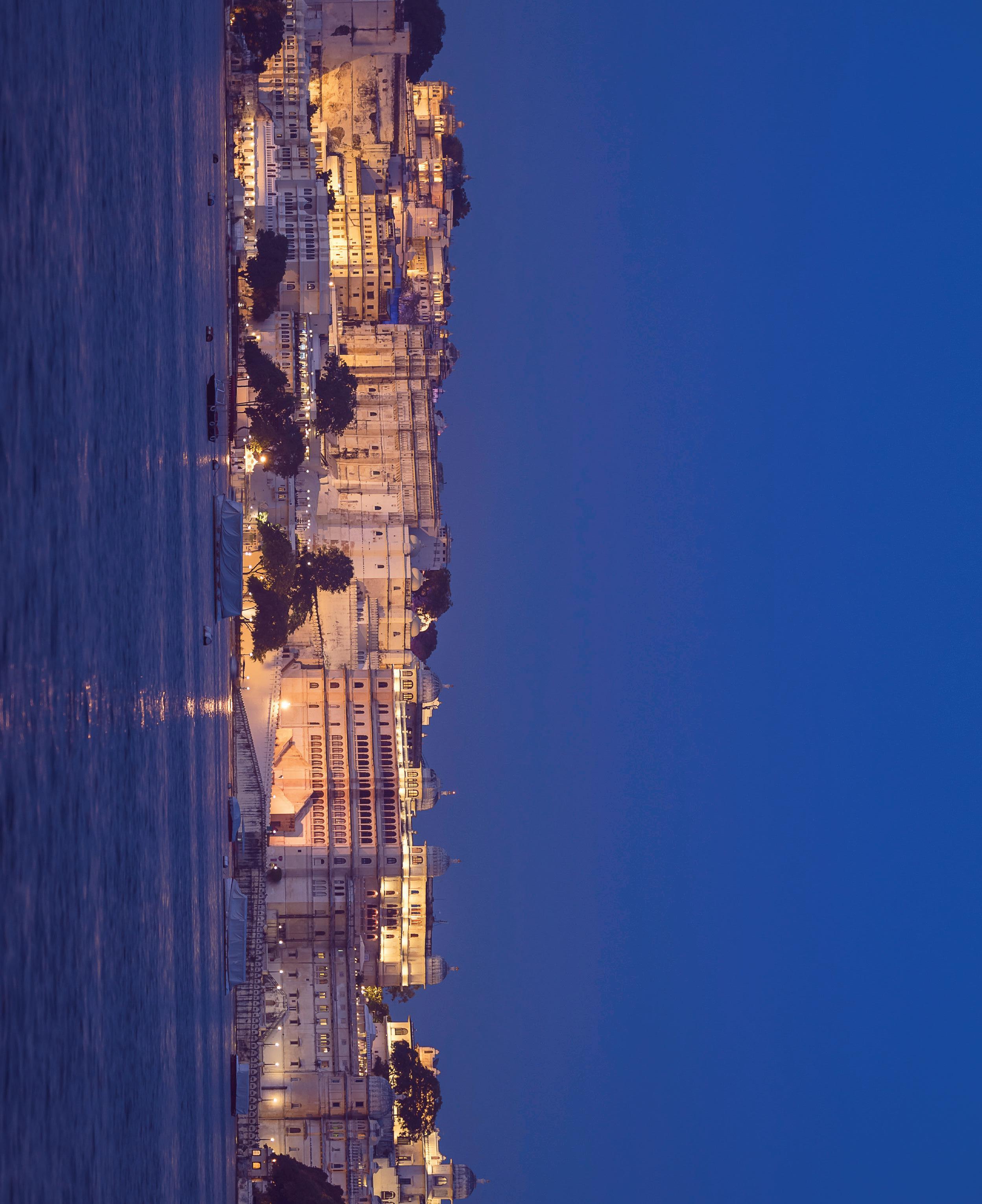

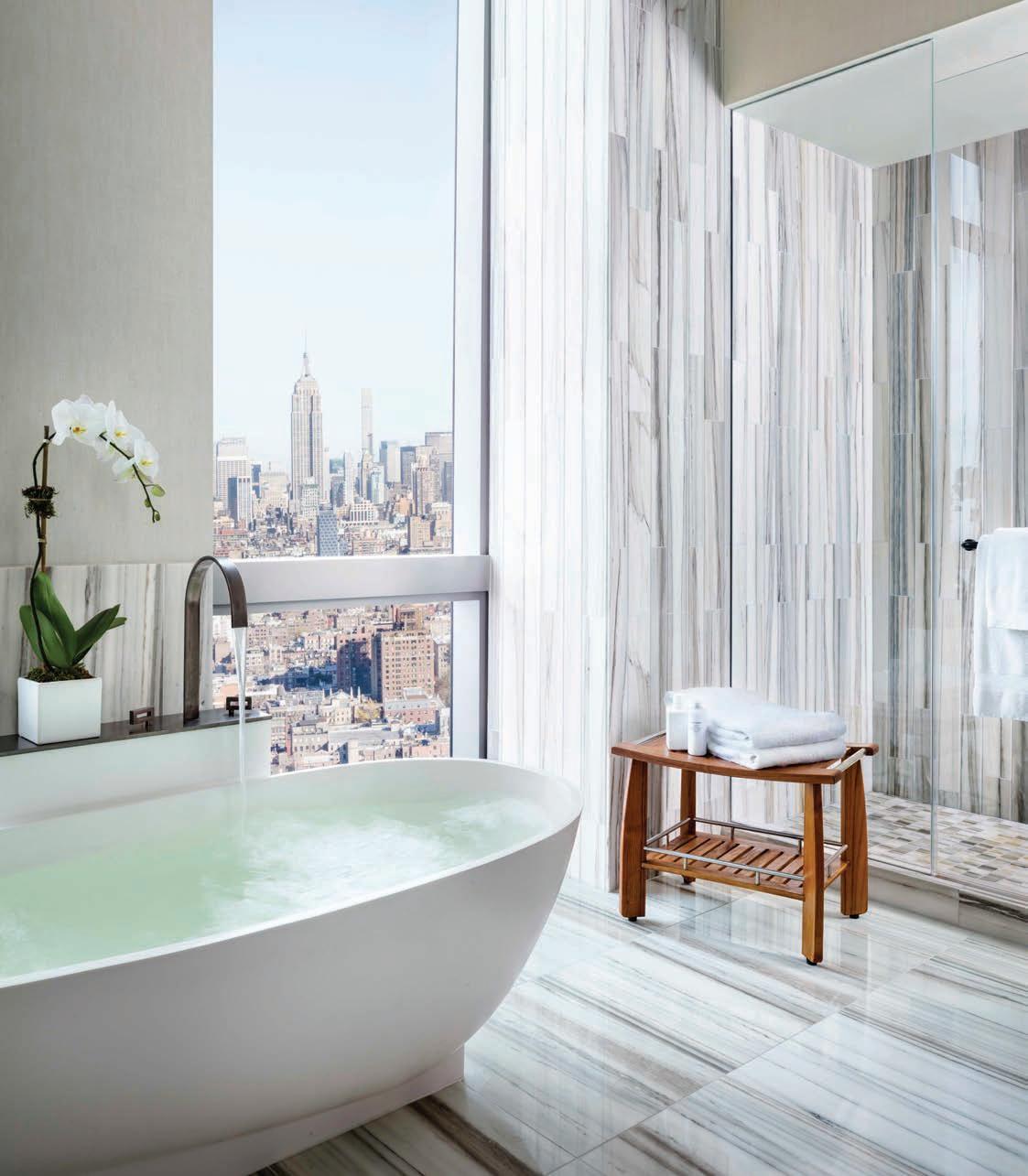


Size: 83 square metres
Price: From US$1080 excl. tax (about A$1582) per night
Reviewed by: Kate Symons
Details: hoshinoya.com/tokyo/en
At first glance, HOSHINOYA Tokyo blends into its smart surrounds – a high-rise flanked by high-rises in the city’s financial district. Yet it soon becomes clear, this is anything but a standard city building. On closer inspection, the hotel’s seemingly ordinary façade reveals itself – an intricate metal lattice, designed to mimic the kimono in both look and narrative.
(Traditionally, kimono patterns were designed to be di cult to discern from a distance.) It is a striking first impression and the first hint that HOSHINOYA Tokyo is a very special place. The next hint comes moments later when an enormous door, made from a single cut of cypress, opens to the hotel’s simple, yet somehow grand, lobby. Here, calm exudes thanks to the soaring ceiling and prominent use of natural materials, as well as a most delicate welcome. The scene is set.
Suite
Each of the hotel’s 17 oors comprises six guest rooms and a lounge, or ochanoma, designed to encourage communal living. e complimentary sake, tea, co ee and snacks help, but it’s hard to leave the suite. I am staying in a Kiku suite, or executive triple, the most premium of the three room styles. Classic shoji screens adorn the huge corner allotment, allowing the external lattice to work its magic inside the room by way of its delicate shadow. e open-plan space includes a dining table, small desk and large sofa, and a futon-style bed with plush linens.
e walk-in robe comes complete with pyjamas and a traditional kimono. e former you are invited to wear on your oor and the latter you’re welcome to wear anywhere in the hotel. Shoes, though, are not be worn. In fact, the pair you arrive in are taken from you on entry and stored in a bamboo box. e tatami-matted oors throughout the hotel make this unique arrangement a pleasure.
Would it be a Japanese hotel review without mention of the toilet? A sleek black bathroom features an oversized tub, but it’s the bells and whistles – most of which I dare not try – of the high-tech toilet that makes the strongest impression. Lifting the toilet seat with my bare hands now seems a chore.
HOSHINOYA Tokyo is located in the city’s nancial district, Otemachi. It is walking distance to the Imperial Palace East Gardens and well-connected to major sights and attractions via the city’s excellent rail network.







Where do I start? HOSHINOYA Tokyo is awash with special touches, but perhaps the most memorable of all is the in-house onsen. e two baths halls, separated by gender, are fed by hot spring waters drawn from 1500 meters below the ground. And above, as you soak, is a framed view of the sky, thanks to the dramatic open-roof chamber.
Nippon cuisine meets French culinary techniques at HOSHINOYA Tokyo’s in-house restaurant and the result is exquisite. Created by Executive Chef Noriyuki Hamada, a bronze medallist at the 2013 Bocuse d’Or World Finale (think of it as the culinary Olympics), HOSHINOYA’s 10-course tasting menu boasts wow factor to boot. Tough choice, but perhaps the most spectacular of the courses, at least visually, is the Five Flavours of Delight (above), a masterpiece of ve delicate morsels, each representing one of the standard avour pro les – sour, sweet, bitter, salty, and umami. Nothing standard about this, though. e precision is extraordinary. e experience, unmatched. My only complaint, the private dining arrangement. I prefer the atmosphere of fellow diners. In-room dining is also available.


Size: 130 square metres
Price: From THB 42,500 (about $2043) per night
Reviewed by: Gary Allen
Details: thesiamhotel.com
You often hear of hotels being described as an urban sanctuary and The Siam hits that mark, spot on. When you arrive, you leave the craziness of Bangkok city behind you and can feel any travel anxiety and fatigue melt away. It’s truly an oasis with all the light, shade and live plants and trees in the lobby area. There is an abundance of five-star hotels in Bangkok, but The Siam is di erent. Designed by renowned American architect Bill Bensley, it is light and airy and features plenty of interesting antiques and memorabilia throughout the common areas that are sure to leave you fascinated. It’s almost a museum with all of its authentic curios and original pieces. With the hotel’s location in the quieter royal district of Dusit, and right on the Chao Phraya River, I loved that there were so few high-rise buildings around. Instead, verdant river frontage makes for a true sanctuary
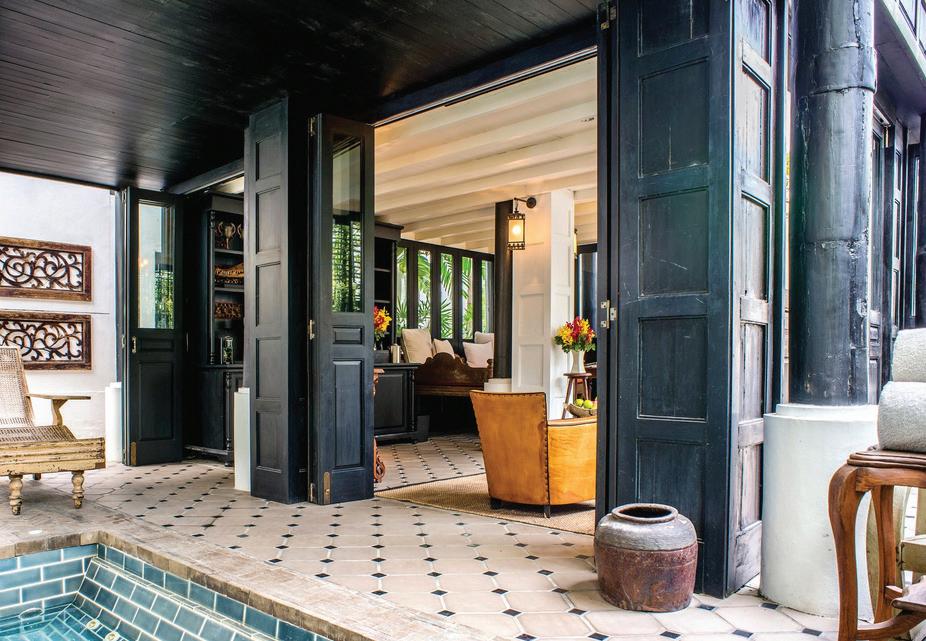
The Siam has just 39 suites and villas, and all have their own personality and panache, as does anything designed by Bensley. With a mix of Thai and Art Deco influences, along with captivating pieces of art, you won’t be disappointed with your accommodations. Natural light and vegetation with water features are outside your door. I stayed in a Courtyard Pool Villa which, as the name suggests, had an inviting outdoor space complete with a plunge pool. Inside, a spiral staircase leads to a beautiful private deck with lounges available to help take in the river views. High ceilings are a treat and the bathroom is spacious with a huge soaking tub and separate toilet and shower.

When you think of Bangkok, the vision of a busy city often comes to mind, and that’s just what you get: tra c, people on the move and always a lot happening. ere is a quieter side to Bangkok though, and the Dusit district is where you’ll nd it. It’s a little bit of a distance from the city’s shopping and nightlife, but that’s what makes the location of the hotel so great. Dusit has been considered the ‘new’ royal neighbourhood since the early 20th century when King Rama V returned from Europe with a vision to emulate the wide, tree-lined boulevards he had so admired. As a result, Dusit’s shaded streets are lined with gardens while private homes are surrounded in greenery. ere are numerous parks and museums within walking distance, various temples, and one of the most photographed statues in Bangkok, the King Rama V monument. If you want nightlife and shopping, don’t worry. e hotel makes sure you get to where you want to be.
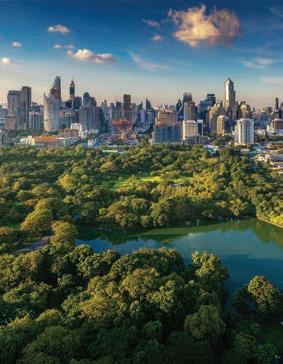

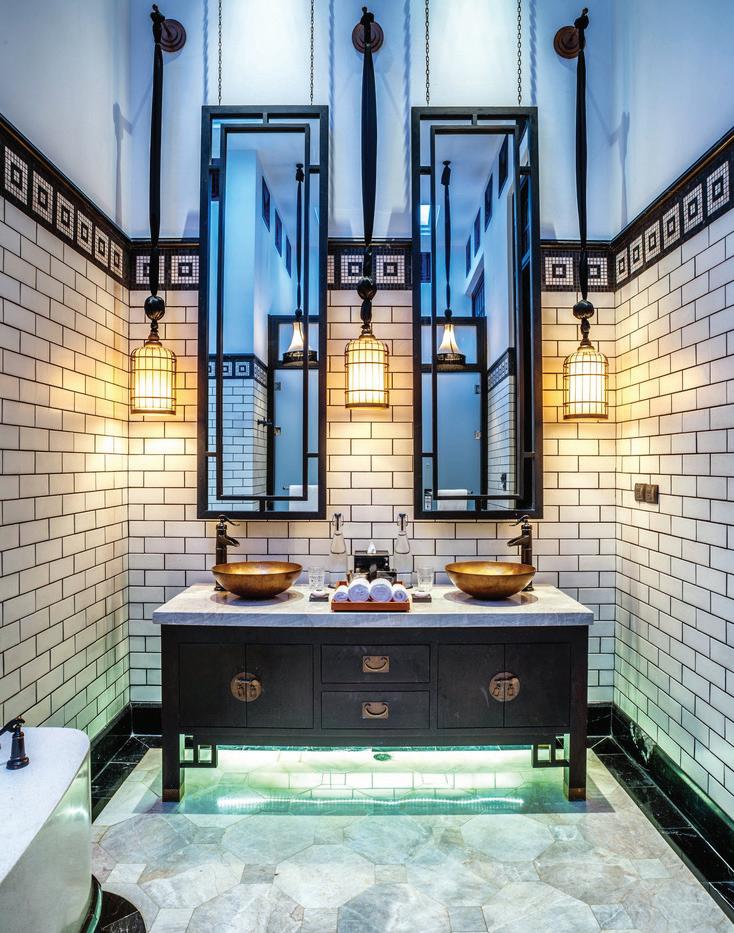
You would be hard pressed to find bad Thai food in Bangkok. It is a cuisine with such a unique flavour, which is why it’s loved throughout the world. But even better is gourmet Thai food, and that’s just what’s on offer at The Siam’s signature Chon restaurant. Here, Chef Damri and his team add flair and personality to the much-loved Thai specialties such as massaman curry and pad Thai. Have a pre-dinner drink on the pier and maybe enjoy dessert there as well, to top off a magical evening. For more casual dining, Deco Bar and Bistro serves Western dishes for those in need of a change. There is also the newly launched Cafe Chao, which is a reinvention of the old Cafe Cha with an expanded terrace and a new menu coming soon. It’s the perfect place for afternoon tea, a catch up with friends, business meeting or simply some quiet time.
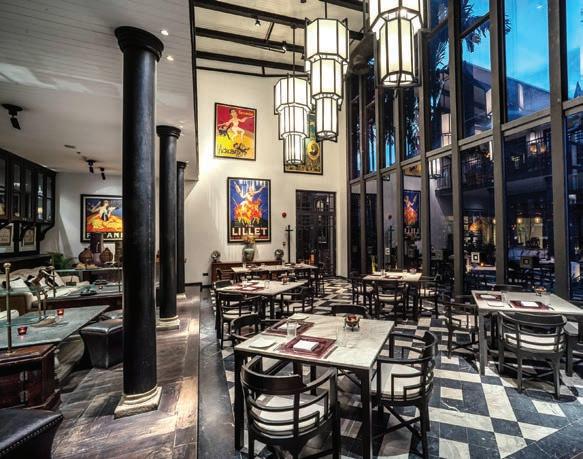
All rooms come equipped with a Samsung mobile with 4G, including complimentary data use, and free local and international calls. You’re welcome to take the phone with you when you are heading out, which is so handy. ere is also a complimentary shuttle boat that will take you down the Chao Phraya River in luxurious comfort, stopping at various locations. Lastly, the Opium Spa should not be missed, especially after a day out in Bangkok or during a rainy afternoon.
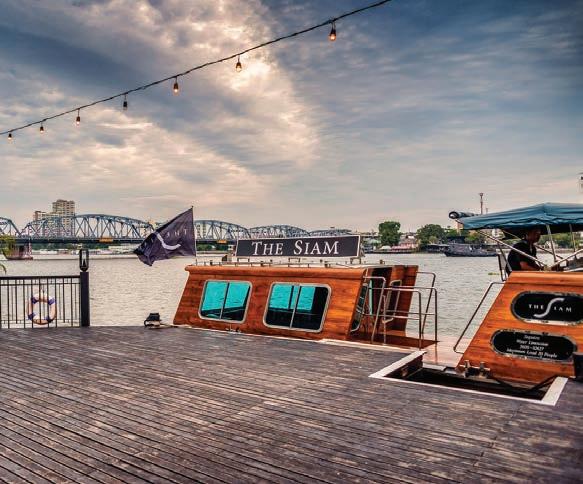

246 Spring St, New York, NY 10013, United States


Size: 63 square metres
Price: From US$875 (approx A$1246) per night
Reviewed by: Kate Symons
Details: thedominickhotel.com
Sleek and slender, The Dominick stands high above its neighbours at 46 storeys and, as I soon discovered, has standards to match. The two-level lobby makes a grand first impression. Statement woodwork, stone floors and leather seating is surrounded by industrial accents, paying homage to the SoHo neighbourhood. Perhaps the only thing more impressive on arrival is doorman Stanley, whose warm and informative welcome was a sight for sore, long-haul e ected eyes. Of note, The Dominick was formerly the Trump SoHo Hotel. The hotel ceased association with the controversial president in 2017.
Suite
ere are 391 rooms and suites at e Dominick, but it doesn’t feel that way given a maximum of just 12 are allocated to each oor. Rooms are classi ed by views, although there’s hardly a dud deal with the Hudson Square neighbourhood, Hudson River and iconic NYC skyline the three options. My one-bedroom suite features sweeping views of the Hudson River, which I can happily enjoy from the bathroom, bedroom and separate living space. Having arrived at dusk, my curtains had already been drawn, which made for a spectacular reveal. All rooms and suites are decked out in custom Fendi Casa furnishings with a sophisticated earthy palette. My oversized marble bathroom includes a stand-alone rain shower, but why stand when the soaking tub is tucked nicely under a oor-to-ceiling window?
Even on the star-studded Manhattan map, SoHo has been a long-time standout. The hip ‘hood, comprising 26 blocks south of Houston Street (its moniker an amalgam of ‘south’ and ‘Houston’), is packed with notable shopping, dining and galleries. A stroll around its cobblestone streets, surrounded by the city’s famous cast-iron facades, is an invigorating experience in itself. Hard, though, to avoid ducking into a shopfront or seven. The independent boutiques of Prince Street sit nicely alongside high-end retailers such as Prada, Marc Jacobs, Chanel, and Dolce & Gabbana while good eating is everywhere – Balthazar, Jack’s Wife Freda and, home of the cronut, Dominique Ansel Bakery, won’t disappoint. SoHo is an easy walk to the West Village and Tribeca, and, as it turns out, plenty of other neighbourhoods once you lose track of time.
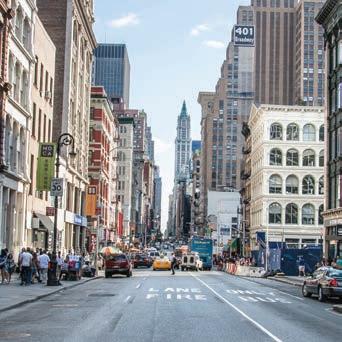

ere’s an added sense of satisfaction that comes with the discovery of a genuinely blissful retreat amid the hustle of one of the world’s most thriving cities. Opening last year, BABOR Signature Spa at e Dominick delivers exactly that. It is the German skincare brand’s rst signature spa in North America, and a ne debut with nine treatment rooms and two Turkish hammams over two oors. e hotel also o ers three spa suites, which connect to a couples-sized treatment room. Relaxation doesn’t end here. e Dominick’s outdoor pool is an urban oasis and it goes down ever better with a cocktail in hand.


The Dominick’s dining offering is evolving as I type and Terrace on 7 is, at least for now, the flashy newcomer. Located next to the hotel’s seasonal pool, and with SoHo views, the indoor-outdoor restaurant and lounge is a stylish space serving fresh Japanese fare and fantastic cocktails. The clock is ticking on the unveiling of the hotel’s signature restaurant, Vestry, helmed by Michelin-starred chef Shaun Hergatt. Watch this space. Meanwhile, breakfast is available at Mezzanine while Café Mezz offers light bites and drinks.

From Johannesburg, to Kruger National Park , South Africa is the ideal destination for first time visitors to the continent. Take in the beautiful natural scenery, the famous Big 5 animals and meet locals in their traditional cultural villages.
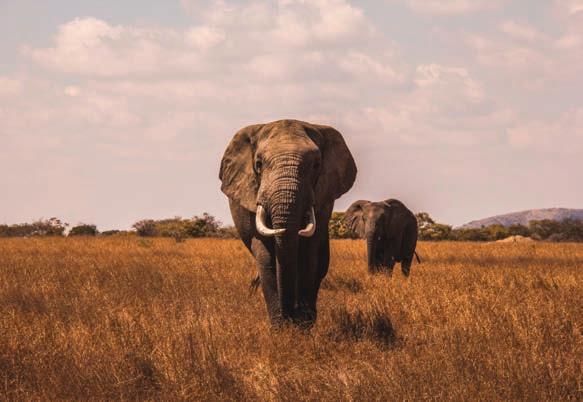
A$4,995pp
PRICES ARE BASED ON LOW SEASON SURCHARGES APPLY FOR OTHER PERIODS
TRAVEL DATES
01 MAY – 31 AUGUST 2020
13 nights quality (4 star) accommodation with daily breakfast
Airport transfers
Economy flight from Durban – Port Elizabeth
3 x Lunches & 3 x Dinners
Activities and Sightseeing as specified
English speaking driver guide
Visit Johannesburg, Mpumalanga, Zululand, Umhlanga, Knysna, Oudtshoorn, Cape Town and Eswatini cultural village
*Price changes may occur due to matters outside our control which increase the cost of the product or service. Such factors include adverse fuel surcharges, currency fluctuations, taxes and airfare increase. Block out dates may also apply. Some, day touring may not be available on particular days due to religious or local laws. Hotels featured on Itineraries are used as a guide for the standard of accommodation, these may change during a quote and are not guaranteed until final payment has been received. *Special offers cannot be used in conjunction with any other offer or discount MW Tours displays on (but not limited to) brochures, website, flyers and email. This offer supersedes all previous dates and offers, valid on new bookings only. Subject to availability at time of booking. Valid on seat-in-vehicle departures only (not when booked with private vehicle). Strictly applies to land only, twin share, adults only, no reduction on child rates.
Sail on board Seabourn Sojourn and explore Tasmania, South Australia and the wild, beautiful Coral Coast of the Indian Ocean. Then, enjoy four nights in W Bali luxury resort – in the heart of Seminyak – Bali’s most stylish and high-end area.
A$15,599pp
PRICES ARE BASED ON TWIN SHARE SPECTACULAR OCEAN FACING ROOM
TRAVEL DATES
04 – 28 MARCH 2020
Return international airfares ^ex Australia
20-night all-inclusive luxury cruise on Seabourn Sojourn Complimentary premium alcohol available on board at all times
Welcome onboard champagne and complimentary in-suite bar
Onboard world-class dining, further enhanced through a culinary partnership with Chef Thomas Keller
Arrival and Departure Transfers in Bali
4 nights accommodation at W Bali – Seminyak with breakfast daily
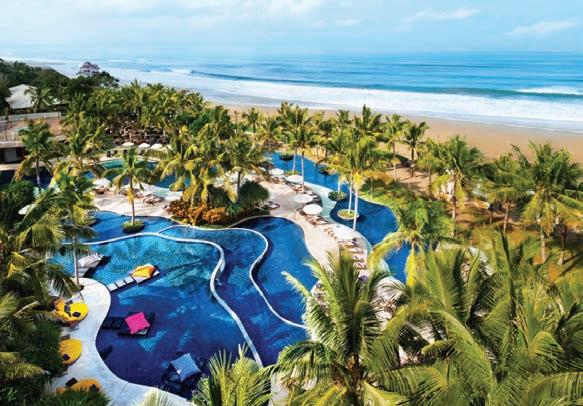
*Fares are per person, in complete twin accommodation as specified, based on A3 outside twin share for Seabourn Sojourn Cruise departing on 4th March 2021. All other cabin categories are at an additional surcharge. Unless stated otherwise, inclusive of all discounts, taxes and charges (which are subject to change). Subject to limited availability. Conditions apply. ^Flights are ex Bali arriving into Sydney, Melbourne or Brisbane other arrival points available at a surcharge. A limited number of staterooms have been set aside at these special fares, once sold fares may revert to a higher fare. Fares may be withdrawn or varied. Valid for new bookings only, not combinable with any other offer. Prices are correct at 24JAN20 however are subject to availability and currency fluctuation until the time that the package is paid. Whilst all information is correct at the time of publication, offers are subject to change.
FOR MORE DETAILED PACKAGES
luxurytravelmag.com.au/experiencesbyluxurytravel








